




New York’s state legislature has recently passed a groundbreaking bill aimed at curbing the rampant resale of restaurant reservations. This new legislation, dubbed the Restaurant Reservation Anti-Piracy Act, awaits the signature of Governor Kathy Hochul to become law.
The bill mandates that third-party reservation services such as Resy and OpenTable must obtain explicit permission from restaurants before listing, promoting, or selling reservations on their platforms. “New Yorkers should not have to pay shady middlemen just for the right to a dinner reservation. With this legislation, we are ensuring that families can celebrate a graduation, anniversary, or birthday without a $250, $500, or even $1,000 cover charge. We also protect restaurants from increased cancellations and protect workers from lost tips. A true win-win-win. I want to thank my
Senate sponsor Nathalia Fernandez and the New York State Restaurant Association for their work to pass this bill,” said Assemblymember Alex Bores.
Introduced in May by Senator Fernandez, the bill quickly gained traction. It passed the State Assembly on June 3 and the State Senate three days later. Senator Fernandez emphasized the necessity of this legislation, stating, “The bill will curb the rampant exploitation of online restaurant reservations. Between charging exorbitant rates for a reservation, to doublebooking reservations, to phantom reservations leaving diners with fewer options and restaurants with empty tables—the onus is on us in the Legislature to take action.”
Melissa Fleischut, president and CEO of the New York State Restaurant Association hailed the bill as a “major victory” for the industry. She remarked, “Today is a major victory

“Now, when diners do have the ability to dine out, they will no longer have to compete with predatory bots capturing reservations and reselling them at exorbitant prices.” — Melissa Fleischut
for the hospitality industry in New York, setting a precedent for the nation. Our members work hard each day to create a desirable dining experience. Now, when diners do have the ability to dine out, they will no longer have to compete with predatory bots capturing reservations and reselling them at exorbitant prices. And restaurants will no longer be left with empty seats from unauthorized thirdparty reserved tables. This legislation supports restaurants, diners and the legitimate apps uplifting the hospitality industry. We hope the Restaurant Reservation Anti-Piracy Act inspires other states to push back against bad actors taking advantage of restaurants’ hard work and consumers.”
Similarly, executives from leading reservation services have expressed their support for the bill. Debby Soo, CEO of OpenTable, said, “The passage of this bill is a meaningful one for restaurants and will help protect their bottom lines by reducing the ‘no shows’ caused by fraudulent reservations. We are pleased to see New York take a strong stance to support its restaurants.”
Pablo Rivero, CEO of Resy, echoed these sentiments, stating, “Resy joins many of its New York restaurant partners
in applauding the New York State Legislature for passing the Restaurant Reservation Anti-Piracy Act. This important legislation is a significant step forward to protect restaurants and diners from reservation fraud.”
The practice of reselling reservations has become particularly problematic in New York City, where securing a table at popular restaurants can be notoriously difficult. Wealthy New Yorkers have been known to spend hundreds of dollars to secure a reservation at some of the city’s most sought-after dining spots, including Tatiana at Lincoln Center. Prices for these reservations can vary widely, with listings on platforms like Appointment Trader ranging from $80 to $365 for a table at Tatiana.
Jonas Frey, the founder of Appointment Trader, acknowledged the issues raised by the bill but defended his platform. “I absolutely understand where the legislation is coming from,” Frey said. “New York slopped us up like nobody’s business because it was so hard to get a reservation.” He noted that his website, which has over 30,000 customers in the New York region, was designed to help people get tables at a fair market price. However, he admitted that bots were a problem and mentioned measures his platform has taken to combat them. NBC News continued on page 116

The world-renowned Michelin Guide, often hailed as the gold standard in the restaurant industry, is expanding its reach to Texas. In 2025, the Guide will be assessing restaurants in Austin, Dallas, Fort Worth, Houston, and San Antonio. This move marks a significant milestone in the culinary history of Texas, putting its diverse and vibrant food scene on the global map.
The Michelin Guide began as a printed booklet in France in 1926, offering food recommendations to Michelin tire customers. Over the decades, it has evolved into a prestigious global culinary reference. The expansion into Texas is part of Michelin’s broader strategy to partner with local and state tourism boards, showcasing regional cuisines to the world.
The expansion of the Michelin Guide
“In
order for Dallas to take the next step, there is a level in the middle where a lot of customers and restaurateurs are content. If Michelin coming is going to help push a little more as far as bringing something new, excitement, people trying new things—for sure [that would be good].” — Bruno Davaillon
into Texas has been facilitated by financial support from Travel Texas and local tourism boards of the five cities involved. While the exact financial details remain undisclosed, past ventures, like the Florida Michelin Guide, have involved substantial investments. For instance, Florida’s participation cost cities and the state $1.5 million over three years. Michelin inspectors have been quietly assessing

the dining scene in Texas for some time now. This meticulous evaluation process underscores the Guide’s commitment to maintaining its high standards of excellence.
Tim Fennell, director of Travel Texas, highlighted the potential benefits: “The Michelin Guide Texas will illustrate to global travelers the culinary journey that’s waiting to be discovered in our state, featuring restaurants that embody our heritage and introducing innovative chefs and local artisans who are redefining our food scene.”
The introduction of the Michelin Guide to Texas is expected to bring numerous benefits. Enhanced food tourism will attract both recreational and business travelers, drawn by the allure of Michelin-starred restaurants. This, in turn, will attract ambitious chefs and culinary professionals eager to earn Michelin stars and advance their careers. Additionally, the influx of tourists and continued on page 107



on page 102



In the competitive world of luxury hospitality, culinary excellence has become a key differentiator. As discerning travelers increasingly seek unique dining experiences, hotels are recognizing the strategic imperative of attracting renowned chefs and their brands. These culinary partnerships not only enhance the guest experience but also drive brand prestige, increase occupancy rates, and generate significant revenue.
Atlantis Paradise Island, renowned for its breathtaking beauty and luxury, has added a new gem to its culinary crown: FIELDTRIP, the acclaimed fast-casual rice bowl restaurant by James Beard Award-winning chef JJ Johnson. FIELDTRIP, originally
“Atlantis Paradise Island is a prime example of how strategic culinary partnerships can transform a destination. The addition of
FIELDTRIP
not only enriches our dining portfolio but also underscores our commitment to offering world-class experiences.” — Audrey Oswell
founded in Harlem, New York, is celebrated for its community-driven approach and dedication to sustainability. It is one of the few fast-casual establishments to be named among Esquire’s “America’s Best New Restaurants (2020).” Chef JJ Johnson, recognized for his innovative Afro-Caribbean cuisine, brings his unique culinary perspective to Atlantis, enriching the resort’s diverse dining options.

“Atlantis Paradise Island is one of the most iconic and epic destinations there is, and the opportunity to join the family with FIELDTRIP is super exciting,” Johnson noted. “The resort is one of the world’s most photographed backdrops, and I hope that FIELDTRIP’s global menu speaks to its travelers of all international backgrounds. FIELDTRIP Atlantis will be a place for all guests of the resort to
gather over food.”
For hotels, partnering with acclaimed chefs can significantly enhance brand prestige and appeal. These collaborations signal a commitment to quality and innovation, attracting a clientele that values exceptional dining. The presence of a celebrated chef can also elevate a
continued on page 108
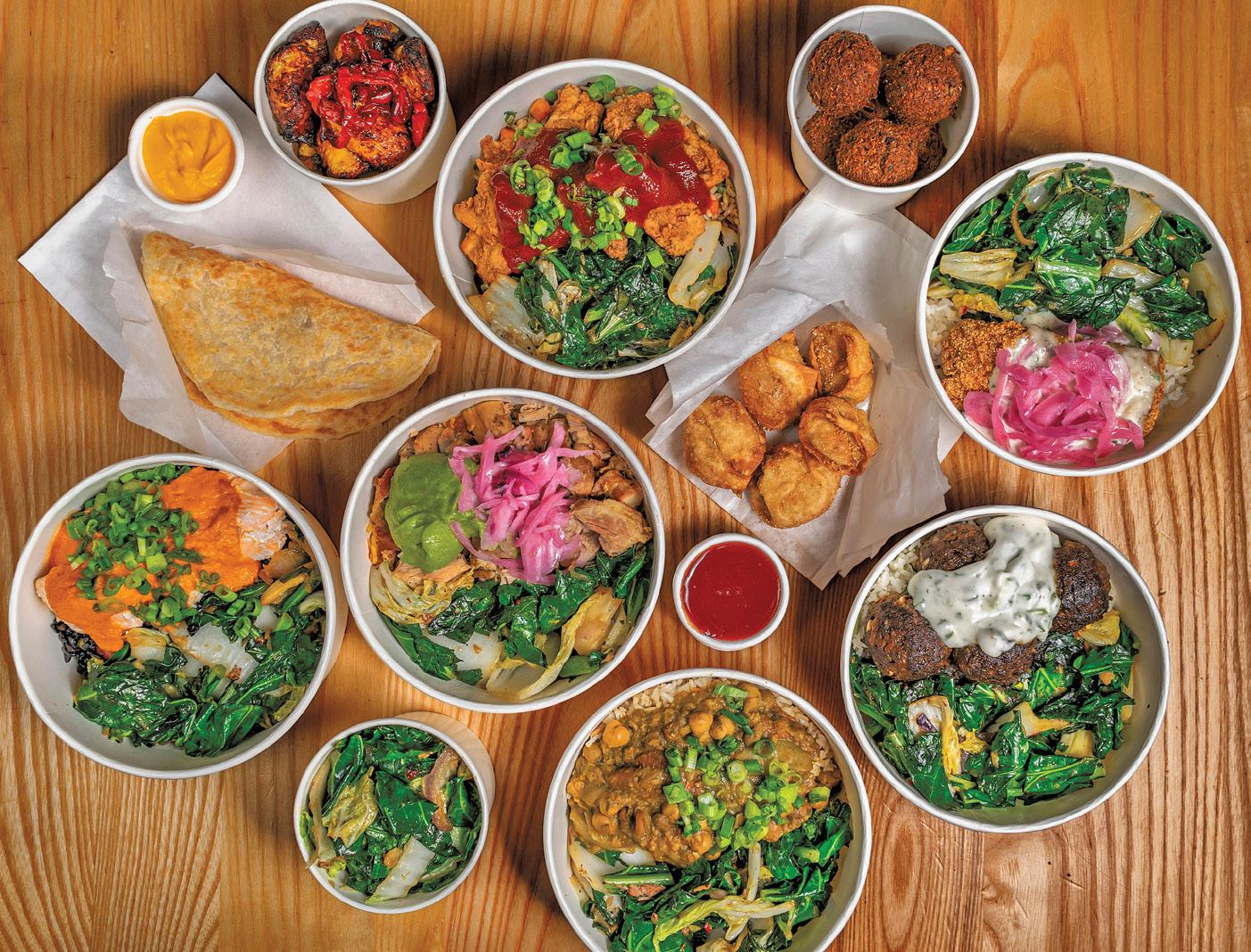

The demands of working in the foodservice industry are relentless, and that has long made it difficult to find and retain good help. In today’s labor market, that challenge has become particularly daunting, with high turnover, low unemployment, and many industries fighting for skilled workers. Rising costs have made it challenging for both employees and employers to achieve financial stability.
The reasons recruiting and retaining staff is so difficult is complex, and there’s no simple solution. Yet there are still ways restaurant owners can increase their chances of being a sought-after employer in a tight labor market.
Foodservice turnover rates are notoriously high, currently at around 75%. Why is it so high? There are a number of factors that make it difficult to attract and retain workers.
Work can be physically demanding and stressful. Employees are on their feet their entire shift, and speed is critical in getting tables served and keeping customers happy. Not only are employees under pressure to do the job quickly and well, but they also do it with a smile because much of their income often relies on tips, which brings us to…
Wages are typically low for foodservice workers, with many roles reliant on tips, which can be inconsistent or unpredictable. That makes budgeting difficult. Just like companies have been hit with rising costs, so have consumers, and that includes employees who need to support themselves amid rising rent and grocery costs. Coupled with unpredictable or inconsistent schedules, and working at a restaurant can make family

relationships and planning a challenge.
Unfortunately, some unsavory business owners make the foodservice industry unattractive. The industry has more wage and hours violations than any other industry, according to the Department of Labor. Wage theft, particularly common among tipped employees, is a concern to workers, as is sexual harassment. The EEOC reports the accommodations and foodservice industry has more reported instances of sexual harassment than any other industry.
Restaurant work is difficult, and potential employees have more choices than ever. Retail jobs often keep employees on their feet much of the day and involve interacting with the public, but are often slower paced than the dinner rush at a restaurant. Customer service reps may deal with angry customers, but have more remote opportunities, consistent schedules, and bonuses.
The competition isn’t limited to other industries. For independent operators,
competing with large chains in the same industry poses challenges. National and international brands can often offer health insurance, PTO, tuition or student loan benefits, and other benefits that are difficult or impossible for small businesses to compete with.
While the foodservice industry has always had high turnover, in recent years there have been large shifts in consumer behavior and the industry and labor market at large that have influenced staffing needs and shortages.
The pandemic led to sudden volatility in the foodservice industry and the world. Many restaurants closed permanently, while others changed their hours or pivoted hard towards takeout and delivery, which changed the internal staffing needs of the business. Parents suddenly found their childcare arrangements less reliable, as schools went virtual and daycares had limited capacity.
New opportunities for delivery drivers opened up in the gig community, which enabled workers to make their own schedules and work as much or as little as they wanted.
Some who left found new careers in different industries and never returned. Those who stayed in the foodservice industry had to deal with many challenges. They dealt with changes in health safety protocols, working while wearing masks and spending more time cleaning and sanitizing surfaces.
They were considered frontline workers, deemed essential. They interacted with the public amid unknown risks, ensuring strangers got food while scared for their own health. Many reported going to work despite having symptoms due to lack of paid sick leave and fear of retaliation. They also often experienced a change in customer interactions - and not for the better. Despite a lot of press continued on page 102

Over $75,000 Goes To 20
Since Inception, Over $2 Million Has Been Awarded
Les Dames d’ Escoffier New York (LDNY), the nonprofit educational, scholarship, and advocacy organization serving women in the culinary, beverage and hospitality industries, awarded 20 meaningful scholarships to recipients enrolled in accredited culinary and pastry arts, nutrition, food science, hospitality, and wine and spirits/fine beverage programs in New York and New Jersey.
The students were recognized and celebrated for their current achievements and promising futures at the annual LDNY Scholarship Awards held in Manhattan at the Barry Callebaut Chocolate
Academy New York catered by Dame Tara Khattar of Maison Tara New York with libations from Ruffino Estates.
“This year’s recipients have shown exceptional academic achievements, clear career aspirations, and a dedication to uplifting others. LDNY is committed to providing them with mentorship, ongoing guidance and networking opportunities,” explained Barbara Sibley, President of LDNY.
Since its inception in 1977, LDNY has awarded more than two million dollars to over 1,000 recipients. In her keynote address, Wanda Mann, Founder of Wine with Wanda, and Past President, LDNY,
reflected on the impact of scholarships, “LDNY’s scholarship program shows how leveraging our collective positions and resources empowers the next generation of women leaders in our industries. Scholarships provide vital financial support and affirmation of the recipients’ talent and potential; they are a powerful motivator. However, the scholarship mission is also deeply personal to me. I attended boarding school and college and studied abroad on scholarships, which changed the trajectory of my life,” said Wanda Mann.
She added, “What are some of the lessons I’ve learned along the way that may


Joyce Appelman is the SCOOP News Editor and Senior Contributing Writer for Total Food Service and previously the National Communications Director for C-CAP, Careers through Culinary Arts Program. An industry leader supporting education and scholarships, she has been instrumental in opening career opportunities for many young people in the foodservice industry. Email her at joyceappelman@gmail.com
help you? Here are my five tips.
1 - If you wait to be perfect, you’ll never get anything done. I first heard those words stated by award-winning television journalist Cynthia McFadden about 25 years ago at an event I attended. I have no recollection of the event or who hosted it, but her words have always stayed with me. Some years later, I had a boss, a brilliant woman with a Ph.D. in Education, who always said, “Done is better than perfect.” Clearly, these two continued on page 100


Staff from the National Restaurant Association brought a prorestaurant message to attendees of the Republican National Convention this week in Milwaukee, Wi., and will share a similar message at the Democratic National Convention next month in Chicago.
“The restaurant industry is an engine of U.S. economic growth, expected to contribute $1.1T in sales to the economy – or roughly six percent of real GDP –and employ more than 15.7 million people in more than one million locations. The next few months will be pivotal to the business climate restaurant operators will be operating in for the next four years, so there is no better time to encourage support for the pro-restaurant policies essential to growth and vitality of restaurants in every community,” said Sean Kennedy, executive vice president for Public Affairs for the National Restaurant Association.
Policies and regulations topping discussions included:
The Credit Card Competition Act (CCCA) would open up the credit card processing market to competition outside of the two dominate credit card companies. Introducing competition will lower processing fees, introduce greater security and fraud prevention, and allow smaller companies to compete in the processing marketplace.
“Two credit card companies dominate swipe fee processing, pushing costs higher and higher for restaurants.

In an industry with an average threeto-five percent margin, the unexpected and constant inching up of swipe fees is unmanageable,” said Kennedy. “The CCCA would empower restaurant owners to choose the most cost effective and secure network to route a credit card transaction. The impact of this would be significant – saving restaurant operators and consumers billions of dollars a year.”
The FTC proposal, Unfair or Deceptive Fees Notice of Proposed Rulemaking, seeks to eliminate all fees or surcharges, forcing restaurant operators to change menus to reflect a single “Total Price” for each item. The Commission puts the cost for doing this at more than $3.5 billion dollars for the restaurant industry, forecasting a restaurant’s menu redesign will cost almost $5,000.
“The FTC’s proposed ‘junk fees’ rule will unleash nothing but chaos and confusion for restaurant owners and diners alike,” said Kennedy. “Restaurant customers understand that they will pay extra if they are having food delivered or are dining with a large party. Fees for these services aren’t ‘junk fees’ – they add a value for the customer and reflect the higher costs that a restaurant is taking on to im-
prove the customer’s experience.”
The foodservice industry employs more than 10 precent of the U.S. workforce, and restaurants and accommodations have hundreds of thousands of jobs open each month. In order to fill these positions, the Association and its members support policies that increase the number of people able to join the workforce.
According to Kennedy: “The restaurant industry creates stable, career-orientated jobs every day and the people who pick these jobs are essential to the flavor and diversity that attract customers to our tables. From the immigrants bringing dishes from their cultures to the DACA recipients working their way up the management ladder, multicultural influences drive success in communities across the country. The National Restaurant Association is committed to comprehensive immigration reform and supports expanded work visa programs – like the Essential Workers for Economic Advancement – and improving legal pathways for immigration while securing safety at the border.”
Tax issues include restoring deductions for accelerated depreciation and the business interest expense standard, making the 199A deduction permanent, and the No Tax on Tips Act
The Association is focused on tax poli-
cy that will stimulate investments and improvements in restaurants of all sizes and help operators make greater investments in their workforce and communities.
“Tax policy plays a major role in the vitality of the restaurant industry. Challenging tax policy makes it more difficult to start a restaurant and to continue to improve and modernize as the business grows. Tax deductions that encourage investment and help manage capital expenditures are essential for a dynamic industry,” said Kennedy.
USTR recently proposed maintaining and increasing Section 301 tariffs on China this year including on food products, kitchen and food manufacturing and preparation equipment, and plastics. Additionally, tariffs on steel and aluminum products would increase to 25%. An exclusion on ten seafood lines expired earlier this summer, extending a twenty five percent tariff on these items.
“The 301 tariffs on consumer goods and business equipment stifle restaurant growth and are ultimately harmful to U.S. businesses and consumers. We’ve pushed for relief from these tariffs for more than five years at the same time we’ve been trying to manage climbing costs for needed supplies and keep consumer prices in check,” said Kennedy.
Learn more about the industry’s policy priorities at RestaurantsAct.com. For more information on the National Restaurant Association, visit Restaurant.org.

With the recent announcement of its astounding 91st acquisition, Imperial Dade continues to grow both through organic initiatives and a disciplined acquisition process. Its’ strategic foundation implemented 15 years ago has enabled the company to serve 120,000 customers across North America. Since Chairman Robert Tillis and CEO Jason Tillis assumed their roles in 2007, the company has expanded to become a leader in the foodservice packaging, industrial products and janitorial supplies industry. The Tillis approach from the beginning has been to attract and retain top talent. With that focus, Total Food Service sought out
Imperial Dade’s Senior Vice President and Chief Digital Officer Devashish Saxena to share the company’s tech strategy.
Can you please share your background prior to Imperial Dade?
I have grown my career at the intersection of digital and international. With a foundation in technology, I have built and led global digital businesses for firms like Texas Instruments, Premier Farnell, Rexel and PPG.
At Texas Instruments, I was part of a team that revolutionized TI.com from a static brochure-ware site to a dynamic, user-focused design engineering tool that became the go-to destination for TI’s customers. We built a thriving design


engineering community, E2E.TI.com, which remains a driving force today. Our team also created data frameworks that accurately measured the ROI of online conversions, connecting them to offline sales performance. The impact of our work at TI cannot be overstated - we changed the way TI interacted with its customers and transformed the company’s digital presence.
As digital employee #1 at Rexel and PPG, I was essentially a startup founder within two global powerhouses. At Rexel, we shifted the company’s focus from being a logistics company into a value-added, data-driven omnichannel distributor that saw €2.2B in digital sales in 2018 - all in less than five years. This

transformation was a human-centered effort, where digital technologies were key to driving organic growth. At PPG, we established AI as a core and integral part of our digital strategy, creating an AI factory that identified and scaled use cases across the value chain. As an example, an AI scaling effort in manufacturing at PPG could drive a few hundred million dollars in EBIT at scale. These milestones will stand out as significant achievements in both companies’ digital journeys.
What attracted you to the opportunity at Imperial Dade?
The team I met, led by our CEO Jason Tillis and our CCO Charles D’Elia Jr. I loved learning about how they have grown the business over the years and was drawn to their passion for how they looked to weave digital into the future of Imperial Dade. Their enthusiasm was infectious, and it didn’t take long for me to feel excited about joining the team, rolling up my sleeves, and contributing to our shared goals.
For a business that has been built on face-to-face customer relationship with your customers, where does ecommerce fit within that relationship? Right at the heart of it. Our customers expect to use technology to do their job every day. They expect the use of technology to make things easier to do. We are not building an e-commerce strategy continued on page 16
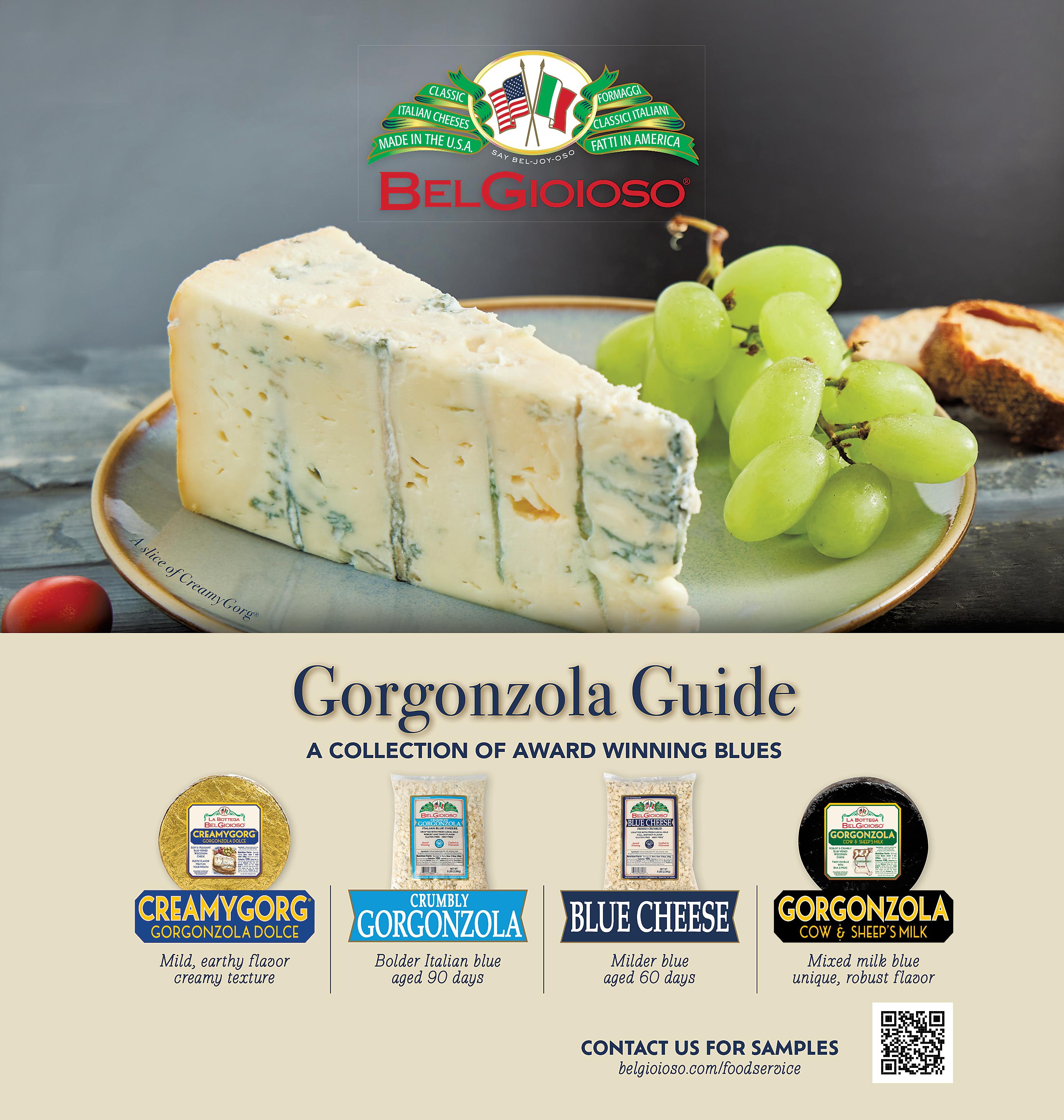
that replaces our face-to-face interactions, we are building an omnichannel lens on how we interact with our customers.
As we speak with our customers, we seek to understand what their journeys are and where they experience any friction today. With the newly launched imperialdade.com and our mobile app, we have reimagined our digital experience to remove those friction points for our customers. And we have done so with an omnichannel lens, incrementally enhancing our face-to-face relationships and bringing them to the digital age.
Can you please provide an overview of the changing buyer behavior trends that you have observed in the ecommerce industry recently?
Today’s buyers demand the highest standards from their suppliers. They expect clear and actionable information to be readily accessible on their mobile devices, enabling swift, effective decision-making for their enterprises. These expectations are influenced by their consumer experiences in an AI-driven, mobile-centric world dominated by platforms like Netflix, Google, Facebook, and TikTok. Constantly connected to the events that matter to them, buyers’ expectations in their professional lives are directly shaped by their personal experiences.
When we engage with our customers, the message is clear: they seek information that is relevant, timely, and effortlessly easy.
How have these changes impacted the way Imperial Dade approaches its ecommerce strategy?
We are not merely building an eCommerce strategy; we are driving an omnichannel evolution in our customer interactions. By understanding our customers’ friction points, we dedicate time to defining how we can eliminate them. This comprehensive approach involves reevaluating our business processes to ensure they center around the customer. Many of these processes were established years ago, often without the customer in mind.
For instance, on the new imperialdade. com and our mobile app, customers are immediately notified of delivery ETAs for

any orders currently being shipped upon logging in. On their homepage, they can easily view all open orders, recently used shopping lists (including algorithmically generated frequent order lists), and any current open invoices. This streamlined approach allows them to focus on relevant and prioritized items that require immediate attention.
The new imperialdade.com features AI-powered product recommendations, enabling buyers to discover similar and complementary products, as well as products they frequently purchase but haven’t yet reordered. Our goal is to leverage AI and personalization to create an experience that is highly relevant, timely, and easy to navigate, all while incorporating modern design principles and evolving our business processes.
Let’s define e-commerce excellence.
For us, excellence begins with our customers and their perception of their experience. Since launching the new
imperialdade.com and our mobile app earlier this year, we have used NPS as a continuous measure of our customers’ love for the experience. Ultimately, if our customers cannot efficiently use our digital platforms to do their jobs, we have more work to do. I am pleased to report that even as we release new features to our website and app every two weeks, our NPS score has consistently remained strong. This critical metric reflects the outstanding efforts of our product and engineering teams.
I believe that maintaining our focus on the customer and NPS will drive us to adopt a holistic and balanced approach across every aspect of our journey. This includes user experience, personalization, product data quality, product offerings, customer support, business processes, delivery propositions, returns, digital marketing, performance, security, compliance, and analytics.
In what ways do you believe the expec-
tations and demands for ecommerce excellence have evolved in recent years?
The proliferation of AI, particularly generative AI, has unlocked numerous opportunities for firms like ours to push technological boundaries and continually enhance the customer experience. As mentioned, operating in a B2B environment is no longer an excuse for not embracing emerging technologies to elevate our digital journeys. Customers expect us to leverage these advancements to better serve them and meet their evolving needs.
How does Imperial Dade stay ahead of the curve in meeting these higher expectations and demands for ecommerce excellence?
To stay ahead of the curve and meet rising expectations, we rely on a datainformed, responsive operating model.
continued on page 114

It’s a typical Thursday night at your restaurant. A guest slides up to the bar and orders a $8 glass of house red, which you serve in a standard wine glass.
Another guest takes the stool next to him and chooses a signature $20 cocktail from your seasonal menu, which your bartender shakes with a theatrical flourish and pours into a tall, beautifully garnished stemmed cocktail glass with artful cuts that catch and reflect the light, practically dancing as it is presented to the guest.
Suddenly, all eyes are on the drink. Ready for another round, the second guest orders: “I’ll have what she’s having.”
Don’t underestimate the power of a glass and artful presentation to influence customer decisions. High-quality glassware doesn’t just make your cocktails look prettier, it changes your guests’ perception of the cocktail’s true value –and how much they’d be willing to pay for it.
We designed new Renewal Inspire stemware from Reserve by Libbey® to support your bottom line and boost the value of wine and cocktails.
Each piece in the diverse Inspire collection features a diamond-cut pattern that exudes luxury as it combines classic cut-glass elegance with modern, clean aesthetics.
Under the lights, these vertical cuts create an optical display, drawing every eye in the room to the glass as it travels from bar to tabletop, transporting guests to a more refined era of cocktails.
Combined with your creative mixology, Renewal tells a story and delivers a fully formed experience that guests will remember – and tell their friends about, too.


Let’s return to the original scenario. Before taking a sip of that stunning cocktail, your guest pulls out her phone to snap a quick picture or video to share with her friends on social.
She tags your location and adds hashtags like #cocktails to her post, boosting your brand to potentially thousands more people. This type of organic reach is priceless – and it’s all thanks to a small investment in your presentation. When promoting your business in a competitive market, the difference comes down to the details. Your competitors may be using the same spirit
brands, following the same recipes, hiring bartenders with the same level of skill. So how do you set yourself apart?
Glassware like Renewal Inspire – with its cut lines and painstaking design –show that you are detail-oriented and care about giving guests the very best experience at your business. The cocktails may taste the same – but what’s different is how they feel when they leave your establishment.
Together, the details of Renewal send a message that this drink is high-end, high-quality, and worth paying for. From rim to foot, every detail of Renewal was
thoughtfully included to give your guests an exquisitely sensual experience:
Whisper-thin rims: Cut with a laser and sealed with a kiss of fire, the beadless edge of Renewal glassware enhances that intimate point of connection between drinker and drink and lets every flavor blossom. Better-tasting wine means they’re more likely to order another glass – or even the full bottle.
Slim walls and soaring stems: Renewal Inspire is rounded out by slim walls, soaring stems and a noticeably light weight that feels extravagantly fragile in the hand, but don’t let the delicate demeanor fool you: every piece is durable and dishwasher-safe.
HD2 Rim and Foot Guarantee: You want to know that your tableware was well worth the investment. That’s why Renewal is backed by our HD2 Rim and Foot Guarantee. If the rim or foot of any glass chips, Libbey will replace or refund the price of the glass upon return.
If you can’t get enough of the cut-glass look, explore the complete Renewal collection, which includes heavy-base barware and additional stemware, all with the same high-brilliance shine, ultrathin rims and contemporary patterns that give it a distinctive character.
Part of the Reserve by Libbey® brand, Renewal Inspire luxury glassware is made in American of the highest-quality materials, combining form and function to entice the senses, enhance the experience and elevate what’s possible.
Ready to bring renewed attention to your cocktail program? Elevate your menu – and your profits – with Renewal Inspire. Visit libbeyfoodservice.com to learn more about the superior craftsmanship of Reserve, plus resources to inspire your creative mixology.

School bells will ring once again, and the excitement of a new academic year begins in September. A back-to-school aspect that often generates significant attention is school food. With growing awareness about health and nutrition, schools face the challenge to make meals that are not only nutritious but also delicious and tempting for kids. This shift in focus aims to ensure that children receive the essential nutrients they need while enjoying their meals, making lunchtime a highlight of their day rather than a chore.
Across the country, more schools are using innovative approaches to school food, introducing vibrant, tasty, and healthful options that appeal to young palates. From farm-to-school programs that bring fresh, locally sourced ingredients to the cafeteria, to creative menu
designs that make healthy eating fun, educators and nutritionists are working hand in hand to transform school meals. Schools are also asking kids for their input through tastings where they rate the new offerings. The goal is simple: to offer kids food that fuels their bodies and minds, making them eager to participate in healthy eating habits both in school and at home.
To dive deeper into how schools and parents can collaborate to inspire children to enjoy nutritious food, I reached out to Sally Sampson, the founder of ChopChop Family, a national nonprofit 501c3 organization. Endorsed by the American Academy of Pediatrics and winner of the prestigious James Beard Foundation Award for Publication of the Year, ChopChop Family includes a
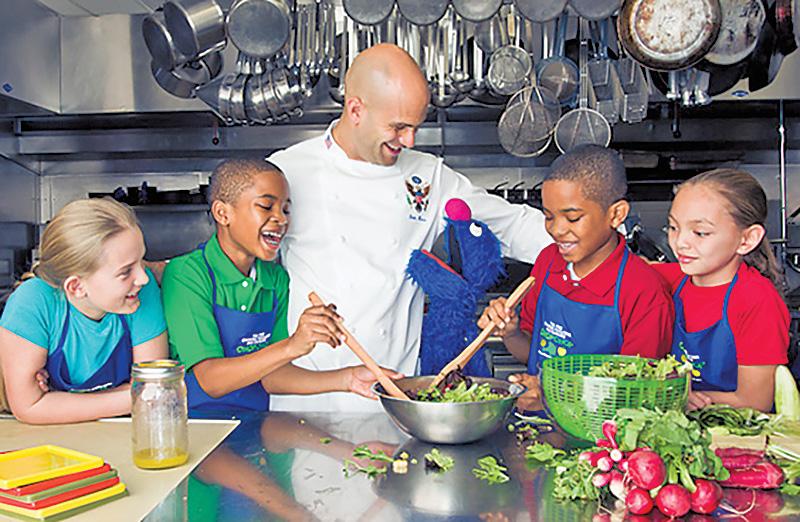
diverse and inclusive collection of products for children, and their adults.
The magazine comes out four times a year with the seasons. It goes to every state and about 22 countries in English and Spanish. In addition to magazines and cookbooks, the ChopChop Family brand includes the Eatable Alphabet, digital content, and cooking curricula, reaching over three million families worldwide.
In my following interview, Sally shares her expert insights on what makes food appealing to kids and offers practical strategies for school chefs and parents looking to encourage children in

Cherry Dumaual is a seasoned contributing writer for Total Food Service, bringing years of experience in culinary communications to her role. As the former Partnerships Director at The Monday Campaigns/Meatless Monday, she was responsible for spearheading the PR and partnership development for Monday initiatives, including Meatless Monday. During her tenure, she successfully forged partnerships with renowned organizations, such as C-CAP (Careers for Culinary Arts Program), the American Institute of Cancer Research, and New Jersey Healthy Kids Initiative. Prior to joining TMC, Cherry held the position of Senior Vice President at leading PR agencies, where she worked with major food and healthcare clients. Her passion for learning and cooking international cuisines has led her and her husband to explore local food markets and restaurants in over 50 countries. This firsthand experience has allowed her to gain a deep understanding of different cultures and cuisines, which she brings to her work in the food industry.
appreciating wholesome food.
continued on page 110


BelGioioso Cheese proudly announces a remarkable performance at the prestigious 2024 American Cheese Society Contest. Our cheeses have once again showcased their superior quality and craftsmanship, earning top honors across multiple categories. These accolades reflect our commitment to tradition, innovation, and the highest standards of cheesemaking. The following BelGioioso cheeses received distinguished awards:
1st Place Winners
1. Cow & Sheep Gorgonzola
2. Fontina
3. Fresh Mozzarella 1 lb. log
4. Marinated Fresh Mozzarella with Basil and Garlic
5. Mascarpone
6. Parmesan

1. Fresh Mozzarella 8 oz. ball
2. Crescenza-Stracchino™
3. Artigiano Blood Orange
3rd Place Winners
1. American Grana®
2. Black Truffle Burrata
3. Caciocavallo Medium Provolone
4. Crema di Mascarpone™
5. Stracciatella Burrata filling
“We are thrilled and honored to receive such prestigious recognition
“These awards highlight the passion and dedication of our team and our unwavering commitment to producing the highest quality cheeses.” — Gaetano Auricchio, President, BelGioioso Cheese
from the American Cheese Society,” said Gaetano Auricchio, President BelGioioso Cheese. “These awards highlight the passion and dedication of our team and our unwavering com -

mitment to producing the highest quality cheeses. Our focus on creating exceptional Gorgonzola and introducing innovative new products like the Marinated Fresh Mozzarella with Basil and Garlic has truly paid off. Moreover, our success with traditional cheeses such as Fontina, Fresh Mozzarella, and Parmesan underscores our ability to excel in producing classic, time-honored favorites. We are proud to share these achievements with our customers and look forward to continuing to provide them with exceptional cheese experiences.”
BelGioioso Cheese invites everyone to taste our award-winning cheeses and discover the difference that quality and tradition make. BelGioioso Cheese is a family-owned and operated company specializing in artisan Italian cheesemaking. Using only natural ingredients and fresh, local Wisconsin milk, Master Cheesemakers hand-craft a full line of exceptional cheeses guided by a commitment to quality and a respect for tradition. At BelGioioso, every cheese is a specialty. For more information about our products and where to purchase them, please visit our website at www.belgioioso.com.

Are you grappling with the challenge of finding and nurturing effective management within the confines of your restaurant’s four walls? The allure of recruiting seasoned professionals from outside may seem tempting, promising to transform your operations into a lean, mean, and profitable machine. However, in my experience, this strategy rarely pays off. The real solution lies in developing and hiring your next managers from within. The trick is to help them avoid the five common mistakes new restaurant managers make.
As a seasoned restaurant expert, coach, and creator of The Restaurant Prosperity Formula, I’ve learned the value of looking to your existing team for managerial talent. Not only are they already familiar with your business and culture, but they also come at a potentially lower cost than hiring a seasoned pro.
The real solution lies in developing and hiring your next managers from within. The trick is to help them avoid the five common mistakes new restaurant managers make.
I vividly recall my own journey from bartending at Coyote Springs Brewing Company to being approached by the owner to step into a managerial role. Despite initial reservations about a pay cut, I embraced the opportunity, ultimately experiencing significant financial growth as I climbed the ranks. However, not every promising employee is cut out to be a manager. Over the course of my time working in restaurants and then coaching restaurant owners, I identified five common mistakes that new managers make, leading to their downfall.
Let’s explore these pitfalls and discover how to sidestep them effectively.
1. Remaining one of the team: New managers often struggle to shift from being a buddy to being a leader. While they may have excelled in their previous roles, it’s crucial for them to understand that gaining respect is more important than being liked. Emphasize the importance of transitioning from a peer to a leader to foster a healthy working dynamic.
2. Avoiding asking for help: The vast amount of knowledge required in a managerial role can be overwhelming for new leaders. Instead of leaving them to learn from mistakes, invest in proper training, management tools, and a detailed operations manual. Provide checklists for daily tasks, ensuring consistency in operations even when you’re not physically present.


David Scott Peters is an author, restaurant coach and speaker who coaches restaurant operators how to stop being prisoners of their businesses and to finally financial freedom. His first book, Restaurant Prosperity Formula: What Successful Restaurateurs Do, teaches the systems and traits restaurant owners must develop to run a profitable restaurant. Thousands of restaurants have worked with Peters to transform their businesses. Get his three principles to restaurant success at www.davidscottpeters.com.
space ready for the next, promoting trust among team members.
4. Navigating office romances: Dating within the team can be a tricky area, potentially creating a hostile work environment. Establish clear policies on workplace relationships and ensure that management is aware of the associated risks. A transparent approach will help maintain professionalism and avoid unnecessary complications.
5. Understanding the importance of appearance: New managers may not grasp the significance of maintaining a professional appearance. Set clear policies regarding attire that align with your restaurant’s atmosphere. Whether it’s clean jeans and a logo polo or slacks and a button-down shirt, conveying expectations from the start will help new managers integrate seamlessly.
3. Me against them mentality: Carryovers from their time as line employees, new managers might harbor grievances against other departments or shifts. Transform your company culture into an open mindset, emphasizing teamwork and cooperation. Implement a system where each shift leaves the work-
Consider cultivating your next managers from your existing team. They are a known entity, trained in your business, and already aligned with your company culture. Ensure you have robust systems and training in place to guide them away from these five common mistakes new restaurant managers make. By doing so, you can transform great line employees into outstanding managers who thrive in their new roles.

Complaints over harassment, discrimination and retaliation have had a notable impact on the hospitality industry over the past several years. The U.S. Equal Employment Opportunity Commission (EEOC) has continued to intensify its enforcement efforts, with 2022 marking a notable increase in employment discrimination lawsuits. As of 2023, the EEOC has reported a significant rise in the number of discrimination charges filed, reflecting its ongoing commitment to addressing workplace inequality. ¹
Employment discrimination complaints can lead to substantial charges and penalties from the EEOC. In fiscal year 2022, U.S. employers paid over $506 million to individuals who alleged discrimination, demonstrating the financial impact of these claims. ²
A history of employee complaints can also influence the cost and conditions of an organization’s employment practices liability insurance (EPLI). Premiums for EPLI are expected to continue rising, with an estimated increase of 10% to 20% in 2024.³
The hospitality industry, characterized by high turnover and demanding work environments, is particularly susceptible to EPLI claims. Addressing these issues has become crucial for the industry’s financial stability and operational success. ⁴
Notably, the restaurant industry remains the sector with the highest volume of complaints. “Tight working conditions, late nights, alcohol prevalence, high turnover, tipping culture and stressful working conditions, all make hospitality especially vulnerable to EPLI claims.” said Amanda M. Fugazy, Head
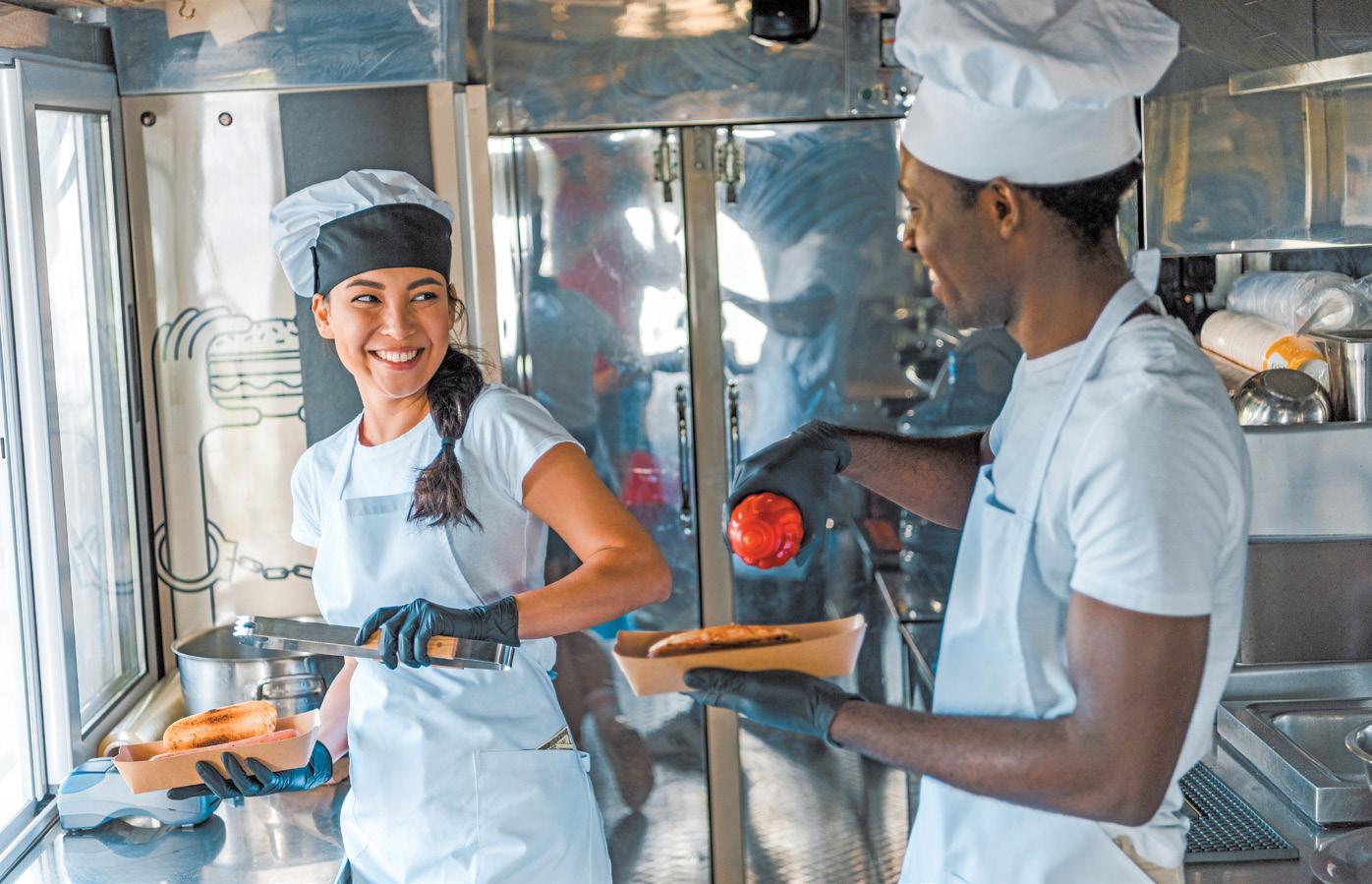
of the Labor & Employment Group and Co-Head of the Hospitality Practice Group at Ellenoff Grossman & Schole LLP. “In an industry already financially stressed from razor thin margins, and inflationary forces, using best practices to curbing EPLI and other employment liability claims by using HR best practices has become essential.”
Best practices guard against rising employment liability claims in hospitality:
Following best practices is the most effective defense against costly EPLI claims and potential EEOC actions and fines. Here are four ways to prevent claims:
1. Open lines of communication. When communications break down, EPLI claims tend to mount. Employees need to know how to report inappropriate and discriminatory behavior and acts. When employees feel heard
through a swift and thoughtful response to complaints, it lessens the likelihood of a future claim.
2. Formalize policies and procedures. Prohibitions against discrimination and harassment must be in writing and included i in an employee handbook. Ideally, policies should be revisited annually to reflect any legal and regulatory changes and must spell out workers’ rights and recourses. Important aspects of these policies include reporting protocols, which formalize how employees can lodge a complaint, report inappropriate behavior and the avenues to do so, as well as investigation procedures that detail who performs investigations, how they are conducted and when they are typically completed.
3. Document everything. Every employee complaint or request should be documented in writing. In the event of litigation, written policies and documentation are critical to the employer’s

Robert Fiorito serves as Vice President with HUB International Northeast, a leading global insurance brokerage, where he specializes in providing insurance services to the restaurant industry. As a 25+ year veteran and former restaurateur himself, Robert has worked with a wide array of restaurant and food service businesses, ranging from fast-food chains to upscale, “white tablecloth” dining establishments. Robert can be reached at 212-3382324 or by email at robert.fiorito@ hubinternational.com.
defense. Maintain a separate investigation file that includes all written correspondence and ensure verbal communications are summarized in emails to the employee. All investigations should include a written conclusion, whether the allegations had merit or not.
4. Training counts. Employees need clear instruction on what constitutes harassment, discrimination or retaliation; managers need training on handling complaints. Many states, including NY and California, require mandatory annual training. DC requires that trainers be certified.
Work with an experienced insurance advisor to learn more about how to prevent employee practices liability claims in the hospitality industry. Learn more at https://www.hubinternational.com/ industries/hospitality-insurance/restaurant-insurance/
1. U.S. Equal Employment Opportunity Commission. (2023). “EEOC Announces the Number of Charges Filed and the Total Benefits Secured for FY 2022.” Retrieved from EEOC.
2. U.S. Equal Employment Opportunity Commission. (2023). “EEOC Reports on Benefits Secured for Victims of Discrimination.” Retrieved from EEOC.
3. Gallagher. (2024). “Employment Practices Liability Insurance: Trends and Predictions.” Retrieved from Gallagher.
4. National Restaurant Association. (2024). “Impact of EPLI and Liability Claims on the Hospitality Industry.” Retrieved from National Restaurant Association.


When investing in a franchise, understanding the implications of every decision, big or small, is paramount. Being familiar with the local market, analyzing data, and executing the franchise in a unique, innovative way are just some aspects that investors should be aware of long before they open their wallets.
Our Franchise Marketing Systems (FMS) has been operating in the franchise industry since our inception in 2009. FMS operates like a partnership, working side-by-side with investors and franchisees to help them make informed decisions. With over a decade of experience, particularly with smaller franchise systems, FMS offers premium coaching to help franchisees avoid the overhead of hiring an executive. Our extensive data and examples support our goal to provide optimal advice for navigating the complex world of franchises.
2024 has been an interesting year at
“For instance, food service models conducting a significant portion of business via delivery might benefit from more cost-effective locations.”
FMS. The lesson as we move into the 2nd half of the year is the importance of a restaurant concept finding differentiation in a saturated market to successful franchise strategy.
In a saturated market of franchise concepts, understanding the differences between brands is crucial. One key distinction is between small and large brands. The size of the brand can determine the relationship with the franchisor. Establishing a relationship with a franchisor, ensuring their team is geographically close, and prioritizing positive relationships are vital. Smaller franchises often provide more personal-

ized support, which can be a significant advantage. Conversely, larger franchises may lack these relationships but offer other benefits.
Market research is essential in understanding the differences in franchise concepts. Falling in love with a segment or product is easy, but understanding market potential is crucial. Today, accessing data through databases and polls helps investors avoid overcrowded or unwanted franchises. The best franchise investors undertake fact-finding missions using the Franchise Disclosure Document (FDD). This information provides an edge, making franchises distinct from opening an independent business. With accessible data, investors can make informed decisions before significant financial commitments.
Technology and social media play a significant role in leveling the marketing playing field for franchises. A dynamic social media presence can be immensely beneficial. For example, Teaspoon, a boba tea franchise in Northern California, excels in a crowded market through social media. They have sold 84 units in 4 years, demonstrating the power of an effective social media strategy.
Investing in a creative menu, seasonal offerings, and innovative promotions
sets franchises apart. Effective use of influencers and engaging video content can drive customer interaction and loyalty. These strategies create a unique and memorable customer experience, encouraging repeat business.
In the digital age, the necessity of prime locations is evolving. While some businesses, like coffee shops, still require central locations, others can thrive with a strong digital presence. For instance, food service models conducting a significant portion of business via delivery might benefit from more cost-effective locations. Balancing location strategy with business model and operational needs is critical.
Labor is a critical factor in franchise operations. Finding the right person to manage HR responsibilities, such as hiring and transitioning staff, is essential. Efficient labor management reduces costs and ensures smooth operations. The potential future of robotic servers is also a consideration, offering potential labor cost savings and operational efficiency.
In summary, standing out in a sea of franchises requires understanding market dynamics, leveraging technology, creating unique customer experiences, and strategic location and labor management.
We are here to help. For more information about FMS and how we can assist in navigating the franchise landscape, visit our website at www.fmsfranchise.com or send me an email at chris.conner@ fmsfranchise.com

While other newspapers and media outlets are busy this month tracking who will get the Democratic Party’s Vice President nod before turning their full attention to the national election coming up in November, we’ve got wetter wins on our mind.
These are the awards that can really impact on our bars’ day-to-day business, staff and bottom lines. There are a number of them out there, offering plenty of opportunity to get noticed. Beyond awarding bodies like Tales the Cocktails Spirited Awards, The Pinnacle Guide, and The World’s 50 Best Bars offer a spotlight for bars that want to herald their prowess beyond the number of guests they can accommodate in any given year. Other entities are also weighing in regularly, like the Esquire Magazine’s best bars
Awards can really impact on our bars’ day-to-day business, staff and bottom lines. But should you compete? Is it worth the time and effort and expense your bar might have to undertake to get noticed?
annual list and the latest from USA Today directing readers to a watering hole they are sure to love.
That’s not even an exhaustive list; it seems there’s an opportunity to be crowned a winner everywhere you turn. But should you compete? Is it worth the time and effort and expense your bar might have to undertake to get noticed?
While plenty of bar veterans and newbies alike answer with a resounding “yes!” some are convinced it is not actually necessary for every bar. Jacob

Briars, the Global Advocacy Director for Bacardi Global Brands has his focus on the on-premise consumer and trade education and activations his company’s brands bring to life. In this role he sees all sides of the awards and their impact on guests and bars and shares some perspective as a longtime hospitality industry professional. He says, “When we talk about awards and rankings we know they bring attention to the industry, elevate the professionalism of our industry, and put us on par with top restaurants. Twenty

Francine Cohen is an award-winning journalist covering the business of the f&b/hospitality industry, and a proud native Washingtonian (DC). In addition to her work as a journalist she keeps busy fundraising for Citymeals on Wheels, Les Dames d’Escoffier, NY Women’s Culinary Alliance, and the USBG Foundation and serves as chief storyteller and brand steward for clients in the food and beverage sector by providing them with strategic marketing and business growth guidance. She has never met a cheese or beverage she does not like, and lives with her husband in New York; leaving him behind to visit New Orleans every summer. (Except 2020-21. Darn pandemic.) You can reach her at francinecohen@mindspring.com
to 30 years ago everyone became okay with the idea restaurants and chefs should be celebrated. These awards do the same for the bar industry.” He continues, “There are lots of benefits, from a higher level of professional engagement with brands, to staff which is more engaged, which is great. And these awards are really
continued on page 104


David Liederman, a visionary in the world of confections and the creator of the renowned David’s Cookies, passed away on last month, in Mount Kisco, N.Y., at the age of 75. Liederman, whose innovative take on the classic chocolate chip cookie brought him international acclaim, left behind a legacy of sweetness and entrepreneurial spirit. His wife, Susan Liederman, confirmed that he died of a heart attack while also battling myelofibrosis, a rare type of blood cancer.
Liederman’s journey into the world of culinary arts began in an unconventional manner. While studying law at Brooklyn Law School and clerking for Judge Maxine Duberstein, Liederman was simultaneously nurturing a
burgeoning passion for cooking. He enrolled in night classes at the culinary program of New York Technical College, laying the groundwork for what would become a transformative career in the food industry.
“David was always ahead of his time, combining legal acumen with a chef’s creativity. He saw potential where others saw only tradition,” recalls Michele Urvater, a co-author and culinary collaborator. Liederman’s influence extended to his written works as well. His book Cooking the Nouvelle Cuisine in America co-authored with Urvater, captured the evolving landscape of American culinary arts.
In 1979, Liederman opened David’s Cookie Kitchen in Manhattan, revolutionizing the chocolate chip cookie with his signature “chocolate chunk” creation. Unlike the standard Toll House chips, Liederman used hand-chopped pieces of high-quality Lindt dark chocolate, setting a new standard for the beloved cookie.

“David’s cookies were unlike anything we had ever tasted. The quality of ingredients and the sheer passion he put into each batch were evident,” says Joan Schwartz, co-author of Liederman’s weight-loss cookbook. David’s Cookies quickly grew from a single store to an international chain with over 100 locations. He sold David’s Cookies to Fairfield Gourmet Foods Corp. in 1995. The brand’s success was driven by Liederman’s unwavering commitment to quality and his knack for innovation.
“David had an incredible ability to foresee culinary trends. His restaurants were a haven for food lovers who appreciated the best ingredients,” — Tom Colicchio
Liederman’s talents were not confined to cookies alone. His entrepreneurial spirit led him to open several restaurants in New York City, including the influential Manhattan Market. Known for its use of fresh, high-quality ingredients, the restaurant was a precursor to the modern farm-to-table movement. “David had an incredible ability to foresee culinary trends. His restaurants were a haven for food lovers who appreciated the best ingredients,” noted Tom Colicchio, a celebrated chef who worked at Manhattan Market.
Liederman’s career was marked by a series of ambitious ventures. From attempting to turn Zabar’s into a national chain to exploring the weight-loss cookbook market, his endeavors were diverse and bold. “David never shied away from a challenge. His entrepreneurial spirit was matched only by his determination and hard work,” remembers William Liederman, his younger brother and business partner.
Born on March 15, 1949, in Manhattan, Liederman’s early life was shaped by his parents’ divorce and his upbringing in Princeton, N.J. Despite the challenges, he thrived academically and professionally, earning degrees from Denison University and the State University of New York at Old Westbury before attending law school.
Liederman’s personal life was rich with family and friendships. He is survived by his wife, Susan, his daughters,
Katie Liederman and Elizabeth Liederman Rossi, his brother William, and his two grandchildren. “David was not just a pioneer in the kitchen but also a devoted family man and mentor. His generosity and kindness left a lasting impact on all who knew him,” says Michael Tucker, actor and writer.
Liederman’s love for food and innovation remained strong throughout his life. Even in his later years, he toyed with the idea of returning to the cookie business, always seeking to perfect his craft. “His legacy is one of relentless pursuit of excellence. David’s Cookies will forever be a testament to his passion and creativity,” reflects Eberhard Muller, a former colleague and partner at Satur Farms.
Liederman’s contributions to the culinary world extend far beyond his famous cookies. His influence is seen in the quality standards he set, the trends he anticipated, and the lives he touched. “David’s impact on the dessert industry and his innovative spirit will be remembered for generations. He was a true pioneer,” added Ann Bramson, wife of Liederman’s business partner Herb Nagourney.
Liederman’s life and achievements are a testament to the power of innovation and passion. His story reminds us that even the simplest pleasures, like a chocolate chip cookie, can become an enduring legacy when crafted with love and dedication.


This summer, Mike’s Hot Honey is taking over food menus across the country, as the swicy food trend—combining sweet and spicy flavors—continues to captivate consumers. From breakfast sandwiches at Dunkin’ Donuts to menu items at Cinemark movie theaters, and popular family casual restaurants like Moe’s Southwest Grill and Roy Rogers, Mike’s Hot Honey is everywhere. Its irresistible blend of sweetness and heat is revolutionizing the way Americans enjoy their meals.
Swicy, a portmanteau of “sweet” and “spicy,” has become the defining flavor trend of the season. More than 80% of consumers claim to enjoy hot and spicy foods, and the demand for such flavors has led to the rise of hot honey as a staple in the culinary world. Mike’s Hot Honey, with its per-

fect balance of honey and chili peppers, has become the epitome of this trend, finding its way into an almost unlimited array of food and drink items.
“It has truly been a banner year for Mike’s Hot Honey,” said founder Mike Kurtz. “As we approach our 15th anniversary in 2025, we are gratified that our momentum continues to grow as restaurants recognize and embrace the product’s versatility and are incorporating it in all kinds of creative ways,” he said.
Moe’s Southwest Grill: In a first-ofits-kind collaboration, Moe’s Southwest Grill has teamed up with Mike’s Hot Honey to spice up its summer offerings. For a limited time, customers can add drizzles of Mike’s Hot Honey to any Moe’s entrée at no additional charge. “At Moe’s, we celebrate origi -
nality, and we aren’t afraid to be adventurous with our flavors,” said Joe Artime, VP of Marketing at Moe’s Southwest Grill. “Mike’s Hot Honey and Moe’s share a creative spirit and love of bold flavors, which is why we’re thrilled to launch this collaboration nationwide.”
This partnership marks the firstever limited-time sauce offering among Moe’s extensive sauce lineup, which includes Kickin’ Cayenne, Poblano Crema, Moe’s Sauce, Chipotle Ranch, and Hard Rock’n Roll. The addition of Mike’s Hot Honey introduces a unique sweet heat that enhances the customizable southwestern fare Moe’s is known for.
Roy Rogers: Roy Rogers Restaurants, the iconic western-themed quick-service chain, has also embraced the swicy trend by partnering with Mike’s Hot Honey to introduce a limited-time menu item: Chicken and

Waffles. This dish combines crispy, golden chicken and fluffy, warm waffles, drizzled with the sweet heat of Mike’s Hot Honey and topped with powdered sugar. “We knew that Mike’s Hot Honey was the perfect choice to take our new Chicken and Waffles offering to the next level,” said Jim Plamondon, Co-President of Roy Rogers. “The new dish is the perfect balance of sweet and savory.”
Dunkin’ Donuts: For those who start their day with Dunkin’, the collaboration with Mike’s Hot Honey brings a new twist to breakfast. Dunkin’ Donuts has introduced a Hot Honey Bacon Sandwich, featuring hot honey bacon, egg, cheese, and a drizzle of Mike’s Hot Honey on a brioche bun. There’s also the Hot Honey Bacon Wake-Up Wrap® and the Hot Honey Snackin’ Bacon, Dunkin’s first
continued on page 112

Chef Kelly Whitaker, a visionary in the culinary world, is celebrated for his pioneering work in sustainable, innovative cooking and was recently recognized by the James Beard Foundation as their national restaurateur of the year.
As the founder of acclaimed restaurants Basta in Boulder and The Wolf’s Tailor in Denver, Whitaker has carved a niche for himself by emphasizing the importance of local ingredients, traditional techniques, and a zero-waste approach. His culinary journey began with formal training at the Apicius School of International Hospitality in Italy, profoundly influencing his appreciation for artisanal craftsmanship and sustainable practices.
Whitaker’s restaurants are a testament to his dedication to ethical sourcing and environmental responsibility. Basta is known for its wood-fired
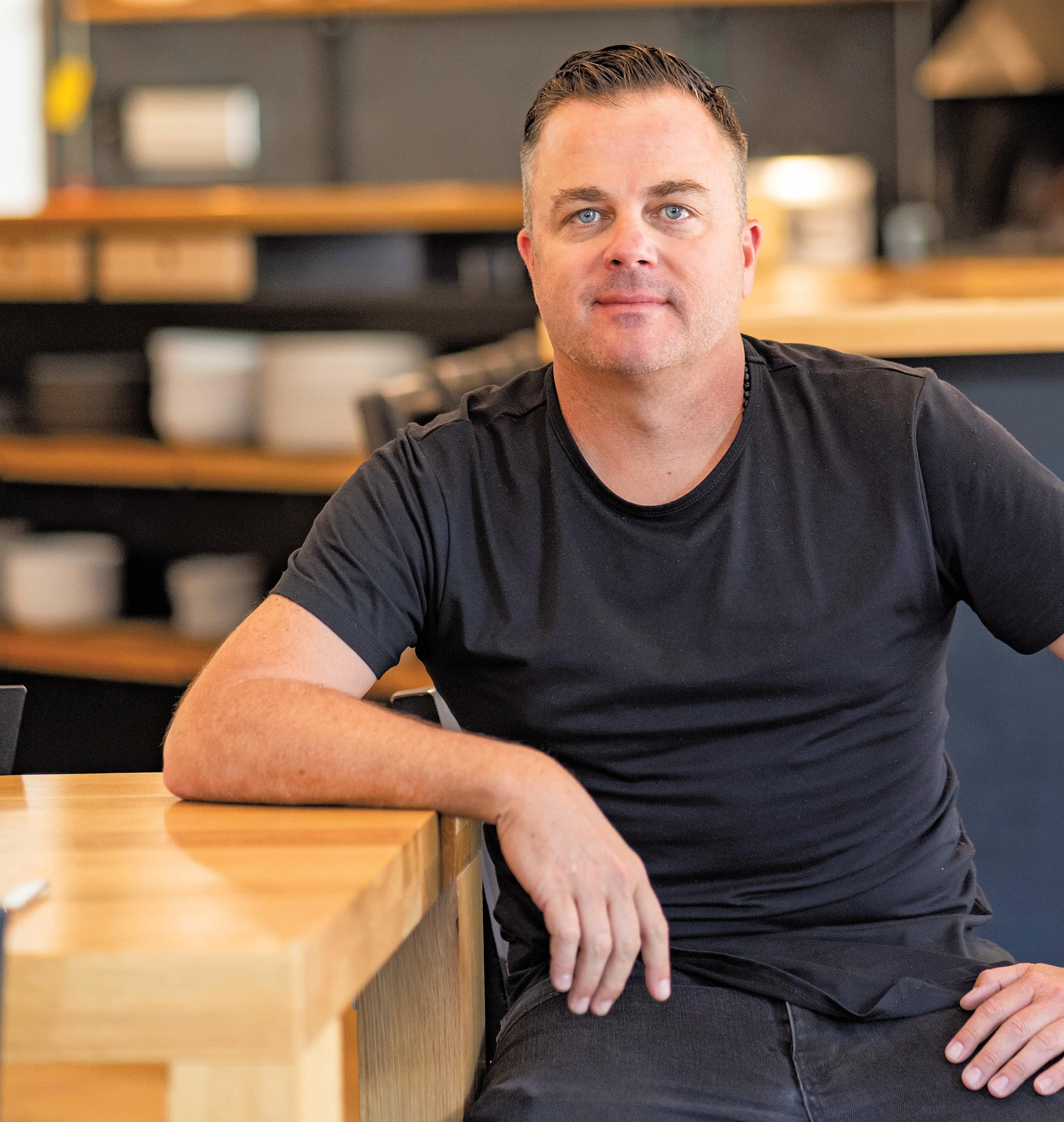
dishes and focus on seasonal, local produce, while The Wolf’s Tailor merges Italian and Japanese influences, showcasing his versatility and creativity. Both establishments have garnered critical acclaim, earning Whitaker a reputation as a leader in the farm-to-table movement.
Total Food Service wanted to interview Chef Whitaker to gain insight into his unique culinary philosophy and explore the innovative practices that set his restaurants apart. His commitment to sustainability, from sourcing to serving, offers valuable lessons for both aspiring chefs and conscious consumers. By understanding his approach, we hope to inspire a broader conversation about the future of food and the role of chefs in promoting sustainability and responsible dining.
Can you tell us about your journey into the
culinary world and what inspired you to become a chef?
My journey into the culinary world began at a young age. Growing up, I was always fascinated by the kitchen and the process of creating meals. My family played a significant role in this, as we spent a lot of time cooking and eating together. The smells, flavors, and joy of sharing a meal all resonated with me deeply. After high school, I decided to pursue this passion professionally and enrolled in culinary school. My career took off from there, and I haven’t looked back since.
What was your experience like working in Italy, and how did it influence your cooking style?
Working in Italy was a transformative experience for me. I trained in several regions, each with its unique culinary traditions and techniques. The
continued on page 38

emphasis on fresh, local ingredients and the simplicity yet depth of flavors was eye-opening. It taught me to respect the ingredients and let them shine in their natural form. This philosophy has heavily influenced my cooking style, focusing on high-quality, seasonal ingredients and minimalistic preparation to highlight their inherent flavors.
How did your time at Providence in Los Angeles shape your culinary approach and philosophy?
My time at Providence was instrumental in shaping my culinary philosophy. Working under Chef Michael Cimarusti, I learned the importance of precision, technique, and innovation. The focus on seafood sustainability and the meticulous sourcing of ingredients were particularly impactful. It instilled a sense of responsibility towards the environment and the importance of sustainable practices in the kitchen. This experience honed my skills and broadened my perspective on what it means to be a chef.

food systems. By providing fresh bread, organic grains, and locally sourced ingredients, we aim to empower our community with the resources to make informed, sustainable food choices. Our goal is to advance our mission, giving greater access to quality grains and fostering a deeper connection between food, land, and community.
What is your strategy for managing and differentiating each of your restaurants in Colorado?



















Can you elaborate on your approach to using grains in your dishes?
Grains are a fundamental element of my cooking. I believe in using ancient grains and heirloom varieties, which offer superior flavor and nutritional value. We mill our own flour at the restaurants to ensure the freshest, highest quality product. My approach is to incorporate grains to complement and enhance other ingredients, whether in bread, pasta or as a base for a dish. Grains provide texture, depth, and a connection to the land, which is essential in my culinary philosophy.
Our Dry Storage operation in Boulder has evolved from a café to a bustling milling operation, selling and distributing hundreds of pounds of flour weekly. This transformation aligns with our mission at the Noble Grain Alliance—to restore and return local heritage grains through farming, milling, and distribution. Our efforts emphasize the importance of supporting local agriculture and









Each restaurant has its own unique identity and focus, but they all share a common philosophy of sustainability, quality, and community. For example, Basta is all about wood-fired cooking and communal dining, while The Wolf’s Tailor emphasizes seasonal ingredients and innovative techniques. Dry Storage focuses on grains and bread, showcasing our in-house milling process. My strategy is to ensure each restaurant has a clear vision and concept, allowing them to stand out while maintaining a cohesive brand identity that reflects our core values.
What inspired you to open a restaurant in Oklahoma, and how has the experience been so far?
Taking over Nonesuch in Oklahoma was driven by the desire to bring our culinary philosophy to a new audience and explore the region’s rich agricultural heritage. The community’s warmth and enthusiasm have been incredible, and we’ve built strong relationships with local farmers and producers. This has allowed us to source exceptional ingredients and create a menu that reflects the local terroir. The experience has been rewarding, both in terms of the support from the community and the opportunity to expand our culinary reach.
How did it feel to be honored by the James Beard Foundation, and what impact has it had on your career?
continued on page 40
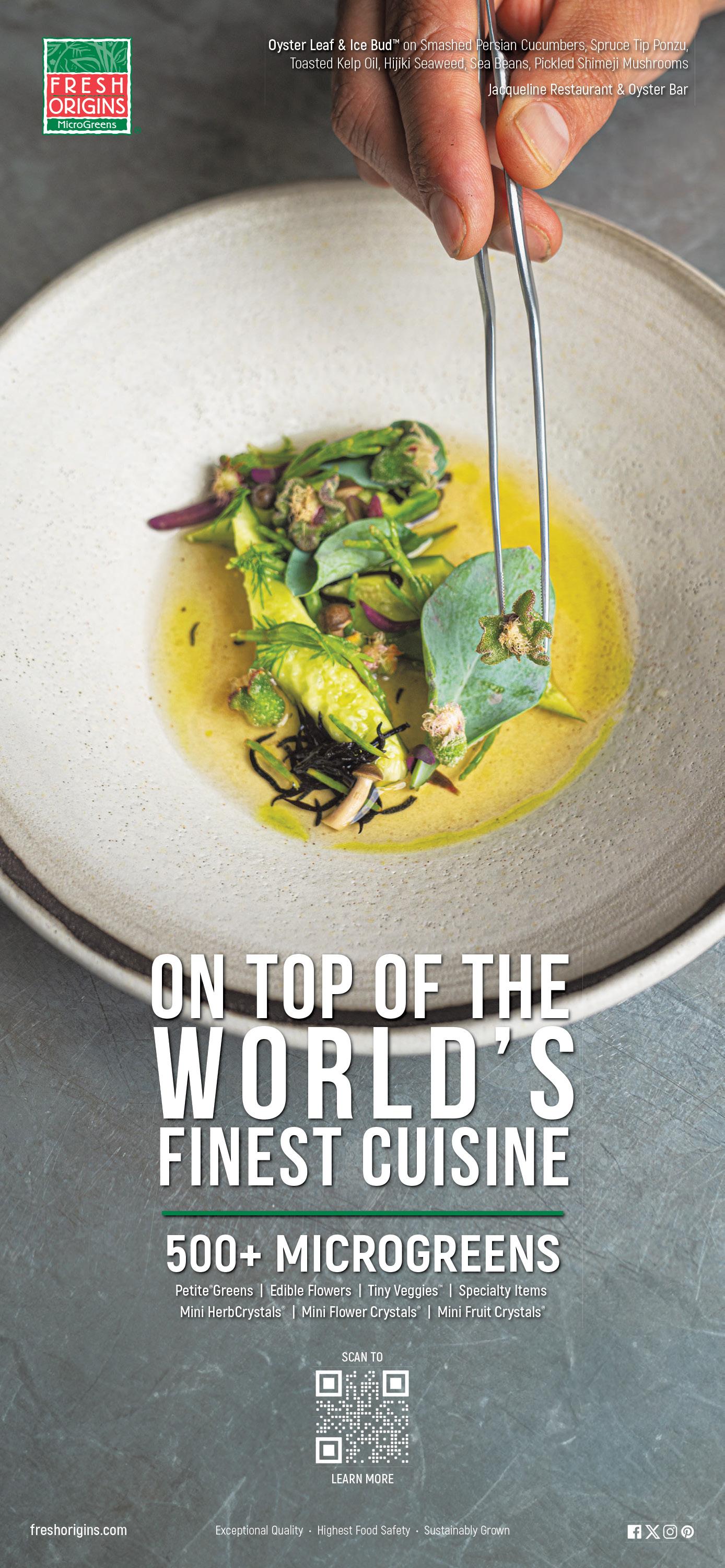

Being honored by the James Beard Foundation was a humbling and gratifying experience. It’s one of the highest accolades in our industry, and it validates our entire team’s hard work and dedication. The recognition has brought more visibility to our restaurants and our commitment to sustainability and quality. It’s also motivated me to continue pushing the boundaries and striving for excellence in everything we do.
You’ve been noted for not having an ego in the kitchen. How do you maintain this attitude, and why is it important?
I believe that the kitchen should be a collaborative environment where everyone feels valued and respected. Maintaining humility allows for open communication, learning, and growth. It’s important to remember that no one is above anyone else, and every team member contributes to the restaurant’s
success. This attitude fosters a positive work environment, encourages creativity, and leads to better food and service. I strive to lead by example, showing that humility and hard work go hand in hand.
Why is seafood sustainability so important to you, and how do you ensure it in your restaurants?
Seafood sustainability is crucial because overfishing and irresponsible practices deplete our oceans and harm marine ecosystems. As chefs, we are responsible for sourcing our seafood ethically and supporting sustainable fisheries. In my restaurants, we work closely with suppliers who share our commitment to sustainability. We prioritize seasonal and locally sourced seafood and are transparent with our guests about where their food comes from. This helps
continued on page 42



protect the environment and ensures that we are serving the highest quality, most responsibly sourced seafood.
Can you share a memorable moment or lesson from your culinary career that significantly impacted you?
One of the most memorable moments in my career was the first time I worked a dinner service in Italy. The intensity, the passion, and the camaraderie in the kitchen were unlike anything I had experienced before. It taught me the importance of teamwork and the relentless pursuit of excellence. Another significant lesson came from a mentor who emphasized the importance of never cutting corners and always striving for perfection, no matter how small the detail. These experiences have deeply influenced my approach to cooking and running a restaurant.
How do you balance creativity and consistency across your different restaurants?
Balancing creativity and consistency is
a continuous challenge, but it’s essential for maintaining the quality and integrity of our restaurants. We achieve this through rigorous training, clear communication, and a strong focus on our core values. Each restaurant has a dedicated team of chefs passionate about our vision and committed to delivering consistent, high-quality food. At the same time, we encourage creativity and innovation, allowing our chefs to experiment and develop new dishes that reflect our evolving culinary perspective.
What role do local farmers and producers play in your culinary approach, and how do you foster these relationships?
Local farmers and producers are the backbone of our culinary approach. They provide us with the freshest, highestquality ingredients—essential for creating exceptional dishes. We foster these relationships by visiting farms, understanding their practices, and collaborat-
continued on page 44
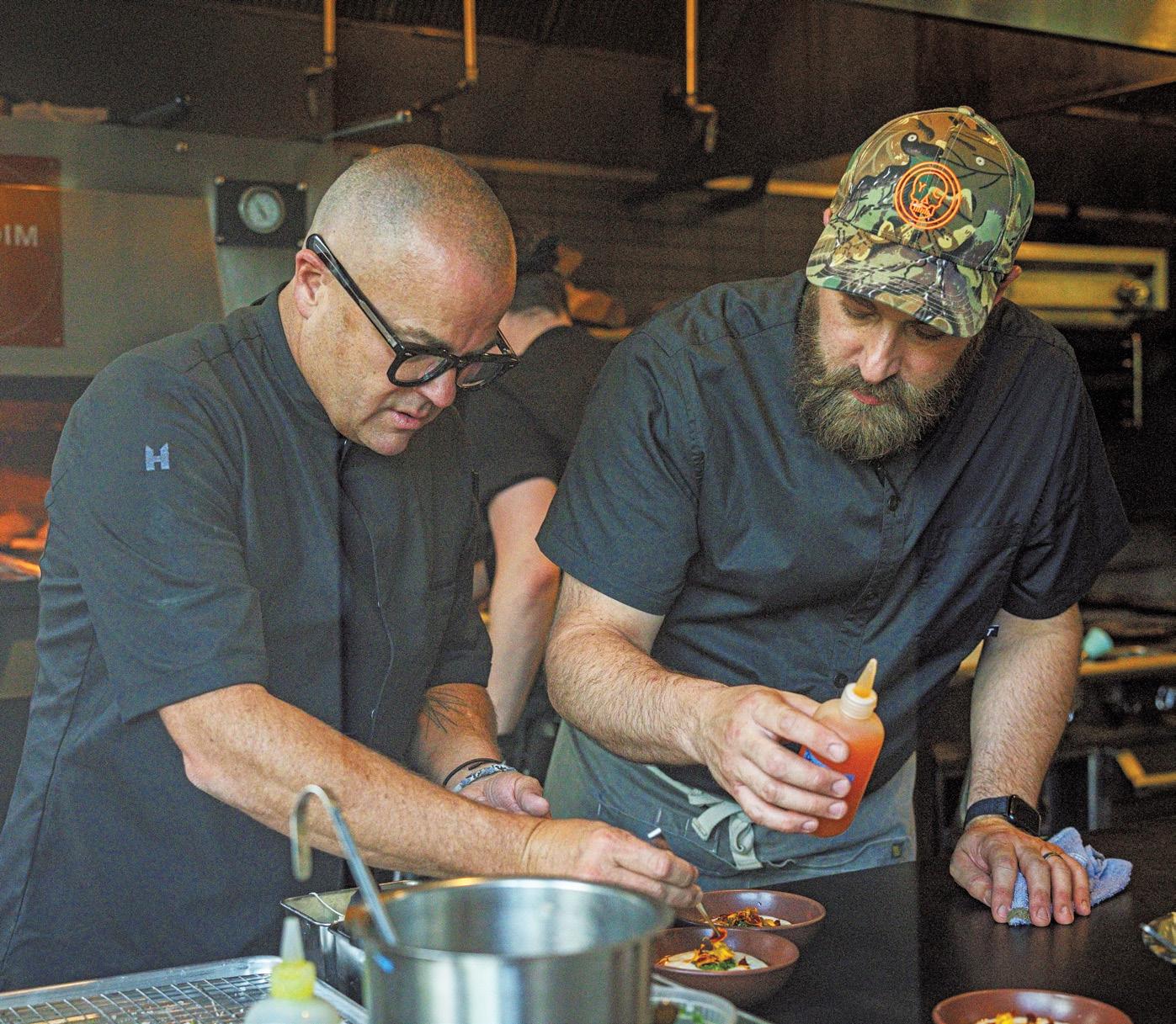

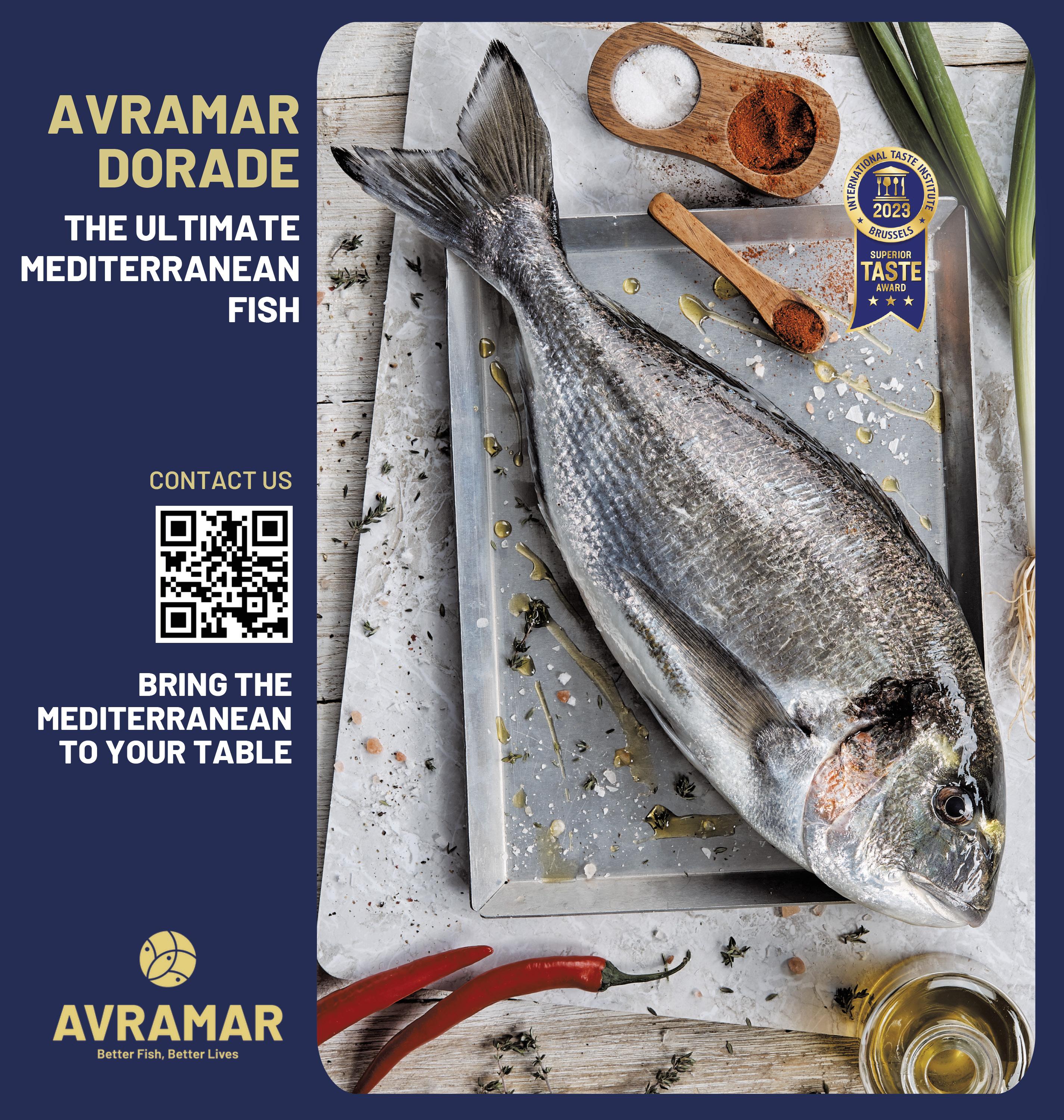
ing on seasonal planning. This direct connection ensures that we are aligned in our commitment to sustainability and quality. It also allows us to support the local economy and create a community around our food.
Can you discuss any future projects or goals you have for your culinary career?
Looking ahead, I am excited to continue innovating and expanding our culinary horizons. We have plans to open new restaurants that will explore different cuisines and concepts, always rooted in our commitment to sustainability and quality. Another goal is further developing our grain program, including expanding our milling operations and exploring new grain varieties. Education is also a priority; I want to share our knowledge and passion for sustainable practices with a broader audience through workshops, collaborations, and possibly even a cookbook.
How do you stay inspired and continually evolve your culinary style?
Staying inspired involves constantly seeking new experiences and learning from others. Traveling, dining at different restaurants, and working with talented chefs all contribute to my
culinary evolution. I also find inspiration in the changing seasons and the unique ingredients they bring. Collaborating with farmers and producers opens new possibilities and challenges me to think creatively. Ultimately, the desire to create memorable dining experiences and connect with our guests drives my continual growth and evolution.
What advice would you give aspiring chefs who want to significantly impact the culinary world?
My advice to aspiring chefs is to focus on honing your skills, understanding the fundamentals, and never stop learning. Be curious, ask questions, and seek out mentors who can guide you. Embrace hard work and humility, and always strive for excellence in everything you do. Sustainability and responsibility are key; understand the impact of your choices and commit to ethical sourcing and practices. Finally, be passionate and persistent. The culinary world is demanding, but you can make a significant impact with dedication and love for what you do.
All photos courtesy of Id Est Hospitality Group unless noted otherwise




RATIONAL USA, the leading manufacturer of intelligent cooking equipment for commercial foodservice, recently announced the following Corporate Chef promotions and additions:
• Natasha Daniels has been promoted to Corporate Chef, iVario. Natasha previously worked as Corporate Chef Administrator. Natasha has had an incredible influence on RATIONAL’s culinary support through her presentations, videos, consulting, and strategic planning. Reporting to James Haberstroh, National Corporate Chef, iVario, Daniels supports the Culinary team’s West territory.
• Monica Morgan has joined as Corporate Chef, iVario. Prior to joining RATIONAL in a full- time role, Monica worked as a private chef for ChefGurl PCS and was a RATIONAL Certified Chef freelancer. She reports to Haberstroh and supports the team’s Southeast territory.
• Benjamin Callahan has joined as Corporate Chef, iVario. Prior to joining RATIONAL in a full-time role, Benjamin was working as an Executive Chef at Hilton Palacio Del Rio and was a RATIONAL Certified Chef freelancer. He reports to Haberstroh and supports the team’s South territory.
• Robert Clifford has joined as Corporate Chef, Key Accounts. Prior to joining RATIONAL, Robert was with True Food Kitchen as the Executive Chef. He will be reporting to Joel Elliott, National Corporate Chef, Key Accounts.
“We are incredibly proud of Natasha and the work that she does at RATIONAL. We look forward to her growth and future contributions as she works to earn her master’s in culinary arts degree from the CIA School of Graduate Studies,” says Billy Buck, Vice President of Culinary for RATIONAL USA.
“And we are thrilled to bring these other talented chefs into the RATIONAL family. Their experience will sig-
nificantly enhance both our culinary expertise and sales operations. As our sales continue to rise, expanding our team ensures we can offer even greater support to our customers, because after all, better is all we know.”
This change brings RATIONAL USA to 12 corporate chefs, up from 6 at the start of 2023.
RATIONAL USA also recently announced that Ryan Jacobson has been hired as Sales Director for the Mountain region.
Prior to RATIONAL, Ryan was working as a Director of Local Sales for Sysco. He has a bachelor’s in communications from Central Washington University. He will report to Ryan Elsen, Vice President of Street Sales.
“As the Sales Director for our Mountain Region, Ryan Jacobson has already made an impressive impact since joining RATIONAL. Ryan has implemented a culture of collaboration amongst his team which has fostered a positive work environment, encouraging cooperation and knowledge sharing amongst

team members,” said Ryan Elsen, VP of Street Sales for RATIONAL USA.
“His personal approach to the market has strengthened existing customer relationships and further fortified are partnership with Intermountain Food Equipment in the region. We’re certainly looking forward to seeing the ongoing success of the Mountain regional team.”
The RATIONAL Group is the world market and technology leader in the field of hot food preparation for professional kitchens. Founded in 1973, the company employs more than 2,600 people worldwide. RATIONAL is listed on the Prime Standard of the German Stock Exchange and is included in the SDAX.
To learn more about RATIONAL products and services, attend a RATIONAL Live event to see how we help commercial kitchen operators do more with less space, waste, energy, cost, and stress. Find an event online or near you at https://www.rational-online.com/ en_us/experience/rational-live/

By Sophia Maggio
Apowerful Internet solution is just as important to the success of a restaurant as the food itself. But finding a flexible Internet bundle, uniquely tailored to a restaurant’s business model and projected growth, is no simple task.
AT&T responds to this challenge with a comprehensive portfolio of Internet bundles, designed with restaurants’ site-specific needs and longterm growth in mind.
The company’s primary services for restaurateurs – AT&T Business Fiber, Phone, and AT&T Business Wireless –can be “bundled” as desired, “giving restaurants the autonomy to choose the best connection for their businesses without being restricted to solely wireless or fiber options,” explained Greg Schwarzendruber, Director of Retail Strategy and Innovation, Consumer Personalization and Experience at AT&T Business. “Compared to other providers, our flexible Internet bundles are known for their speed, reliability, security, and excellent customer support,” he summarized.
Customers can adapt these bundles to meet particular requirements, “so those that require specialized Internet capabilities, such as online ordering systems, might choose our AT&T Business Fiber option, which has highspeed bandwidth to increase efficiency and productivity, even as the business grows,” Schwarzendruber described.
“AT&T Internet Air for Business, our fixed wireless service, is also available for small, mid-sized, and large restaurants. Air can be a primary or supplemental internet connection in remote locations or where fiber isn’t available, or when temporary access is needed,” he continued. “And lastly, for highly
“From real-time menu updates to streamlined order processing, secure networks ensure that customers receive their favorite dishes promptly.” — Dawn Gillis, Golden Corral
specialized requirements, AT&T Dedicated Internet is a dependable, unshared internet connection with the fastest speeds and 100% uptime guaranteed.”
Dynamic Defense is available with AT&T Dedicated Internet, which AT&T released in February 2024. Dynamic Defense is the first-and-only comprehensive network embedded security solution for businesses: “from small and midsize customers that lack the security resources and expertise, to enterprise customers that have complex security needs,” Schwarzendruber outlined. “Dynamic Defense can replace or augment a business’ current security solution, especially with cyber-attacks on the rise.”
These security needs often increase as restaurants grow. Backed by an expert team, AT&T provides secure and scalable IT solutions that restaurants need to serve more dishes, feed more customers, and grow their businesses with digital savvy.
To illustrate this scalability, Schwarzendruber offered the example of “a pop-up restaurant that only has access to cellular connectivity; but imagine that the pop-up eventually grows into a brick-and-mortar location where both fiber and wireless are available, or it moves into an existing structure that has fiber and needs to rapidly turn up a connection.”
“In this case, our flexible and modernized network infrastructure would allow this restaurant to focus on its
growth without spending time and energy on secured network connectivity,” he continued.
A modernized network is one that enables software-driven changes and self-service, “which empowers customers to find solutions quickly and efficiently,” Schwarzendruber detailed. Modernization is at the core of AT&T’s customer support team, headed by experts “who know the business and are actively working to increase our customer support options to become readily available across multiple digital channels,” he shared.
“Just as we can order food online without waiting on hold, we want our restaurant customers to feel empowered to control their network at their own pace,” Schwarzendruber expressed. “That said, we complement our self-service approach with a large field services team, customer care group, and partnerships with solution providers.”
As dishes shuttle constantly from the back to front of house, or from the kitchen to a delivery car, “restaurants need their Internet connection to be working and available 24/7,” Schwarzendruber asserted. “There’s no time for downtime, so we give restaurants the support they need when they need it.”
To combat downtime, systems are moving up and into the cloud – so what used to be processed at a physical location is now done in the cloud software. “For example, Point of Sale
systems, Workforce Management, Supply Chain, Inventory, IoT systems, and other systems might require rapid realtime connectivity, while others might be used nightly. AT&T can provide the right combination of connectivity to meet the specific needs of that individual location,” Schwarzendruber said. Many restaurant locations have already benefited from AT&T’s personalized approach to connectivity, including Golden Corral Restaurants. “Secure network and internet technology play a pivotal role in revolutionizing the restaurant industry,” acknowledged Dawn Gillis, Senior Vice President and Chief Information Officer at Golden Corral Corporation.
“From real-time menu updates to streamlined order processing, secure networks ensure that customers receive their favorite dishes promptly. Our Golden Corral Corporation brands, Buffet & Grill, and Homeward Kitchen are aggressively transforming their approach to serving guests, and AT&T is partnering with us to make it happen.”
Secure, seamless connectivity forms the backbone of today’s restaurants – “and when it comes down to it, our network is uniquely built to keep businesses seamlessly connected,” Schwarzendruber concluded. “Through our Internet bundles and accessible customer care team, we’re maximizing availability, security, and uptime, and evolving to meet the needs of restaurants and other businesses.”
Interested restaurant operators can visit business.att.com to learn more about the best IT solutions for their needs. They can also call 877-329-0918 to speak with an AT&T Customer Care Partner 24 hours a day, seven days a week.

Boba tea, also known as bubble tea, has seen a meteoric rise in popularity across the globe in recent years. Originating from Taiwan in the 1980s, this delightful beverage has captured the hearts and taste buds of millions, with its unique combination of chewy tapioca pearls and a variety of flavorful teas. The trend has surged particularly among younger demographics, and as a result, boba tea shops have sprung up in urban areas, college towns, and shopping districts, establishing themselves as a staple in the beverage industry.
The Boba Tea Boom
The allure of boba tea lies in its versatility and customizability. Customers can choose from a wide range of tea bases, including black, green, oolong, and fruit teas, and can further
personalize their drink with different levels of sweetness, types of milk, and an array of toppings beyond tapioca pearls, such as fruit jellies, popping boba, and pudding. This adaptability has allowed boba tea to appeal to a broad audience, catering to diverse tastes and dietary preferences.
Moreover, the social media-driven culture has played a significant role in the boba tea craze. The visually appealing drinks, often adorned with vibrant colors and artistic presentations, make them perfect for Instagram posts and TikTok videos, driving further interest and engagement. This digital visibility has contributed significantly to the global spread of boba tea shops, transforming what was once a niche market into a mainstream phenomenon.

While the boba tea market continues to expand, shop owners face several challenges as they scale their operations. One of the primary difficulties is maintaining consistency and quality across multiple locations. As shops multiply, ensuring that each location delivers the same high standard of product and service becomes increasingly complex. This challenge is compounded by the need for skilled labor to prepare and serve the drinks, a task that can be labor-intensive and requires specific training.
Additionally, the fluctuating cost and availability of key ingredients,
such as tapioca pearls and specialty teas, can impact profitability. Supply chain disruptions, which have become more common in recent years, pose a significant risk to maintaining consistent inventory levels and pricing.
To diversify revenue streams and enhance customer experience, many boba tea shops are contemplating the addition of foodservice programs. Of-
continued on page 106
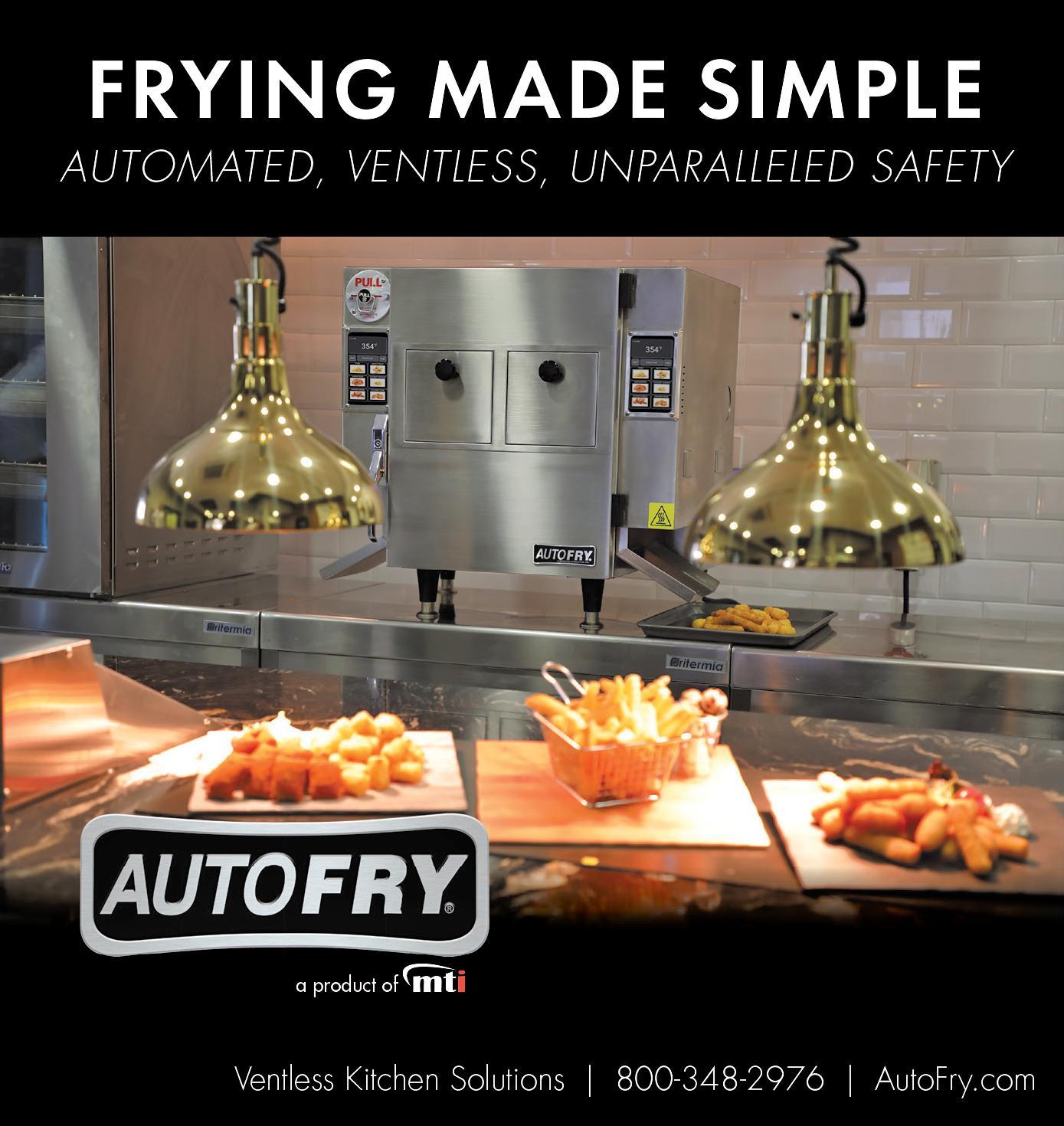

As the New York City hospitality industry continues to grapple with the aftereffects of the pandemic, it faces another threat. Proposed legislation by the New York City Council aimed at restaurants, bars and clubs that, if passed, could reshape the sector in a manner detrimental to businesses and employees alike. Although not directly aimed at third party food and beverage companies that operate restaurants, bars and clubs at NYC hotels this new legislation could have severe impact.
Late last month, our Alliance began an educational campaign with a webinar to address this pressing issue, and it is imperative that industry stakeholders lend their voices to this conversation. The proposed legislation if enacted, will essentially terminate countless sleazes and management agreements as they are structured between third party food and beverage companies and the hotels in which they operate.
The hospitality sector in New York City is a vital economic engine, contributing significantly to the local economy and providing thousands of jobs. However, it is also one of the sectors most impacted by the pandemic, facing unprecedented challenges that have tested its resilience. The proposed legislation, while perhaps well-intentioned, threatens to exacerbate these challenges and undermine the very fabric of the industry.
One of the most concerning aspects of the proposed changes is the potential for increased operational costs. If enacted, these regulations could impose new restrictions and requirements on hotel restaurants and bars, leading to inflated expenses that many establishments simply cannot absorb. In an industry that is already operating on razor-thin margins, these additional costs could lead to layoffs, reduced hours, or even permanent closures. We must remember that every business in this sector is intertwined; the ripple effects of one establishment’s

struggles can quickly impact others in the area.
Moreover, the legislation could stifle innovation and creativity within the hospitality sector. One of the strengths of New York City’s dining and nightlife scene has always been its ability to adapt and evolve in response to changing consumer preferences. By imposing rigid regulations, the proposed changes could hinder the flexibility that businesses need to thrive in an ever-evolving market. We should be fostering an environment that encourages new ideas and unique experiences, not one that stifles them.
The urgency of these discussions is compounded by the upcoming NYC Restaurant Week 2024. This event is not just a promotional opportunity; it is a celebration of the diversity and creativity that our city’s culinary landscape has to offer. It is essential to engage in dialogue about how we can enhance this experience for both diners and businesses, rather than introducing roadblocks that could diminish its impact.
As we look ahead, it is crucial that we come together as an industry to advocate for sensible legislation that supports—not undermines—our businesses. The NYC Hospitality Alliance is offering a platform for operators to be heard through membership, and I urge everyone to participate. Whether you are a restaurant owner, club owner or a supplier, your perspective is invaluable. It is only through collaborative action that we can influence the trajectory of these discussions and ensure that the voices of our community are heard.
Additionally, we must leverage the resources available through organizations like the NYC Department of Small

https:// www.thenycalliance.org/
Business Services. Their insights and support can help navigate the complexities of the current landscape, providing businesses with the tools they need to adapt and thrive. The alliance is here to offer a wealth of information that can be instrumental in shaping the future of our industry.
In a time when the hospitality sector is still recovering from the pandemic, we cannot afford to take steps backward. Instead, we should be focusing on solutions that enhance our industry’s resilience. This is an opportunity for us to demonstrate the strength of our community and our commitment to one another. Let us rally together to advocate for legislation that promotes growth, supports employment, and preserves the unique character of New York City’s hospitality sector.
As we prepare for the upcoming testimony and the discussions surrounding it, I encourage each of you to reflect on the critical role that our industry plays in the broader economy. The stakes are high, and the time for action is now. Let us not allow misguided legislation to derail our progress. Together, we can ensure that New York City remains a vibrant hub for hospitality, innovation, and culinary excellence.

In recent years, the demand for plant-based dishes has surged, driven by a combination of health consciousness, environmental concerns, and ethical considerations. According to a report by Bloomberg Intelligence, the plant-based food market is expected to grow from $29.4 billion in 2020 to $162 billion by 2030, accounting for 7.7% of the global protein market. Diners today are more adventurous and open to trying new flavors and cuisines, especially those that offer health benefits and sustainability. For restaurant owners, chefs and foodservice operators, this presents a golden opportunity to diversify their menus and attract a broader customer base.
Implementing plant-based menu ideas not only caters to the growing segment of vegans and vegetarians but also appeals to flexitarians and meat-eaters looking to reduce their meat consumption.
Menu Design: How to Create a Balanced Menu with Plant-Based Options
Creating a balanced menu that seamlessly integrates plant-based options involves thoughtful planning and creativity. Here are some tips: Highlight Plant-Based Dishes: Ensure plant-based options are prominently featured on the menu. Use appealing names and descriptions to
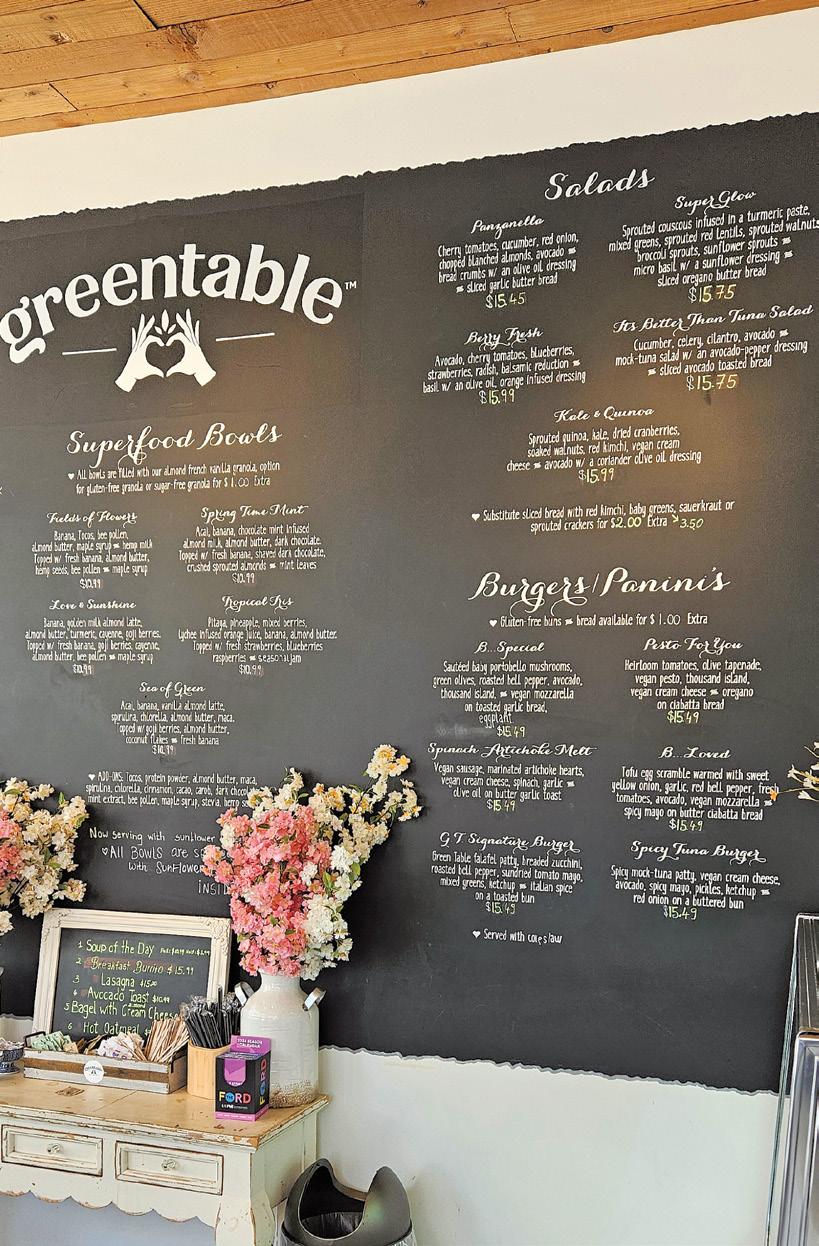

entice customers.
Variety is Key: Offer a diverse range of plant-based dishes, including appetizers, main courses, sides, and desserts. This provides options for all diners, regardless of their dietary preferences.
Seasonal Ingredients: Utilize local and seasonal produce to keep the menu fresh and enticing. This also emphasizes sustainability and supports local farmers.
Fusion and Innovation: Experiment with different cuisines and classic and innovative cooking techniques like roasting, braising, grilling, searing, stir-frying, poaching, and baking to create mouthwatering plant-based dishes that stand out in flavor, texture, and taste.

Staff Training: Importance of Educating Staff on PlantBased Ingredients and Cooking Techniques
Educating your staff about plant-based ingredients and cooking techniques is crucial for the successful implementation of a plant-based menu. Well-informed staff can confidently recommend dishes, answer customer queries, and ensure a positive dining experience. Here are some steps to take:
Training Sessions: Conduct regular training sessions to familiarize staff with plant-based ingredients, their nutritional benefits, and how to prepare them. Collaborate with your plant-based purveyors and vendors to support you with your menu creation and development. Have them conduct
Chef Nina Curtis is a celebrated professional in plant-based cuisine, named one of the 25 Top Women in Foodservice and Hospitality for 2024. With over two decades of culinary excellence, she has redefined the possibilities of plant-based cuisine, earning widespread acclaim from vegans and non-vegans alike. In 2020, she was honored as America’s Top Hospital Chef, highlighting her commitment to health and flavor. In 2023, Chef Curtis curated a historic plant-based menu for a White House State Dinner at the invitation of First Lady Dr. Jill Biden, honoring Prime Minister Narendra Modi. This groundbreaking event showcased her ability to elevate plant-based cuisine to luxurious heights.As the Director and Executive Chef of Plant’ish & Co. Culinary Arts, Chef Curtis continues to innovate and inspire through her delectable creations and leadership. Her role in the American Culinary Corps, a James Beard Foundation and State Department initiative, underscores her dedication to culinary diplomacy and cultural exchange. Chef Curtis’s influence extends beyond the kitchen. She is a passionate advocate, sharing her expertise through captivating dining experiences and enlightening lectures, inspiring culinary professionals and enthusiasts worldwide with her imaginative and nourishing creations.
product training and detailed handson training for your front and back of the house teams to ensure seamless integration and rollout.
Tasting Events: Organize tasting events with purveyors and vendors for the staff to sample new dishes. This helps them understand the flavors and better describe the dishes to customers.
Resource Materials: Provide resources such as ingredient guides, recipe books, and nutritional data to help staff expand their knowledge and skills.
Ingredient Substitutions: Suggestions for Plant-Based Alternatives to Common AnimalBased Ingredients
continued on page 105


Fmost universally beloved fruits. Growing up they were definitely one of my all-time summer favorites, and I was lucky, we had so many fig trees growing all around our house. I still have memories of harvesting them early in the morning, when the sun was just peeking out from behind the trees. That was when they were best, firm yet supple, and soft like a baby’s skin – that’s how we knew they were perfectly ripe.
The fig tree is believed to be one of the earliest fruit trees to be cultivated. They are steeped in a rich and ancient history that spans 11,000 years, and there’s even some evidence of cultivation that dates as far back as the neolithic period.
In Ancient Mesopotamia, figs were first domesticated in the fertile crescent, a region in the Middle East that includes modern day Iraq, Syria and Turkey. In Ancient Egyptian and Greek civili-


zations, figs were viewed as a highly valued and sacred fruit that was considered a symbol of prosperity and fertility. Figs made their way to Ancient Greece in 5000 BC, by way of China. Over time they became a well-known symbol of wealth, and abundance. The Greeks considered them a gift from Demeter, the goddess of harvest, fertility, and the earth. Enjoyed by rich and poor alike, dried figs were an integral part of the daily diet of ancient Greeks.
Fig Forward…
These days, these juicy little gems are still highly valued, and grown just about everywhere in Greece. They thrive in the warm, humid, Mediterranean climate, even when grown at higher elevations. To thrive, fig trees seem to need a special combination of dry months during which they flower and fruit, followed by a quiet period of winter chilling. This seems to be the magic combination that allows some fig trees to be able to live as long as two hundred years.
While relatively low maintenance, growing fig trees take time and caremost fig trees need three to five years to start producing a ripe fruit; once they do, depending on the variety, they go on to yield one or two harvests per year. It’s also worth noting that once figs have been picked, they have a very short shelf life, only lasting about 72 hours. It is for this reason that many figs are produced specifically to be dried.
It’s important to note that while there are a few main varieties that everyone knows (Black Mission, Calimyrna, Kadota, Golden Figs, Brown Turkey, Dottato), there are over 700 varieties currently grown throughout the world – all with unique flavors and textures. Nevertheless, they all have something interesting in common – figs are known as Syconium, or fruits that are actually many fruits in one – in fact, each seed inside a fig is its own flowering fruit… which makes them quite special!
The Mediterranean, though the perfect climate for growing figs, is not alone

Chef Maria Loi is an entrepreneur, Greek food ambassador and healthy lifestyle guru. The author of more than 36 cookbooks, she is also the host of the award winning PBS series, The Life of Loi: Mediterranean Secrets, now airing its second season on PBS stations nationwide. Both seasons 1 & 2 are available to stream on PBS Passport, Amazon Prime Video, Apple TV, Amazon Freevee, Roku, and Plex TV. The Life of Loi aims to build an inspirational, educational movement around the Mediterranean diet and lifestyle. Loi Food Products, her specialty brand built on traditional ingredients from Greece, includes refrigerated dips, savory pies, pastas, botanical herbs, and olive oil sold on QVC, at Whole Foods Markets, Fresh Direct, and at other retailers. Chef Loi is also the namesake of the acclaimed restaurant, Loi Estiatorio, in the heart of Midtown Manhattan. Connect with her on LinkedIn, follow her on Instagram and Facebook, and learn more about her food philosophy at loiestiatorio.com/chef-loi/.
in raising these prized fruits. They are now grown all around the world with Greece, Morocco, Algeria, Spain and Turkey among the top global producers, creating a plethora of products, from jams and honeys to pharmaceuticals. California, however, has also become a major supplier of dried figs. They produce two varieties, mission figs and golden figs. It was New World Spanish missionaries who first introduced Mission Figs to the America’s back in the early 16th century. Grown in the San Joaquin Valley, California now ranks second as a fig producer globally, (right after Turkey) and first within the nation.
As we know, figs can be consumed fresh or dried, including the skin, flesh and seeds – and with all figgy goodness comes a host of health benefits! Figs are a great source of calcium, potassium and iron, as well as dietary fiber.
continued on page 58

What many people don’t know is that while dried figs contain more sugar and calories, they also have more dietary vitamins and mineral then their fresh counterparts. The drying process actually boosts their fiber content, and makes them easier to digest. It also maximizes their health benefits which includes: promoting heart health by lowering blood pressure and cholesterol; aiding digestion; promoting a healthy gut; and serving as an effective laxative. Remember, before adding any foods to your diet, always ask your doctor.
My Papou (grandfather in Greek) believed that both the leaves and the sap from the fig trees have special medicinal qualities. He always told us they would be helpful in healing a variety of things that ailed us, everything from skin conditions (like eczema and psoriasis), to helping with weight loss by curbing sugar cravings, to boosting our metabolism and immune systems.
I will always remember how my Papou loved eating them. It was simple, and delicious - he’d just take two figs, put some walnuts in between them, and then drizzle with honey and some nice freshly ground pepper.
Whenever I would see him making one of his little sandwiches, I would ask him to make one for me, and we would toast with them, as the honey dripped
down our fingers. It’s the simple things in life, as he taught me – figs in the summer were one of those things…
There are an infinite number of ways you can incorporate figs, dried or fresh, into your daily meals. I love using them in breads, salads, and especially desserts.
Think about simple roasted figs, dress simply with olive oil, a drizzle of honey, salt and black pepper – as the sugars caramelize, they warm the flesh, creating a beautifully harmonious burst of juicy flavors as you bite into them.

Or, what about summertime grilling – it doesn’t have to be meat, though I think lamb or goat would be the perfect pairing for bright and sweet combination of figs, lemon, and oregano. I love the idea of using meaty mushrooms instead of meat with these same flavors –the earthy unctuous nature of the mushrooms goes so well with the fruity, floral flavor of the figs.
Salads, of course, are the perfect playground for figs, whether fresh or dried – I like using arugula as a base because the peppery nature of the leaves works so well with the sweet, succulent figs – and if using dried, the textural bonus of the crunchy seeds can substitute for croutons.

My Yiayia (grandmother in Greek) always made us the traditional spoon desserts, Glyka Koutaliou, with figs. She simmered them in water with sugar and honey, creating simple syrup, and left them on low heat until they were almost translucent. She’d transfer them to a jar, and we’d all sneak a fig or two until they were gone, leaving only the figgy syrup behind. She herself didn’t like the figs, because the seeds would get stuck in her teeth, but she would use the syrup to bake with, and everything she made with it was infused with fig-essence. Keep in mind, as Papou reminded us, it’s not just the figs themselves that are of culinary interest - the leaves themselves can provide a savory addition to your favorite dish! The leaves are ed-

ible, and they have a wonderfully sweet, nutty, earthy aroma. I like using them for some meat dishes to lend not only flavor, but texture as well. In Greece we use the leaves as a wrapper to make small little bundles of meat that are then buried in the ground and topped with coals. The meat is then slow-cooked until its beautifully tender and delightfully fragrant.
While it’s not recommended that you eat the leaves alone, they do lend themselves to being used in a variety of ways: they can add a subtle flavor to syrups, be blended into an oil for a nutty accent, or crushed and then mixed into what could become a flavorful ice cream or even sorbet.
One of my most memorable associations I have with figs brings me back home to trees that lined our garden. It was there, under one fine old fig tree that my father reflected on my future at the age of seven, after having tasted my meatballs (the first I ever made), when he said that he knew that one day I would become a great chef… and the rest, as they say, is history.


By Sophia Maggio
Through a pandemic, dietary trends, and other shifts in the food industry, consumers continue to crave pizza. This consistent demand creates an opportunity for restaurants to expand and innovate their pizza offerings, but creating an authentically Italian and personalized pie for each dining patron is no easy task.
Rich Products has responded to the call for authentic pizza solutions that reflect more globally inspired varieties with a diversified product portfolio, ranging from dough balls and parbaked crusts to fully topped pizzas. Even labor-challenged restaurants can offer creative pizza pies, as the Rich’s menu includes a variety of high-quality options, many that simply go from freezer to oven, and then to hungry customers.
79 years ago, the family-owned company began with a non-dairy top-
“Consumers
love their “go-to-pizza”, but more and more, they want to try more globally or regionally inspired pizzas. Rich’s is helping many operators bring those products to the market.” — Donna Reeves-Collins
ping innovation and has never looked back. Rich’s has since expanded into a 5.5-billion-dollar business with multiple categories, including desserts, bakery, pizza and flatbread, appetizers, and specialty toppings: all used in homes, restaurants, bakeries, c-stores, schools, and even colleges and universities around the world.
“We operate in 106 countries, and we’re an extraordinarily well-run company with a mandate to stay private, family owned, and customer-obsessed. This underpins our mantra to do what’s right, no matter what, for our
customers and our associates,” said Donna Reeves-Collins, Senior Vice President of the Pizza and Flatbread Category at Rich Products.
In 2013, the company embarked on a strategy to become the “single-source solution” for operators serving pizza. “We’d just acquired a company with well-regarded capabilities for parbaked crusts and flatbreads: a space ripe for innovation. Over the past 10 years we have built, bought, and assembled the most robust set of pizza capabilities – everything from frozen dough to fully topped pizza capabilities


Donna Reeves-Collins
and everything in between, including gluten-free and plant-based. We stay focused on what consumers want and what operators need amidst the evolving market dynamics,” Reeves-Collins reflected.
Many consumers still view food, and pizza in particular, as an affordable luxury. “They’re willing to spend money if the experience is worth it, and they are definitely also looking for more authentic, innovative varieties,” Reeves-Collins observed. “They don’t want the plain pizza they’ve been eating all the time; they want more globally- or regionally inspired pizzas, so operators are seeking ways to deliver on these expectations. Operators look to Rich’s to help them by bringing those products to the market,” she continued.
To feed customers and support operators with a constant flow of innovation, the company developed unique capabilities (R&D and infrastructure) to offer a full spectrum of pizza prod-
continued on page 118



For most people, state fairs are about fun — and, yes, funnel cake. But for bakers across the nation, it’s the chance for hometown glory, as only the upper crust walk away with a coveted blue ribbon recipe.
But who’s really best in show? In the new competition series Blue Ribbon Baking Championship, 10 awardwinning pastry masters hailing from state fairs around the United States will compete against each other in the biggest blue ribbon Bake-Off yet.
Each contestant already has a blue ribbon to their name, but to win this competition, they’ll have to make like dough and rise to the top to be the best in the nation. Over eight episodes, they’ll go head-to-head in a series of challenges to clinch the title of America’s best baker — and the chance to win $100,000.
Actor Jason Biggs, who’s best known for his appear-




ances in the American Pie film franchise, will oversee the competition alongside internationally acclaimed food and lifestyle expert Sandra Lee, who won a blue ribbon early on in her legendary career.
Alongside Sandra Lee, former White House pastry chef Bill Yosses and award-winning artisan baker Bryan Ford also serve as judges.
Matt Sartwell, Managing Partner, Kitchen Arts & Letters Bookstore in New York City shares his book reviews...
Sartoria Panatieri
by Rafa Panatieri and Jorge Sastre
From a pizza hotspot in Barcelona comes an imaginative and handsome book full of ideas for both the pies
as well as house-made ingredients which they incorporate, particularly cured meats.
Author Rafa Panatieri was born in Brazil to an Italian family. A restless spirit who trained as a veterinarian before heading to Europe to cook for, among others, the Rocas, he opened his neighborhood pizza shop on a Barcelona side street, where it quickly became a destination.
Prioritizing locally produced ingredients, Panatieri and his business partner Jorge Sastre (also a fine-dining escapee), have developed a distinctive range of pizzas and related dishes:
• Sartoria’s Margherita is made with a roasted cherry tomato sauce and dotted with basil hollandaise
• Potatoes, cured pork belly, and bottarga top another pie which is garnished with an egg yolk
• Roasted carrot cream, pickled carrots, goat’s ricotta and fried pork rinds grace another
• Mascarpone and figs are matched with cured pork loin
In addition there are a cluster of intriguing starters, such as celeriac in three textures, a few calzones and focaccia, and even some desserts.
An ambitious and interesting treatment.
Selected Northern European Restaurants Awarded By Michelin by Bent Christensen, Mads Borgquist Schou, and Mads Stenstrup
This survey of 23 restaurants in seven countries arrestingly highlights those that the authors–Danish food writers and dining enthusiasts–feel best embody both the historical commitment of Michelin to fine dining and the authors’ own standards of living well.
Chapters on each restaurant include beautiful photocontinued on page 64

graphs of plated food, dining rooms, and the staff at work, as well as an essay setting forth why a particular establishment has been included. There are only occasional sample menus or recipes, and for many restaurants, no recipes at all.

The chosen restaurants are:
• Alchemist, Chef Rasmus Munk. (Denmark)
• Alain Ducasse at the Dorchester, Chef Jean-Phillipe Blondet (United Kingdom)
• Á l’aise, Chefs Jan Nielsen, Ulrik Kepsen, and Mia Kondrup (Norway)
• Aqua, Chef Sven Elverfeld (Germany)
• Boury, Chef Tim Boury (Belgium)
• De Librije, Chef Jonnie Boer (Netherlands)
• L’Enclume, Chef Simon Rogan (United Kingdom)
• Frantzen, Chef Bjorn Frantzen (Sweden)
• Frederikshoj, Chef Wassim Halal (Denmark)
• Geranium, Chef Rasmus Kofoed (Denmark)
• Jan, Chef Jan Hartwig (Germany)
• Jordanær, Chef Eric Vildgaard (Denmark)
• Lyst, Chef Daniel McBurnie (Denmark)
• Maaemo, Chef Esben Holmboe Bang (Norway)
• Noma, Chef Rene Redzepi (Denmark)
• Rutz, Chef Marco Muller (Germany)
• Schanz, Chef Thomas Schanz (Germany)
• Sketch, Chef Daniel Stucki (United Kingdom)
• Syttende, Chef Jasper Koch (Denmark)
• The Fat Duck, Chef Heston Blumenthal (United Kingdom)
• The Waterside Inn, Chef Adam Wright (United Kingdom)
• Tri, Chef Nicolas Min Jorgensen (Denmark)
• Zilte, Chef Viki Guenes (Belgium) Inspiring and evocative.
Editor’s Note About Podcasts- Listen and subscribe wherever you get your podcasts, including on Apple Podcasts, iHeart, Spotify, Stitcher, Google Podcasts, Audible & more.
Food with Mark Bittman

Former New York Times food journalist and #1 bestselling author Mark Bittman (How to Cook Everything; VB6; Animal, Vegetable, Junk) is joined by co-host (and daughter) Kate to explore all aspects of food – from what to have for dinner, how to raise healthy children, and how to perfect your cooking routine to big picture questions about climate change, sustainability, food policy, and global hunger. Each week, Mark and Kate talk with cooks, celebrities, chefs, farmers, activists, policymakers, and food-lovers about the role of food in their lives, what they love to cook, and the ways that food impacts our society. Mark and Kate offer handy cooking tips, recipes, answers to your questions, and much more.


by Josephine Dlugosz
Maintaining a loyal, dedicated customer base is crucial to a food service operation’s success. Not only does it increase overall profits and ROI, but it promotes conviviality and can lead to meaningful relationships within a community between an operator and it customer base. While there is a myriad of ways an operator can encourage customer loyalty, one of the most important is exceeding expectations, time and time again.
For generations that goal has been accomplished by creating a winning concept and then replicating that brand in multiple locations. The idea being that there would be an economy of scale across several aspects from the design of the dining area to the equipment package for the kitchen.
In 1971, Richard Melman and Jerry Orzoff are created as the first to own and license a variety of restaurant concepts, today owning, licensing or managing 115 establishments as Lettuce Entertain You Enterprises, Inc. But in 2024, a new generation of
“Having multiple concepts in one market allowed us to apply similar service and operational standards across the different concepts and offer visitors to Hilton Head a variety of choices for their week of vacation, all with the SERG quality seal of approval.” — Alan Wolf
visionary operators are leading the charge to create an entity dubbed “MCRCs”, Multi-Concept Restaurant Company. Tony Treadway, founder of Tennessee based Creative Energy, a foodservice agency helping food manufacturer target and land MCRCs as well as regional chains, says MCRCs are ideal targets where a single contact can grow sales significantly across multiple concepts within a single metro market.
These operations have turned the traditional chain model on its head. They in fact take real estate opportunities in local marketplaces across the nation that may be next to each other or in the very same neighborhoods and create totally different concepts
and brands.
One of the nation’s most successful MCRCs is operating in Hilton Head Island, South Carolina, The SERG Restaurant Group has been striving to exceed its customers’ expectations since 1984, with a recipe for success based on fostering a community-driven atmosphere. Its desire to create an unforgettable customer experience is what keeps both locals and seasonal tourists coming back each year.
With an approximate 2.5 million tourists each year, Hilton Head Island has no shortage of restaurants to appeal to the masses, and this fact is exactly what motivates SERG to stand out in the crowd. “Our guests have a high expectation of what sort of food,

service, and atmosphere they will encounter,” said Alan Wolf, the CEO and President of SERG Restaurant Group. “So we have to both meet and exceed those expectations by providing coastal hospitality that makes a visit to one of our restaurants stand out from the other choices diners have.”
The first SERG concept to launch in 1984 was Giuseppi’s Pizza and Pasta by founder Steve Carb. Since then, the group has opened restaurants ranging from southern comfort to BBQ, to seafood and steak. “Having multiple concepts in one market allowed us to apply similar service and operational standards across the different concepts and offer visitors to Hilton Head a variety of choices for their week of vacation, all with the SERG quality seal of approval,” said Wolf. These high expectations for hospitality, along with their wide range of offerings, assist in establishing a loyal customer base.
Wolf explained that the SERG logo that is present at each restaurant may comfort guests already familiar with other SERG restaurants. “And it has led to cross-pollination of our guests across the various concepts,” he continued, highlighting a key feature of SERG Restaurant Group, and one that has brought them success over the decades.
continued on page 109

The recent Summer Fancy Food Show at the Javits Center was a culinary extravaganza that brought together food industry professionals, including restaurant chefs and owners, from around the world. This year’s event, themed “Global Flavors, Local Innovations,” showcased an impressive array of products that offered fresh menu ideas and innovative solutions for the restaurant industry.
One of the standout features of the 68th edition of the show were the international pavilions. Countries like Spain, France, Greece, and Korea had

dedicated spaces brimming with traditional and contemporary food products that could elevate any restaurant menu.
Spain brought a vibrant array of products, including artisanal cheeses, cured meats, and a variety of olives and olive oils. Chef Maria Lopez, an exhibitor from Valencia, showcased a line of organic olive oils infused with flavors such as garlic, rosemary, and lemon. “These oils are perfect for drizzling over salads, finishing grilled meats, or simply dipping with fresh bread,” she explained. “We believe they can add a unique Spanish twist to any dish.”
France dazzled attendees with its
sophisticated offerings, ranging from fine wines and cheeses to delicate pastries. Pierre Dubois, a chef from Lyon, highlighted a new line of pâtés and terrines made with locally sourced ingredients. “Our duck liver pâté with Armagnac has been particularly popular,” he noted. “It’s a luxurious addition to any charcuterie board or as an appetizer in high-end restaurants.”
Greece showcased its rich culinary heritage with a focus on olives, feta cheese, and honey. Nikos Papadopoulos, a Greek olive oil producer, emphasized the versatility of their products. “Greek olive oil is known for its ex-



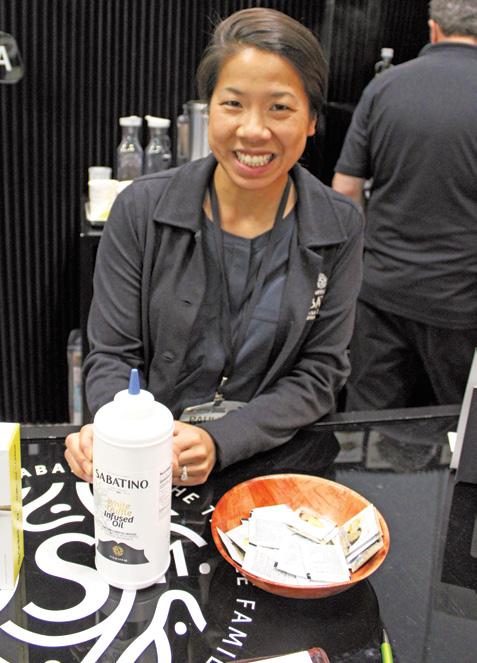
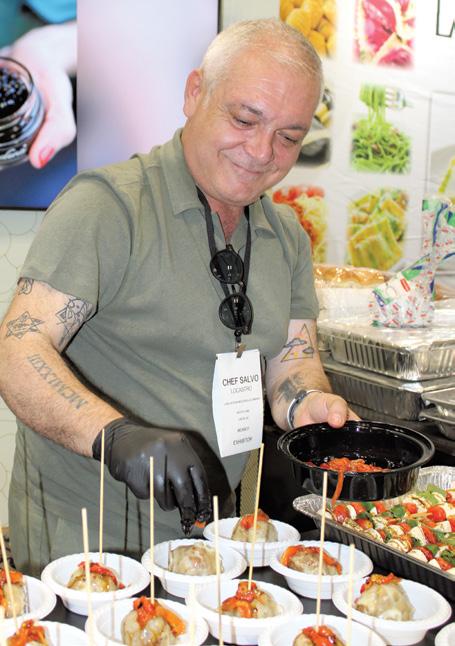
ceptional quality and flavor,” he said. “It can be used in cooking, as a salad dressing, or even as a dipping sauce. It’s an essential ingredient for Mediterranean cuisine and beyond.”
Korea impressed with its range of fermented foods and spicy condiments. Kimchi, gochujang (Korean chili paste), and doenjang (fermented soybean paste) were among the highlights. Chef Min-Jae Park from Seoul demonstrated how these ingredients could be incorporated into various dishes, from traditional Korean fare to continued on page 70



fusion cuisine. “The umami flavors and health benefits of fermented foods are increasingly popular,” he said. “Restaurants can offer unique dishes that appeal to health-conscious diners.”
Beyond the international pavilions, the Summer Fancy Food Show featured a diversity of innovative products designed to meet the evolving needs of the restaurant industry. From plantbased alternatives to sustainable packaging, the show was a hub of culinary innovation.
Plant-based options were a major highlight, reflecting the growing demand for vegetarian and vegan dishes. GreenBite, a startup known for its plant-based seafood alternatives, drew significant attention. Their shrimp and crab cakes, made from algae and pea protein, were nearly indistinguishable from their seafood counterparts. “These products are perfect for restaurants looking to expand their plant-based menu offerings without compromising on taste or texture,” said co-founder Lisa Chen.
Sustainable solutions were also prominently featured. EcoPack, a company specializing in eco-friendly packaging, showcased their latest products made from biodegradable materials. “Sustainability is no longer just a trend; it’s a necessity,” remarked EcoPack CEO John Mitchell. “Our packaging solutions not only reduce environmental impact but also align with the values of modern consumers.”
The culinary demonstrations at the Summer Fancy Food Show provided a dynamic platform for chefs to showcase new techniques and recipes. These live presentations were a source of inspiration for restaurant owners looking to innovate their menus.
Chef Miguel Ramirez, known for his expertise in molecular gastronomy, wowed the audience with his demonstration of a deconstructed ceviche. Using spherification techniques, he transformed traditional ceviche ingredients into visually stunning and flavorful pearls. “This approach allows chefs to present familiar dishes in an entirely new way,” he explained. “It’s about creating an experience as much as a meal.”
“The show gave me so many new ideas, from the plant-based seafood to the eco-friendly packaging. It’s exciting to see how the industry is evolving.” — Restaurant owner Samantha Green
Chef Amina Hassan from Morocco brought the warmth and spice of North African cuisine to the stage with her lamb tagine. The aromatic dish, cooked slowly with a blend of spices, apricots, and almonds, captivated the audience.
“Tagine is a dish that tells a story,” she said. “It’s about tradition, but it’s also incredibly versatile. Restaurants can experiment with different proteins and vegetables to make it their own.”
The Summer Fancy Food Show was not just a feast for the senses but also a significant networking opportunity. Attendees from all sectors of the food industry exchanged ideas, formed partnerships, and discovered new products.
Samantha Green, owner of a farmto-table restaurant in Brooklyn, found


the event particularly enlightening. “I’m always looking for ways to incorporate sustainable and locally sourced ingredients into my menu,” she said. “The show gave me so many new ideas, from the plant-based seafood to the eco-friendly packaging. It’s exciting to see how the industry is evolving.”
David Martinez, a chef from Miami, was inspired by the international pavilions. “The flavors and ingredients from Spain, France, Greece, and Korea were incredible,” he enthused. “I’ve already got ideas for new dishes that blend these influences with my own style. It’s been a fantastic experience.”
Once again this year’s edition of the Summer Fancy Food Show at the Javits Center was a resounding success, offered restaurant chefs and owners

and the distributors that serve them a wealth of new products and ideas to enhance their menus. From global flavors to cutting-edge innovations, the show highlighted the dynamic and ever-evolving nature of the food industry. As attendees departed, their minds were abuzz with possibilities, ready to bring the world of flavors and innovations they had experienced back to their own kitchens and dining rooms. The event not only showcased the best of what the culinary world has to offer but also underscored the importance of innovation, sustainability, and cultural exchange in shaping the future of food.
Visit https://www.specialtyfood. com/fancy-food-shows/ for more information on the 2025 shows.


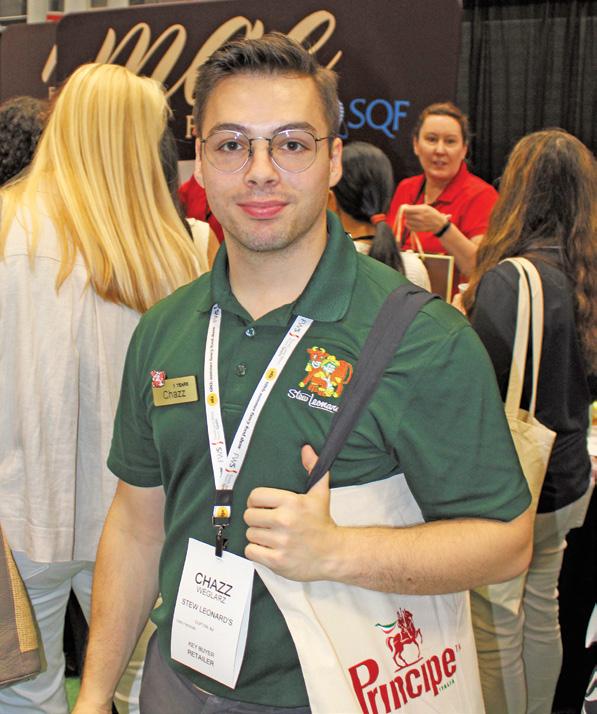

By Parker Shatkin
The shortage of kitchen equipment that occurred during and post-pandemic, forced both scarcity and pricing to skyrocket. The thought was that with factories back to full capacity that the E&S pricing would level off. It simply did not happen as inflation had its impact on the world marketplace.
This has made it challenging for domestic restaurant operators and the dealers that serve them to find value. Rather than falling prey to the market, Galaxy Group, a wholesale distributor based out of New Jersey, has instead managed to release two lines of pizza ovens that serve the needs of American pizzerias and restaurants at a competitive price.
“There was a huge shortage of pizza ovens during the pandemic,” said Dave Rourke, Galaxy Group’s VP of sales. “We realized that the American market needed this product.” The cost of both materials and labor had risen dramatically, and manufacturing ovens domestically wasn’t going to cut it. “A lot of what is built into the price of a product in the U.S. is marketing,” said Rourke. “Products by name brands are always going
“Customers are looking for a more consistent bake and constant heat, so that they don’t have to open the oven to turn the pizzas as often, which heats the kitchen and lowers the temperature in the oven.” — Dave Rourke
to sell better, so a lot of money goes into advertising those brands.”
This led the team at Galaxy Group to go on a worldwide search to find pizza ovens that offer “bells & whistles” at an affordable price point.
Manufacturers in Turkey were able to build ovens set specifically to U.S. standards which could then be sold at a competitive price. Although European distributors may produce less expensive products, Rourke highlighted the importance of domestic distributors’ familiarity with the American market: “A lot of European companies have tried to introduce their products into the American market, but they fail because they don’t understand it,” he said. European equipment, while beautifully made, often isn’t built to be as durable as American equipment. “Because we have to handle
more volume here in the States, European chefs tend to be gentler on their equipment, which doesn’t always hold up well in an American market.”
Galaxy Group’s Firestone series is a traditional U.S. pizza oven. “It’s built like a beast,” Rourke said, with heavy iron and high BTUs. “This oven is designed to withstand the volume that’s required in American kitchens.” Galaxy’s Melstone series is closer to a European-style oven, but is built to last. The Melstone has a sleek design, with more small burners and lower BTUs for a more accurate temperature control. Both series come in gas and electric models. Galaxy Group’s pizza ovens’ stainless-steel exterior is easy to clean, and the aluminized interior makes for a longer-lasting oven which is able to stand up to acidic ingredients like tomato sauce.

“Customers are looking for a more consistent bake and constant heat, so that they don’t have to open the oven to turn the pizzas as often, which heats the kitchen and lowers the temperature in the oven.” Both the Firestone and the Melstone series save energy by preventing heat from escaping through the sides of the oven, improving the safety of the ovens. “On the electric models it’s easy to set the exact temperature needed so that extra energy isn’t wasted heating up the oven to a higher temperature than is needed,” Rourke continued. The ovens are fully insulated and come in different deck sizes for different volumes. By offering a range of products that cater to different styles and preferences, Galaxy Group ensures that every customer can find an oven that meets their specific needs. The company’s focus on quality, durability, and innovation positions them as a leader in the market, capable of delivering top-notch pizza ovens at competitive prices.
For more information or to explore Galaxy Group’s range of pizza ovens, potential customers can visit www.galaxygroupcorp.com or call the office directly at (908) 315-3222..
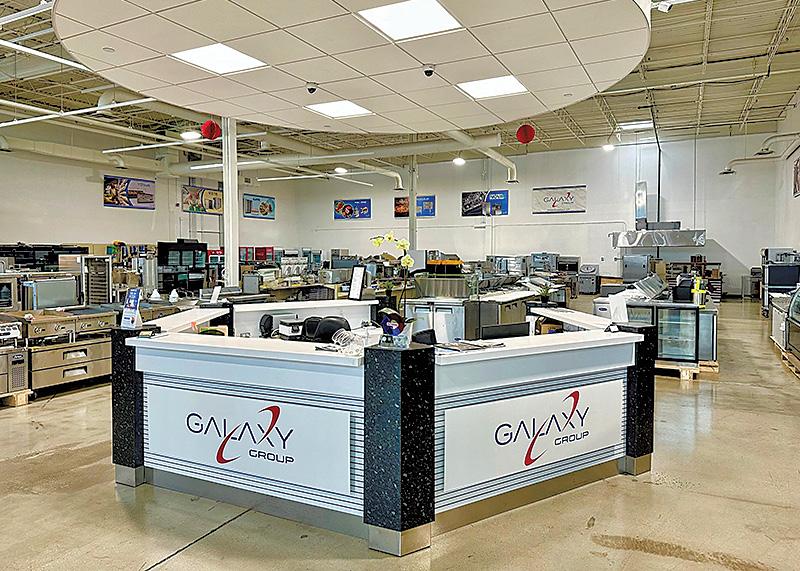

As Table to Table approaches its 25th anniversary, the New Jersey-based food rescue organization is preparing for its most ambitious event yet—the 2024 Chefs Gala. Scheduled for September 25th at the Edgewood Country Club in River Vale, NJ, this reimagined gala will bring together 25 of New Jersey’s finest chefs in an avant-garde culinary experience, celebrating the organization’s quarter-century of impact.
Table to Table, New Jersey’s first food rescue organization, has been at the forefront of addressing food insecurity and food waste in the state. Since its inception in 1999, the organization has rescued and delivered enough food
for over 311 million healthy meals throughout northern New Jersey.
“Table to Table is dedicated to collecting fresh and perishable food that would otherwise be wasted and delivering it to organizations serving people experiencing hunger in Bergen, Hudson, Essex, and Passaic counties,” noted Heather Thompson, Table to Table’s Executive Director. “Our mission is to provide nutritious food to those in need, free of charge, ensuring good nutrition is accessible to families, children, veterans, and older adults.”
Thompson’s rich background in nonprofit work, focusing on food insecurity and poverty, has been instrumental in driving the organization’s mission forward. “I started my career at City Meals on Wheels in New York, ensuring homebound elderly people received the nourishment they needed. Joining Table to Table felt like coming home for me, as I live in Essex County and have always been passionate about addressing food insecurity.”

The upcoming Chefs Gala on September 25th is set to be a unique event, where celebrated chefs will cook tableside, crafting a delicious multicourse feast for guests. This year’s event is particularly special as it marks Table to Table’s 25th anniversary. “We’re elated to celebrate our silver anniversary by putting a fresh new twist on a celebrated event. What better way to celebrate 25 years of im-
“Our mission is to provide nutritious food to those in need, free of charge, ensuring good nutrition is accessible to families, children, veterans, and older adults.” — Heather Thompson
pact—reducing food waste and nourishing neighbors in need—than with an unparalleled culinary experience bringing together 25 of NJ’s best chefs, and Jamie Knott as our Chef Honoree.”
The 2024 Chef Honoree, Jamie Knott, is renowned for his innovative culinary skills and commitment to quality. As the chef-owner of notable restaurants such as Saddle River Inn, Madame, and Kinjo, Knott’s dedication to locally sourced, fresh ingredients aligns perfectly with Table to Table’s mission. “Jamie Knott’s diverse experience and deep understanding of the culinary world make him a leading figure in the industry,” Thompson added. “His commitment to giving back to the community through his involvement with Table to Table and other nonprofits is truly commendable.”
The event will also feature Co-Chairpersons Chef Ryan DePersio and Chef AJ Cappella, who bring their culinary expertise to ensure an unforgettable experience for all attendees. DePersio, the owner of Battello and Kitchen Step, and Cappella, the Executive Chef of Summit House, are excited to contribute to the success of this year’s gala.
As Table to Table celebrates its 25th anniversary, the organization has set an ambitious goal to rescue and deliver enough food for 25 million meals this year. This target reflects the organization’s unwavering commitment to combating hunger and food waste. “Our goal this year is to rescue and deliver enough food for 25 million meals. It’s an ambi-
tious target, but it’s achievable. Each dollar donated helps us rescue and deliver 10 meals. These funds fuel our operations, keep our trucks on the road, and enable us to conduct outreach to bring in more food donors and volunteers.”
Table to Table’s success relies heavily on the support of volunteers and food donors. The organization’s iRescue app has made it easier than ever for individuals to get involved in food rescues. “The Table to Table iRescue app allows volunteers to see available food rescues based on their location or schedule. You can download the app, sign up as a volunteer, and start rescuing food. It’s a simple process that can take as little as 45 minutes to an hour, and it guides you through every step.”
Restaurants and food services interested in becoming food donors are encouraged to join the mission. The onboarding process is straightforward, and the Table to Table team is dedicated to making it easy for new donors. “We welcome new food donors, especially those with fresh, perishable foods like produce, protein, dairy, and prepared meals,” Thompson concluded. “Our team will work directly with them to set up the donation process, ensuring it’s easy and efficient.”
For anyone interested in getting involved, they can reach out at hthompson@tabletotable.org, by visiting the Table to Table website at tabletotable. org, or calling 201-944-1525.

By Karen Jones
It is a foregone conclusion that the increase in takeout and delivery service has totally transformed the foodservice business. The fact that 60% of Americans are ordering takeout and delivery at least once per week, has created a tremendous strain on the footprint in the kitchen. This phenomenon has increased the need for innovative temperature controlled refrigerated solutions at varying types and temperatures.
With nearly 75 years under its belt, Leer Inc, a master in the temperaturecontrolled storage industry, is well positioned to transform this space and has created another in a long list of solutions from the Wisconsin based company to meet the increasing demands of the nation’s food service operators.
“We understand the challenges businesses face in maximizing their cold storage capacities with reliable and effi-
“We ran a trial with a Dairy Queen franchisee who only needed some extra space for four or five months a year. It was the perfect setup for them because it accommodated their overflow.” — Ben Albregts
cient solutions,” said Ben Albregts, president of Leer Inc. “Our new, fully weatherproof, Outdoor Refrigerated Reach-In Storage units address these needs by allowing businesses to leverage their unused outdoor real estate.”
Engineered to suit the needs of varying commercial entities, the idea for these new refrigerated storage units was born, Albregts continued, from a prototype his company developed for a customer six years ago who sought solutions related to curbside pickup at grocery stores. “They reached out to us expressing the

need for a walk-in cooler. They later asked for something a little smaller that was akin to our Merchandisers. We’ve always done the Merchandisers in a refrigerated setting for niche applications, but it never took off. But as we analyzed our value stream it became clear that there was a need to add outdoor refrigeration options to the market.”
Albregts said the Leer Inc team, a 100% employee-owned company that has been “perfecting products and providing solutions,” since the 1950s, set to work. “We used the footprint of our
Merchandisers and developed it in a low temp freezer application or a medium temp cooler, designed it with that same durability and made it available to anyone who needed extra outdoor space.”
Additionally, in food service, there are some retail establishments that are space constrained, but they have a back door and there’s an electrical outlet and that’s really all you need. We ran a trial with a Dairy Queen franchisee who only needed some extra space for four or five months a year. It was the perfect setup for them because it accommodated their overflow.”
He added that a model was developed in 2018-2019 available only on the Leer Inc website and sales went through the roof. “We realized then that we needed more sizes and so we developed a 2-door, a single door, and then we developed a continued on page 116



The use of e-bikes in the hospitality industry continues to rise, with delivery workers routinely utilizing ebikes to make food deliveries across New York City. Major concerns have arisen due to the dangers caused by the lithium-ion batteries that power these e-bikes. Recently, New York City has been plagued with a dramatic increase in fires caused by these lithium-ion batteries leading to loss of homes, loss of businesses, injuries, and fatalities. There have been hundreds of fires in New York City caused by these lithium-ion batteries with more and more occurring each year. The FDNY cautions that these lithium-ion batteries can rapidly overheat and ignite with no real warning.
As a result of this significant increase in fires caused by lithium-ion batteries, there has been a public push to hold employers and third-party delivery platforms liable for e-bike safety, as opposed to the onus being on the delivery worker to bear the responsibility of maintaining the safety of their ebike. For example, there is a bill pending before the New York City Council that would mandate that food delivery companies provide safety-compliant ebikes at the company’s expense, making safety compliance the responsibility of the company. This bill is particularly focused on third-party delivery platforms such as GrubHub, DoorDash, and Uber Eats. The bill may gain traction going forward because there are already things in motion at the state and city level addressing the issues surrounding the use of e-bikes.
Specifically, New York State and New York City have begun issuing additional regulations surrounding e-bike sale, use, and safety. Politicians have signaled

that legislative efforts have only just begun. On July 11, 2024, Governor Hochul signed a new set of laws addressing the safety issues for e-bikes and lithium-ion batteries. This set of laws imposes new safety regulations onto retailers of ebikes, creates a multi-agency coalition to develop additional safety protocols regarding safe e-bike use, and prohibits the sale of lithium-ion batteries that fail to comply with particular standards. Separately, on July 22, 2024, Mayor Adams announced a $2 million program that will permit trade-ins of unsafe ebikes and lithium batteries, allow property owners to apply for installations of sidewalk charging cabinets for these devices, and provide comprehensive FDNY safety education. There is also an existing New York City regulation, that became effective in September 2023, that prevents persons from distributing, leasing, renting, or offering to sell e-bikes and related devices if they do not comply with certain safety standards.
The reality is that the use of e-bikes disproportionately affects workers in the hospitality industry. Given the overwhelming presence of these e-bikes in the industry, it is crucial that restaurant owners understand the changing regulations and safety precautions they should take to protect their establishment and their workers. If you are currently leasing e-bikes to your employees, local regulations may already apply to you.
Practically speaking, owners should check with their insurance policies to make certain that fires related to e-bikes are not excluded from coverage. Further, while city and state regulations work to get rid of unsafe lithium-ion batteries, owners of hospitality establishments should avoid storing e-bikes inside their premises. In particular, the FDNY warns of some activities that increase your risk of fire with regards to these lithium-ion batteries, such as: (i) failing to use the original battery, power adapter, or power cord to charge the device; (ii) not plug-

Caitlin Breen is an Associate in the Labor & Employment Group at Ellenoff Grossman & Schole LLP. Her practice spans a broad range of employment matters throughout all phases of litigation, including wage and hour matters, employment discrimination, retaliation, and other employment related claims. Ms. Breen assists clients with employment issues, including drafting workplace policies and handbooks and advising regarding compliance with federal and state employment laws. In addition to her practice, Ms. Breen serves as an adjunct professor at Cardozo School of Law where she teaches a course on lawyering and legal writing. Ms. Breen can be reached at (212) 370-1300 or cbreen@egsllp.com.
ging the device directly into a wall outlet to charge; (iii) allowing for devices to be charged unattended; (iv) charging an e-bike in a location that would prevent escape; (v) charging an e-bike overnight; and (vi) charging an e-bike near combustible materials. Following this FDNY guidance is crucial to protect your restaurant from a devastating fire.
From a legal-liability perspective, perhaps it is time to re-visit the question of whether it is in your benefit to outsource delivery work to third-party platforms as opposed to employing your own delivery workers. Over the years, restaurants have increasingly moved to third-party platforms based on a variety of wage and hour concerns, such as compliance with the 80/20 rule under New York law, and more recently the 80/20/30 rule under federal law. The issue of e-bike safety compliance and cost may soon become another motivation for restaurants to move to these third-party platforms.
Restaurants should work with employment counsel to make sure that they are complying with the changing regulations surrounding e-bikes, address risk exposure for employing workers using e-bikes for deliveries, and confirm that they are taking all steps to maintain the safety of their establishment and their workers.


To transport meals from the kitchen to a customer’s couch, restaurateurs must compete for diners’ stomachs and eyes across third-party food delivery platforms. Restaurants need technology solutions to thrive in this digital landscape: one that is increasingly complex, often expensive, and accounts for a significant portion of their profits and potential.
Deliverect, a global SaaS company, gives restaurateurs more tools to leverage the power of digital food ordering. Their API-driven ecosystem features a suite of technologies designed to simplify operations, increase customer satisfaction, and boost profits among foodservice establishments.
Zhong Xu, co-founder & CEO of Deliverect, offers a unique perspective as a software engineer and child of an immigrant. Born in Belgium and raised in the U.S., Xu established roots early in the industry: “My father had a Point-of-Sale company, so I feel like I ‘grew up’ in this space,” he reflected. As an emerging professional, Xu co-developed POSiOS, the first iPad-based cloud POS solution in the EU, and served as Global Director of Hospitality at Lightspeed, another POS company, before establishing Deliverect in 2018.
Leading up to Deliverect’s establishment, Xu and his co-founders witnessed a major transition from offline to online marketplaces. “Pretty quickly, 10%, 20%, even 30% of restaurants’ revenue went to Uber, DoorDash, and other key players,” Xu observed. “Back then, there wasn’t a lot of competition on online marketplaces, so restaurants automatically received a lot of eyeballs and orders,” he continued. “But today, these marketplaces are saturated. Restaurants need to successfully process all of their orders and maintain high rankings, or else these systems will never find them.”
“Using Pulse, we can take a 3 mile radius around the burger shop and find out all the burger prices, as well as the quickest delivery time and highest rating. If you have these metrics, you can make minor changes and rank higher on these platforms.” — Zhong Xu
Xu and his team wanted to build an affordable, accessible platform that gave restaurants information to adjust their systems, rank higher, and earn healthy profits. The result of this vision, Deliverect, is a subscription-based system that manages online orders for nearly 50,000 restaurants around the world, including Little Caesars, Taco Bell, and Pret A Manger.
Partnering restaurants can select from and integrate with over 500 apps and platforms, including third-party deliverers and POS operators. The Deliverect team manages and consolidates these integrations, suggests new selling channels, and even hides out-of-stock items from customers.

In their latest effort to help restaurants improve their marketing and margins, Deliverect launched Pulse: a marketing intelligence platform that gives geotargeted insights to improve restaurants’ ROI and visibility across delivery platforms. Pulse also provides a Marketplace Optimization Score (MPO) to assess a restaurant’s “health” in food delivery.
To illustrate the applications of Pulse, Xu offered the example of a burger chain striving to sell the cheapest burger: “Using Pulse, we can take a 3 mile radius around the burger shop and find out all the burger prices, as well as the quickest delivery time and highest rating. If you have these metrics, you can make minor changes and rank higher on these platforms,” Xu explained.
“Pulse can even tell operators when no one is doing a promotion for a certain category – so if you’re the only one promoting a ‘buy one, get one free’ burger deal, for example, you’ll rank higher ASAP. Or if you’re selling a Korean burger but only tagging yourself in the burger category, not in Asian cuisine or fast food, we’ll suggest simple adjustments to rank higher and sell more food.”
In the case of Pulse and other Deliverect tools, Xu and his team view AI as a tool that quickly resolves common issues. For example: “If you can bake about 15 pizzas in the oven every 15 minutes but receive more online orders in that window, your prep time will increase,” Xu explained. “AI can recognize
the delay and alert the customer: ‘Hey, it’s really busy and may be closer to 45 minutes – are you okay with this?’ A heads-up goes a long way toward satisfying the customer.”
“Restaurants want to succeed, and customers want what they’ve ordered – so we’re working to support both and prevent errors from happening,” Xu summarized. “On average, a new Deliverect partner will grow their sales by 25% in the first six months, because we add more delivery channels and significantly reduce the error rate – sometimes over 50% – on things like delays and packaging the wrong items.”
This is where AI, and Deliverect more broadly, “help restaurants provide better, more personalized service and make a healthy profit – not just sales,” Xu contended. He added that digital sales must include a focus on in-store kiosks and branding, ideally led by a Chief Digital Officer to streamline restaurants’ digital strategies.
“Developing these strategies and ensuring that restaurants succeed is in my DNA,” Xu said. “Given my dad’s long history in POS, I’ve often asked him why he doesn’t raise his prices – and his response is always that these restaurants saved his life. As an immigrant, my father got his first job in a restaurant,” he concluded. “My father still talks about the importance of supporting restaurants. Deliverect is committed to providing value to restaurants, because they’re the glue of society and will give you value back.”
Complete the application form to partner with Deliverect (https://www.deliverect.com/en-us/become-a-partner), request an integration (https://www.deliverect.com/en-us/request-an-integration), or speak with a representative by visiting their Contact page: https://www. deliverect.com/en-us/contact-us.

The Second Annual Dick Cattani Memorial Golf Outing, held in partnership with Restaurant Associates (R/A), was a heartfelt tribute to R/A’s former CEO and New York Common Pantry’s former Board member, Dick Cattani.
Dick was an ardent supporter of the organization’s mission, and this year’s event took place recently to honor his legacy and his commitment to aiding those less fortunate in the community.
This year’s outing was hosted again at the picturesque Tuxedo Club in Tuxedo, NY. Golfers were greeted warmly by Ed Brown, the CEO of R/A, and Nardyne Cattani, Dick’s beloved wife. The day was marked by beautiful, sunny weather with a gentle breeze, setting the stage for a competitive round of golf. As the day transitioned into evening, guests gathered for cocktails and wine donated by Puglia in Rosé, enjoyed on the veranda and lawns of the bucolic Main Clubhouse. Some guests took the opportunity to enjoy boat rides on the serene lake.
The evening continued with a delectable dinner, during which tributes
and toasts were made in honor of Dick Cattani. Ed Brown, Stephen Grimaldi, Executive Director of New York Common Pantry, and Dick’s three daughters, Danielle Cattani-Post, Dara Weiss, and Dorian Cattani, all shared heartfelt memories and words of admiration. Throughout the night, a silent auction featuring exclusive dining and sporting event experiences captivated the guests, adding to the fundraising efforts.
After dinner, the excitement grew
as Margie Sung, NYCP’s Board Chair, and Chris Muldoon, Director of Golf for the Tuxedo Club, announced the winners of the golf competition and the on-course skills contests. The Gotham Seafood foursome of John Calderon, Pete Zelinski, Ryan Truncali and Jeff Connelly took home this year’s top honors.
The event was not only a celebration of Dick Cattani’s life and contributions but also a significant fundraiser for New York Common Pantry.


The proceeds from the golf outing will support NYCP’s essential programs, which include distributing free, nutritious Pantry packages containing fresh produce and shelf-stable groceries to families facing food insecurity throughout NYC. Over the past year, NYCP served more than 10 million meals and provided crucial aid in accessing over $7 million in public benefits for its program participants, helping neighbors to overcome poverty and improve their quality of life.



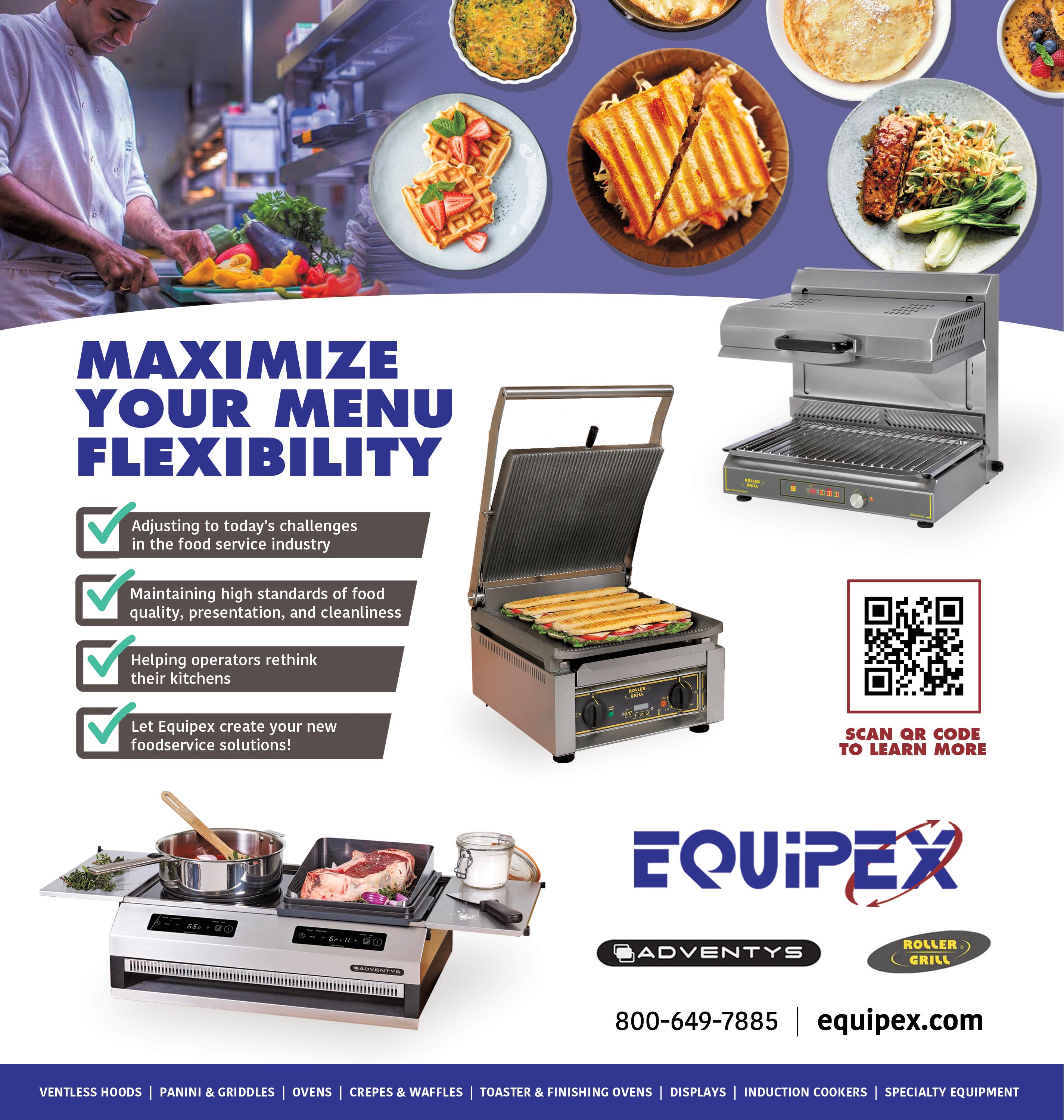
Proper takeout packaging is crucial now more than ever in the postpandemic food service world. Ensuring that your business is equipped with packaging and cutlery that is sturdy, reliable, and sustainable will provide takeout customers with a seamless at-home or on-the-go dining experience, leading to customer loyalty that spans far beyond the dining room.
With a refreshed brand, clear direction for future growth, and a broad range of quality products, Pennsylvania-based ACR is supplying foodservice operators and the distributors that support them with an ever-expanding range of topnotch foodservice essentials.
ACR began in 2014 and grew into a collaboration of 10 different organizations including AmerCare, Royal Paper, JRMI, 511 FoodService, and McNairn Packaging, providing a seamless resource across the foodservice, janitorial, sanitation, education, industrial, hospitality, and healthcare industries. “We chose this time to make the comprehensive rebranding of the company following a decade of acquisitions,” said Chris Rowe, ACR’s Vice President of Marketing. “We have combined all of our businesses under one brand, reflecting our continued evolution as a one-stop provider of restaurant takeout packaging and meal preparation supplies.”
With 900 employees worldwide, ACR is continuing to expand following its rebranding. Significant investments in adding North American manufacturing and migrating imported products away from China have produced a uniquely balanced sourcing portfolio for the company, helping to shield customers from geo-political risk to the global supply chain. As a whole, the company offers an extensive line of foodservice essentials,
“Customers come to us for reliability of both the product and of the supply chain that delivers it.” — Chris Rowe
from baking supplies and fry oil filtration to cutlery and even hair nets. “Customers come to us for reliability of both the product and of the supply chain that delivers it,” Rowe continued.
As ACR expanded, the company engaged Truelio, a brand experience agency, to visually rebrand it. “Our goal is to present a united, singular brand to the marketplace, so our customers can easily buy all of the quality foodservice essentials they need from one collaborative, reliable source,” Rowe noted, highlighting ACR’s emphasis on integration and cohesiveness across the organization.
The rebranding strategy included a study of ACR’s methodology, its previous branding, and various customer surveys to understand the company’s archetypes and what they represented be-
yond a foodservice essentials business.
“The research found that ACR is considered a ‘Hero Brand,’ the kind of business partner that goes to great lengths to make sure the customer is taken care of,” said Rowe. “The findings really sent a message that we’re a company that can be counted on!”
The archetype helped Truelio understand different traits of ACR and, in turn, allowed it to come up with a logo that better represented the company’s goals via one succinct design. “We selected a round logo because it symbolizes friendship and unity,” Rowe explained, furthering ACR’s commitment to keeping its customers fulfilled through its range of high-quality products.

Part of ACR’s rebranding is its push for sustainability in its takeout products. “Food service packaging has been dominat-


ed by plastics,” Rowe continued. “Our acquisition of PrimeWare enabled us to develop a rapid path to offering additional sustainable solutions.” PrimeWare products are 100% sustainable in terms of being either fully compostable, at home or industrially, or fully recyclable. The line includes hinged lid containers, compostable food containers, eco-friendly cutlery and straws, and even compostable tableware, ensuring reliability and comfort for takeout customers.
Beyond PrimeWare, ACR is a leader in paper-based solutions and is the parent company of two organizations that specialize in paper products for packaging. They offer, besides the PrimeWare portfolio, numerous options for paper, molded fiber, and mineral-filled takeout containers, each customizable in packaging, embossing or imprinting to reflect the restaurant’s individual branding format.
“We’re also very active in the development of the substrate formulations that provide superior packaging performance without the addition of PFAS to the manufacturing process,” Rowe said, noting that ACR has transitioned to non-added PFAS natural fiber packaging products, a fact that surely brings peace of mind to takeout customers.
The recent rebranding is sure to push ACR to the forefront of foodservice essentials, especially as takeout food service continues to grow and as more businesses develop personal sustainability goals. Reliable takeout packaging is imperative these days, and ACR’s line is an impressive one, guaranteed to keep food safe and secure during the whole ride home.
ACR products are available to restaurants via their local distributors. For more information, visit ACR’s website, WeAreACR.com.

By Parker Shatkin
In today’s competitive marketplace, it can be difficult for small brands to stand out amidst fierce competition and consolidation. No where is that truer in the restaurant and foodservice industry than with food brokerage. Family-owned Sabin Meyer Corp. has managed not only to navigate around those trends but to thrive. Anchored by three generations of the Meyer family, the Scarsdale, NY based firm has remained true to the founding values of its patriarch Sabe Meyer. “We have always been about tailoring solutions to the individual needs of the manufacturers we represent and cultivating close relationships with the distributors we serve,” noted Sabe.
Founded in 1953 by Sabin (Sabe) Meyer, the company was born in a time in which the market was beginning to evolve into what it is today. “So much
“The most important thing is striking a balance between quality and ease; there is huge emphasis on creating products that provide simplicity to use.” — Sabe Meyer
was starting at the time that you could step in anywhere and make an impact,” founder Sabe Meyer said. Originally servicing the seafood industry, the brokerage has diversified significantly over the decades.
“Our business has transitioned over time; seafood probably isn’t even 30% of our business now,” said Bob Meyer, CEO of the brokerage and Sabin Meyer’s son. Sabin Meyer Corp. is still a familyrun business that has been passed down through three generations. This has allowed the brokerage to combine traditional and modern business practices, effectively staying in business and growing with the changing market.

In an industry increasingly dominated by corporate giants, Sabin Meyer Corp. has adopted a unique approach that allows them to continue working closely with their distributor customers and the end-user operator community. That “boutique” service on behalf of the food manufacturers they represent offers a welcome return to the glory days of food brokerage. “To be able to cut through the noise, we have to be in close contact with the chefs, and that means being present in their kitchen,” explained Randy Meyer, VP and son of Bob Meyer. This handson approach emphasizes building and maintaining relationships with clients, enabling the brokerage to better understand and meet their unique needs.
The food service industry has seen some significant changes over the last five years, but what hasn’t changed for Sabin Meyer Corp. is an understanding of who their customer base is. “Restaurants will always be front and center for us,” added Randy. “The ability to sell will always be about getting product in front of chefs and making those connections.” However, the customer base is expanding, with healthcare becoming a significant focus.
Randy Meyer’s youthful exuberance has brought an understanding of the importance of embracing the impact of technology in serving the Metro New York foodservice community.
“With the growth of AI and an increase in the use of technology across industries gives us another set of tools, to sup-
port our distributors and their end user customers, Randy continued.
The company has also recognized how changes in technology has also impacted the cooking equipment utilized in Tri-State kitchens.
“The most important thing is striking a balance between quality and ease; there is huge emphasis on creating products that provide simplicity to use, Sabe noted. Bottom line is that chefs will always need that physical product to put on a plate. That isn’t going away.”
What hasn’t changed is the importance of building relationships and maintaining personal connections, making private brokerages like Sabin Meyer Corp. timeless institutions. These relationships are crucial, although the way they are built and maintained has evolved, especially in the wake of the COVID-19 pandemic. “So much of the industry is relationship-driven, but the way those relationships are built and maintained has changed,” added Sabe.
The pandemic underscored the importance of face-to-face interactions, and while the methods may have adapted, the desire for close relationships between small companies and independent brokers remains strong. “I think in the next few years we’re going to see much more kinship in the industry between brokers and manufacturers,” Bob concluded.
Fostering close relationships with clients, embracing change, and remaining true to their founding values has allowed Sabin Meyer Corp. to thrive in a competitive market.
For more information, visit smcfoodbroker.com/
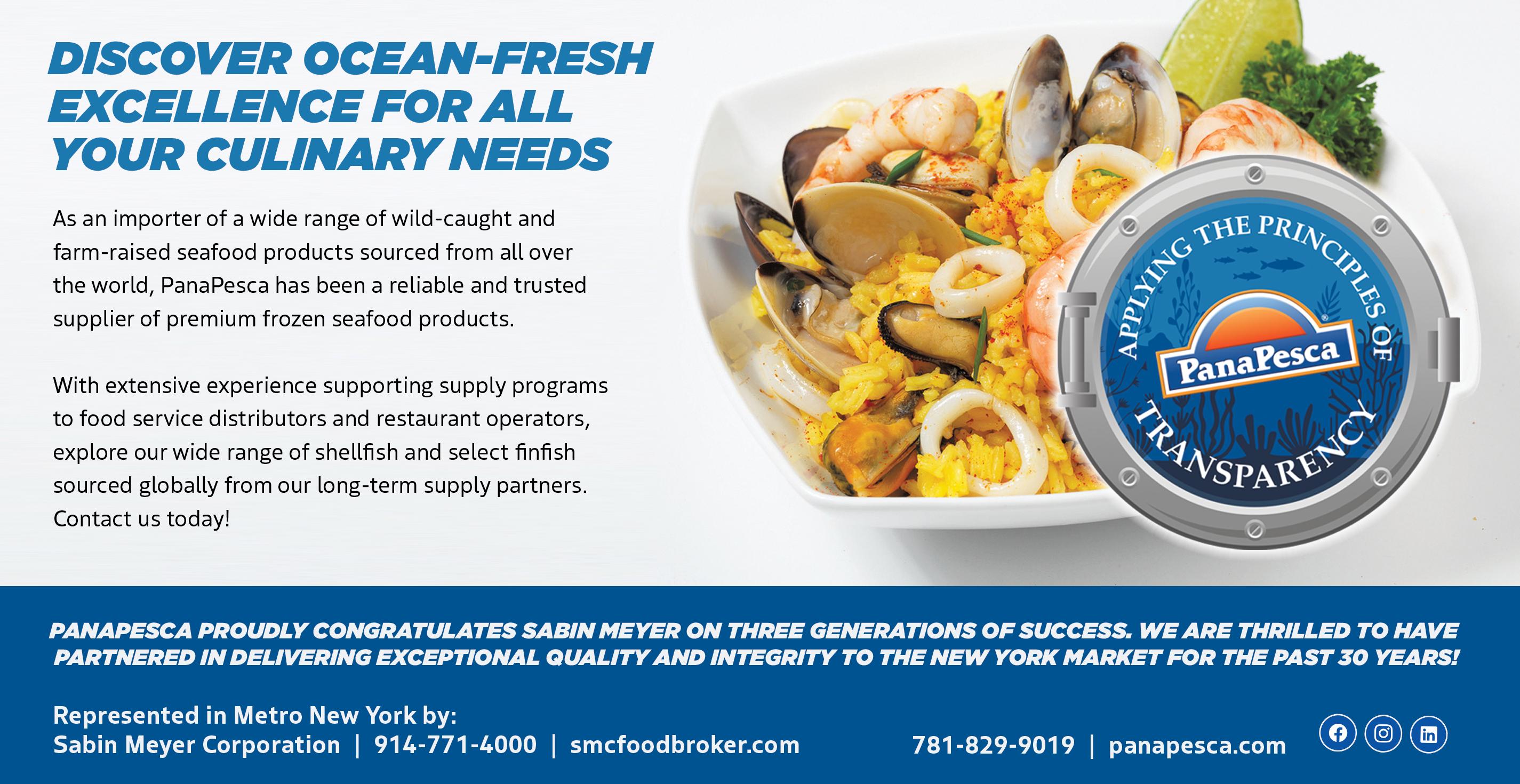


As a former restaurateur, I have learned firsthand the importance of offering high-quality soups on my menu. Soups can truly be the unsung heroes of a successful restaurant and food service operation. They not only add depth and variety to a menu, but they can also help create seasonal dishes that become signatures, keeping diners coming back for more.
At my establishments, I always found that partnering with a reputable soup supplier, has been instrumental in invigorating our menu offerings. In my work now with our customer base at Blount Fine Foods, I have been able to work with our team to build a lineup of soups that enable our operator customers to create signature additions to their menus.
Most recently, we have introduced
chicken enchiladas, green chicken chili, and creamy chicken pot pie, that have been a hit with our customers. These soups not only showcase the flavors of the season, but they also provide a comforting and satisfying option for diners looking for a hearty meal. Most importantly, with the availability of a 4lb bag, operators get the flexibility they need.
When selecting a soup supplier, it is crucial to find one that understands the unique needs of your business. For us, this meant finding a supplier that could cater to both our à la carte dining and banqueting catering services. Blount Fine Foods has been able to provide us with soups that work seamlessly across both areas of a foodservice operation, ensuring consistency and quality in every bowl.
In addition to offering traditional


favorites, it is also important to listen to the needs of your customer base. With the rise of health-conscious diners, many operators are now looking to offer plant-based and healthier soup options. By partnering with a supplier that offers a diverse range of soups, you can cater to the evolving tastes and preferences of your customers.
By attending trade shows and engaging with distributor partners, you can stay ahead of the curve and discover new and innovative soup solutions for your menu. Whether it’s a unique flavor profile or a trendy ingredient, these partnerships can help you elevate your soup offerings and keep your customers coming back for more.
In conclusion, the role of high-quality soups in a successful restaurant and food service operation cannot be
Chef Thomas Gervasi is a culinary mastermind with a passion for creating delicious and satisfying dishes. With a background in culinary arts from Johnson and Wales University, Chef Gervasi has honed his skills over the years, working in various culinary roles before landing at Blount Fine Foods in 2011. As the Director of Culinary Product Development at Blount, Chef Gervasi is responsible for creating soups, entrees, sides, and sauces that are enjoyed by countless customers. His creative imagination and culinary expertise shine through in every dish he creates, as he strives to fuse traditional flavors with innovative techniques to deliver a unique and unforgettable dining experience. Chef Gervasi believes that clean and simple ingredients are the key to living well, and he is committed to using only the freshest and highest quality ingredients in his recipes. Whether he is refining old favorites or exploring new taste trends, Chef Gervasi’s goal is to ensure that everyone who enjoys his food eats well and feels satisfied.
overstated. By offering a diverse selection of soups that cater to the needs and preferences of your customers, you can create a menu that is both delicious and profitable. So, don’t overlook the power of soup – it may just be the secret ingredient to your restaurant’s success.
Learn more about heartwarming family-inspired soups at blountfinefoods.com

Nestled in the heart of Baltimore, Maryland, Grano Pasta Bar is a culinary haven that draws food enthusiasts from near and far. At the helm of this beloved establishment is Chef Gino Troia, a culinary maestro whose passion for authentic Italian cuisine has made Grano Pasta Bar a must-visit destination.
Chef Gino Troia’s culinary journey began in the picturesque town of Palermo, Sicily, where he was born into a family with a rich tradition of Italian cooking. From a young age, Gino was immersed in the culinary arts, learning the secrets of traditional Sicilian recipes from his grandmother. The fragrant aromas of fresh tomatoes, basil, and olive oil were a staple of his childhood, instilling in him a deep appreciation for quality ingredients and authentic flavors.
Gino’s formal culinary training started at the Istituto Alberghiero di Palermo, a prestigious culinary school known for producing some of Italy’s finest chefs. Here, he honed his skills, mastering both the technical aspects of cooking and the
art of creating dishes that tell a story. After graduating, Gino worked in several renowned restaurants across Italy, each experience adding to his repertoire and fueling his dream of one day opening his own restaurant.
Gino’s journey to Baltimore was driven by a desire to share his love for Italian cuisine with a broader audience. In 2008, he opened Grano Pasta Bar, a cozy eatery that quickly became a local favorite. The restaurant’s concept was simple yet profound: offer handmade pasta dishes using the freshest ingredients, prepared with the love and care that Gino had learned from his family and mentors. Grano Pasta Bar’s menu is a reflection of Gino’s heritage, featuring classic Italian dishes such as Spaghetti Carbonara, Tagliatelle Bolognese, and Pappardelle al Funghi. Each dish is a testament to Gino’s commitment to authenticity and quality, with flavors that transport diners to the heart of Italy with every bite.

Central to Gino’s culinary philosophy is the belief that the quality of ingredients can make or break a dish. This is why he has always been meticulous about sourcing only the best for his kitchen. It was this quest for quality that led him to Chef’s Warehouse, a premier distributor of specialty foods and restaurant supplies. Chef’s Warehouse has been a trusted partner for many top chefs, known for its wide range of high-quality products and exceptional service. For Gino, this partnership was a perfect fit. The ability to source authentic Italian

ingredients, from San Marzano tomatoes to Parmigiano-Reggiano, allowed him to maintain the high standards he set for his dishes. “I choose Chef’s Warehouse because they understand the importance of quality and authenticity,” Gino explained. “Their products are always fresh and of the highest quality, which is crucial for creating the dishes our customers love.”
Grano Pasta Bar’s reputation for excellence caught the attention of celebrity chef Guy Fieri, known for his popular show “Diners, Drive-Ins and Dives.” In 2019, Fieri visited Grano Pasta Bar to feature it on his show, bringing national attention to Gino’s culinary talents. During the episode, Fieri was effusive in his praise for Gino’s dishes. He mar-
veled at the rich, complex flavors of the Tagliatelle Bolognese and the perfect al dente texture of the homemade pasta. The visit was a testament to the dedication and passion that Gino pours into his cooking, and it solidified Grano Pasta Bar’s status as a must-visit destination for food lovers.
Behind every successful dish at Grano Pasta Bar is the seamless support of Chef’s Warehouse. This partnership is not just about ingredient supply; it’s about a shared commitment to excellence. Chef’s Warehouse provides Gino with a curated selection of products that meet his exacting standards, ensuring that every component of his dishes is
continued on page 106


Do you have the SCOOP on any foodservice and hospitality news? Send items to SCOOP Editor Joyce Appelman at tfs@totalfood.com
SCOOP discovered that The Dragon, stone conveyor pizza oven was front and center at Demo Day in the 24/7 Restaurant Equipment Showroom & Culinary Center along with the Pyralis, an electrically powered brick oven, dough divider and rounder and the spiral mixer by Pizza Group USA. During Demo Day, they invite pizzerias and others to come with their ingredients to cook their pizza, focaccia, pretzels and more in the innovative new oven from Pizza Group USA. During Demo Day you can find Plato, the serving robot, running around the showroom floor serving up pizza that was just baked. You can enjoy an espresso from their new line of SAN REMO Coffee Machines or have a soft serve ice cream from PASMO. They also have Demo Days dedicated to Broaster pressure fryers too! “We are doing a lot of hands-on exhibitions because we love the interaction with the customer. We are providing solutions everyday!” remarks Christian Hernandez. “Demo Day brings many pizzaioli out to test their own pizza in the oven and eventually turns out to be a big pizza party every time! The camaraderie between the owners and pizzaioli is magical and fun. I love pizza demo days because pizza is near and dear to my heart.”
Jeanette Catena owned a pizzeria for 14 years and is now Business Development Manager for 24/7 Restaurant Equipment. “It is amazing to see how the oven cooks perfectly in ½ the time, but also with that desired flavor of a hearth baked crust! This oven will handle high volume with consistency. I wish I had this oven when I had my pizzeria.
I can’t tell you how many times I had to slow down making the pizza because my oven couldn’t handle it, plus there were hot spots and cooling down when opening the door and launching new pizzas…it was so frustrating!” says Catena. “There are so many benefits to this oven for the pizzeria but one of the

best advantages is that the parts are stocked here in the USA and our service team is highly specialized on this machinery. I remember many Friday nights (of course) laughs Catena, when the oven would go down and then try getting anyone out to service.”
Christian Hernandez spent 10 years on the service side of the restaurant equipment business, so from his perspective, parts and service are super important as well as how easy it is to maintain. Simple brushing off the conveyor and oiling of the conveyor every 30 hours is all it takes to keep the oven in shape! They make dough in the spiral mixer then transfer it to the divider rounder which cuts into exact size and perfectly shaped dough balls in 30 sec! It can do 1800 dough balls in an hour. You have to see it to believe it! The Dragon stone conveyor oven has three heating elements, two settings on the top for input and output and one setting on the bottom, this controls the bake. He loves the bake on this oven, especially how the bottom is always so crispy. The side door access is a nice feature when you want to reheat slices. Also, you can cook any style of pizza in this oven, directly on the stone, on a screen or in a pan, it always comes out the same, 1/2 the cook time, less labor (does not have to be turned or moved) less waste, less energy but more flavor! Call 732-508-0943 to schedule a demo with them… they are there to help!
SCOOP has learned (courtesy of The Friedlander Group) that inflation impacts the cost of workers’ compensation insurance in New York State by increasing wages and medical expenses, thus raising claim payouts. While wage inflation results in higher payrolls, benefits, and premiums, it does not necessarily lead to higher rates, according to an NCCI study.
Payroll remains a solid, inflation-sensitive exposure base, balancing premiums and benefits. Most indemnity benefits, calculated as two-thirds of an injured worker’s pre-injury weekly wage, are indexed for wage inflation, maintaining equilibrium. This sensitivity to inflation ensures workers’ comp costs rise with inflation, challenging insurers and restaurant owners to manage these increasing expenses. Despite rising wages, restaurateurs in New York will see a 14% rate drop effective October 1, 2024, marking the eighth consecutive year of declining rates in the state.

SCOOP learned that Hydr8 has shared their most commonly asked questions about their ice machines… Up-to how much ice can your machines make? Our ice machines can handle heavy use, ensuring a consistent supply on the hottest days. Up to 1000 pounds/day.
What is the average lifespan of your ice machines? Since we use Reverse Osmosis by default our machines last twice as long as machines that do not use RO and with our 5-star rated service we got you covered. Do your ice machines have any certifications?
Our systems are tested and certified to the highest standards for safety and performance including the UL and Energy Star certifications.
SCOOP has learned that Joseph’s Gourmet Pasta’s Gold Recipe Line represents the pinnacle of commit-
continued on page 94

ment to quality, flavor, and innovation. Crafted with the finest ingredients and expertly curated by a team of culinary professionals, these premium pasta offerings are designed to elevate any dining experience and leave a lasting impression on dining guests.
The Gold Recipe Line features a selection of exquisite ravioli varieties, each bursting with unique and indulgent flavors. From the rich and savory Veal Osso Buco Ravioli to the decadent Maine Lobster & Black Truffle Ravioli, each bite is a symphony of taste and texture that will delight even the most sophisticated palates. For those craving a vegetarian option, Joseph’s Porcini Mushroom Ravioli offers a delicious blend of earthy mushrooms and savory herbs that is sure to satisfy.
Joseph’s also offer a range of kettle/batch-cooked sauces and pestos that are the perfect complement to the Gold Recipe Line of pasta, creating a harmonious and flavorful dish that will leave guests craving more.
For more information on their Gold Recipe Line, including product specifications, samples, and pricing, please call 631-348-8989 or Email at EBuzzetti@ AdvantageMarketingCorp.com.
Imagine this: you are on-the-go, craving something delicious and perfectly portioned. You don’t just want those freshly cut strawberries; You want something for your sweet tooth; You also need some protein to fill you up. How are you supposed to get it all? The answer is Inline Plastic’s new 20 oz, threecompartment packaging, the TS7020C3. Whether road tripping, on a plane in the air, or kicking back at home, this convenience makes everyone’s life better. And forget worrying about freshness! These lids prevent food items from mingling with their antimigration design, keeping flavors pristine until consumption. Inline Plastics is all about keeping your food fresh and safe! Take this opportunity to show customers that you care about the same things and that their safety and happiness are your priority. The second addition coming soon is the 46 oz option, perfect for storing snacks at home or bringing along shareables for a group of friends! When stopping at the store before a party to grab a last-minute contribution, you’re most likely going to want something that looks pretty, right? A bright and colorful fruit medley in the TS7046 is looking right at you, it is bound to be love at first sight, and that fruit medley will probably go home with you. For that, you can thank the new round!

Why settle for ordinary when you can have extraordinary? Designed with their signature Safe-T-Fresh® technology, each package features tamper evident and tamper resistant seals to keep all food safe and secure. Inline Plastics’ packaging is not just practical... it is sleek, too! With a clear, glossy look, it is easy to spot your favorite treats and maybe discover a few new ones along the way. Simplify snack decisions and help consumers treat themselves to something delicious with our 7-inch rounds family!
No more spills = no more messes! The leak-resistant seal means less waste and a clean environment with sparkling shelves, increasing impulse purchasing while also helping consumers reduce their carbon footprint one snack at a time!
And for the cherry on top? Inline Plastics is completely committed to sustainability and by purchasing these, you can be too! Made with 10% post-consumer PET and 100% recyclable plastic, certified by SCS Global Services, you can encourage consumers to snack guilt-free knowing that their choices are green! For more information on their vast line of award- winning products, visit inlineplastics.com.
The National Association of College & University Food Services (NACUFS) has awarded its highest honor, the Theodore W. Minah Distinguished Service Award, this year to Patti Klos, senior director of dining services at Tufts University. NACUFS Immediate Past President Kerry Paterson presented the award on Wednesday at a special reception during the NACUFS 2024 National Conference taking place this week in Louisville, Kentucky.
Klos, who became the 58th president of NACUFS in 2017, first joined NACUFS as a college intern. Volunteering in numerous capacities over the years, Klos has served on campus review teams, judged awards, planned conferences, and much more, but the pinnacle, she said, was serving as a regional and
then national president and serving on the NACUFS Board of Trustees.
“Through these experiences, I’ve had the privilege of connecting with hundreds of members across institutions nationwide,” Klos said. “I treasure the conversations I’ve had over lunch or breaks at conferences, in workshops, on task forces, and while touring numerous campuses. I’ve learned tremendous lessons from how other campuses operate and how the people on those campuses view themselves, their jobs, and their institutions. Volunteering has enriched my life, providing satisfaction beyond measure. I believe my deep commitment to collaboration has yielded, for me, a career steeped in richness and opportunity.”
Klos’s career has spanned 35 years at Tufts University, as well as time spent at Indiana State University and Northern Illinois University following an internship with the University of Michigan. She credits NACUFS as the bridge that connected her to the opportunities that shaped her career, she said.
“Now, with the Minah Distinguished Service Award, I feel a renewed sense of purpose,” Klos said. “It’s not just an accolade; it’s a reminder that service is a powerful force – one that connects us, shapes our careers, and leaves a lasting impression. As I continue my journey, I carry this honor with pride, knowing that service isn’t just what I do; it’s who I am.” Previous winners can be found at https://www.nacufs.org/MinahPastWinners.
Culver Duck, the only duck farm in North America to earn American Humane CertifiedTM status, completed its annual BRC Food Safety Audit and earned AA+ - Unannounced, the highest grade possible from the Brand Reputation through Compliance Global Standard (BRCGS). BRCGS is part of the Global Food Safety Initiative (GFSI) which recognizes select certifications as a mark of the highest standards in food safety.
“Culver Duck has been in the duck industry for 165 years and processing ducks for 46 years. Our premium duck products serve leading chefs and home cooks of all skill levels offering All-Natural, Buddhist Style and Halal Certified whole duck, breast, legs, fully cooked duck products and much more,” stated Sean Smith, General Manager of Culver Duck. “Earning the AA+ rating in our annual food safety audit is another example of our commitment to providing only the highest quality duck to all of our loyal clients.”
Culver Duck uses industry-leading practices to continued on page 96

humanely raise its ducks to produce a lean, delicious taste. The business has earned numerous awards for its barbeque duck, including 1st Place at the North Carolina and Tennessee State Championships. Culver Duck is devoted to providing the best value to its customers through quality products, industryleading practices, and a commitment to excellence in animal care. To learn more about Culver Duck and its products, visit www.culverduck.com.
SCOOP knows that whether preparing for a fine dining experience or managing rapid service in a fast-casual, choosing equipment and technology for efficiency is critical. LTI’s QuickSwitch technology allows operators to serve hot, cold, and frozen foods side by side from one unit. Whether you need to keep dishes super-hot or frosty cold, QuickSwitch can seamlessly transition between these settings in an hour or less.
Go vertical. When footprint or staffing is limited, choose LTI’s QuickSwitch Glass. Convert from a heated shelf to a frosted top with the flip of a switch, catering to diverse menu requirements with ease. Available in 28and 42-inch sizes, as single shelves, or two-tier displays,
QuickSwitch Glass offers unparalleled flexibility for any foodservice establishment.
QuickSwitch technology enables operators to use less equipment and labor for meal preparation and serving. The versatility offered ensures patrons enjoy fresh foods and the dining experience they’ve come to expect. Learn more at www.lowtempind.com.
SCOOP has learned that The Saucy Ladies Kettle Chips are truly a step up in both quality and taste offering flavors that are quite unique to the category. They custom blend their seasonings using the highest quality all natural ingredients without artificial flavors or preservatives.
Each batch starts with hand selected premium potatoes from farmers that practice sustainable agriculture and kettle

cooked in small batches.
Their #1 BEST seller has been Truffle followed by OldFashioned, simply seasoned with sea salt; Sweet & Salty, their version of a salted caramel, beautifully compliments a glass of champagne or prosecco and our newest innovation; Movie Theater Butter kettle chips for those that cannot eat popcorn, made with 100% real butter.
SCOOP heard that Caputo Cheese, the leading manufacturer of award-winning cheeses, took home three awards at the 2024 American Cheese Society (ACS) Competition! The brand swept the Fresh MozzarellaUnder 8 oz. all milk category, receiving first place for its Nodini, second place for its Mini Nodini, and third place for its Ovolini. This is the second time Caputo Cheese’s specialty Nodini has been awarded this year. A few months prior, it received Best of Class at the 2024 World
continued on page 98
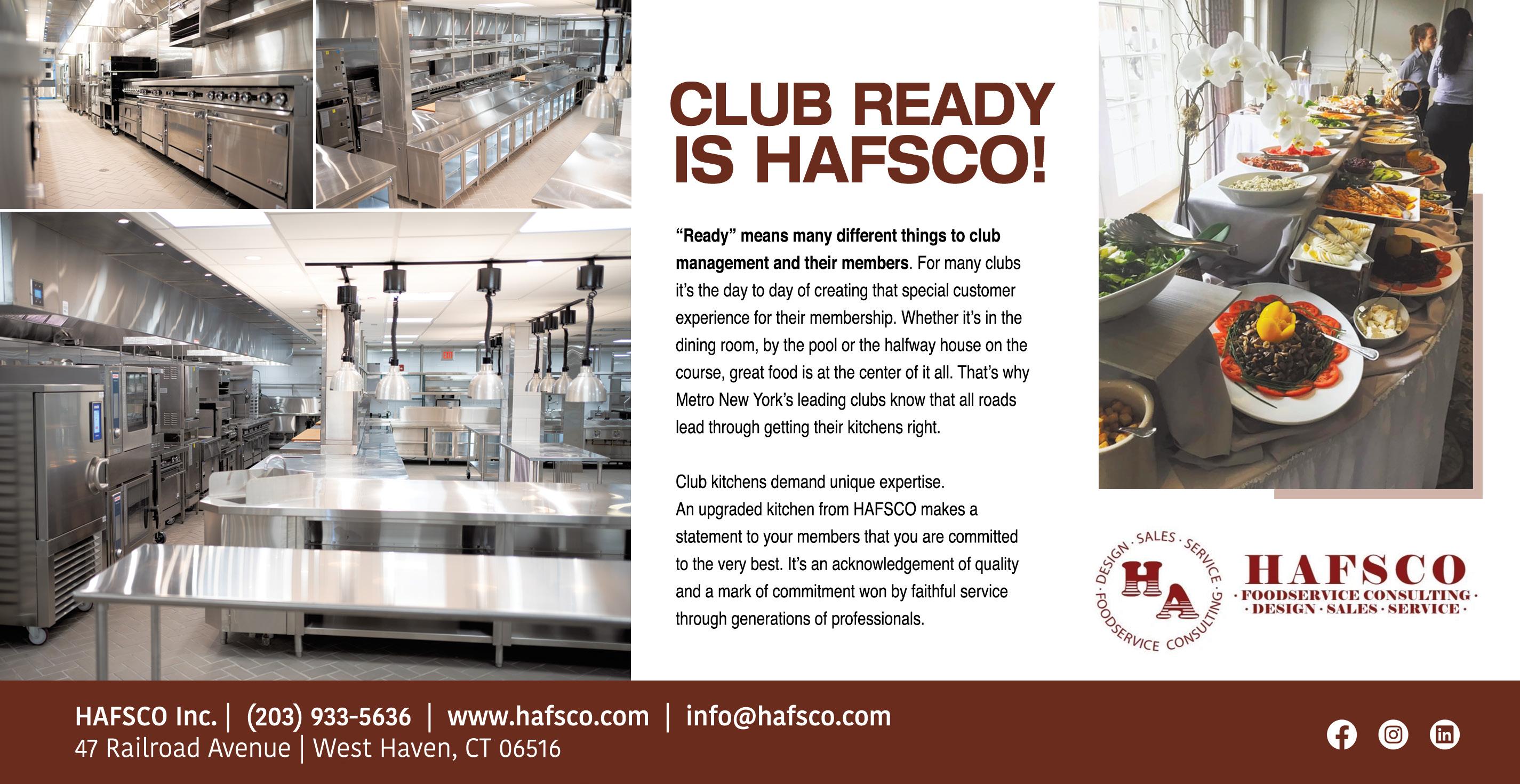


Championship Cheese Contest – attesting to brand’s global prowess and excellence.
Serving the Hamptons star Zach Zerdem is the entrepreneur behind the boutique 10-room and suite ZEY Hotel and contemporary Mediterranean dining destination ZErdem in Greenport. Zach Zerdem is also the owner of the recognized 75 Main in Southampton. The yearround hotel recently opened a new bakery by the name of Bourdon Artisan Bakery at the ZEY Hotel on Friday, May 24, which is open to guests and locals alike. Bourdon boasts a daily menu of handcrafted pastries, cakes, cookies, and other treats by renowned Turkish Pastry Chef, Gursel Aydin. For over 14 years, Chef Mark Militello and Zach Erdem have worked together to provide extraordinary culinary programs at 75 Main in Southampton and beyond. This year, they’re excited to bring his culinary talents and inventive fare to Greenport for the 2024 season at ZErdem’s new Executive Chef.
Sartiano’s opened its second location at East Hamp-
ton’s Hedges Inn. Instead of opening an outpost of Zero Bond, Scott Sartiano’s Bond Hospitality (behind Darling, Rose Lane, Broken Coconut, and SubMercer) deferred to a more tailored sit-down spot, with chefs Alfred Portale and Chris Lewnes overseeing the food menu.
Chloe Coscarelli, the celebrity chef behind the vegan chain, By Chloe, is making a comeback after she was forced out of the company. Coscarelli opened a vegan all-day cafe called Chloe at the very location where her brand first began.
Longtime uptown bistro on E 60th Street, Le Beau d’Or, first opened in 1937. It’s relaunched under new owners: Lee Hanson and Riad Nasr, the duo behind Frenchette and Le Rock.
Sushi chef Kevin Ngo, previously of Michelin-starred Sushi Nakazawa, honors the 200-year-old Japanese origin of sushi as a casual street food, which is accessible and made with simple, fresh ingredients. Sendo,
the new Edo-inspired, is inspired by Tokyo’s famously affordable sushi bars, offering one of New York’s most affordable, high quality sushi menus that features curated sets of nigiri, handrolls, and kaisendons for just $25-45. Chef Ngo sources premium fish from Japan through relationships built at restaurants like Michelin-starred Sushi Nakazawa, paired with rice from the finest farms in Niigata Prefecture and Hokkaido, along with small-batch aged vinegars and house-made sauces to enhance the seafood’s natural flavors.
Sendo is the first restaurant whose design is created entirely using AI technology. The space is located discreetly on the second floor of an unassuming building, and is an intimate space with 10 spots for counter-style sushi service. The restaurant will also be offering takeout and delivery.
Galpão Gaucho Brazilian Steakhouse, an authentic, family-owned and operated restaurant, announces its eighth U.S. location in Irvine, CA set to open late this summer. Inspired by the Gaucho culture and the dining tradition of the Brazilian cowboy, guests can indulge in the unique rodizio experience—an unlimited two-course menu featuring 18
continued on page 120



“The point is to get the conversation started and to start building a network. And part of that personal touch is building a bigger table. No matter where we are in life, we each have the ability to make a difference in someone else’s life. Who will you help?” — Wanda Mann
successful women were on to something. It’s not an excuse to be lazy or sloppy. Planning is helpful and essential, but sometimes, we plan to the point of inaction. It’s a way to delay doing something. Put yourself out there.
2 – Say yes to things that scare you. I know too many people who have said no to promotions and other opportunities because they were afraid of failure. Sometimes, we are our own worst critics. I sincerely believe that sometimes other people see talents and capabilities in us that we don’t see in ourselves. If your no is fueled exclusively by fear of failure, it’s usually a sign to say yes.
3 - But don’t ignore the power of no. Sometimes, bad opportunities come wrapped in glitter. Get past the frou-frou and say no to anything that compromises your core values or veers too far from the brand you’ve created. Ask yourself: Do I feel respected? Is this request moving my goals forward or supporting my passions? Or is it purely a transactional request where only the other party benefits? If something doesn’t feel right, remember no is a complete sentence. No.
4 – Don’t Neglect Building a Life to Build a Brand. We live in a world where we’re expected to be on and accessible 24/7. We’re told to hustle, hustle, hustle. Trust me, I’m all about being out there and networking, but when I look at my calendar and only see back-to-back meetings and work commitments day after day, I feel that I’ve failed myself. For your mental and physical health, sometimes you must slow the hustle and be still. Make it a priority to do things that feed your soul and connect with friends and loved ones. And let’s put down our phones once in a while! Be in the moment. You don’t need to share every aspect of your life on social media.
5 – The Personal Touch. The power of thank you, nice to meet you, and really listening to someone. Networking is not just about what someone else can do for you. It’s about building relationships. So, I have a challenge. I want each of you to leave here today with at least two business cards and send a followup email in the next week. In that email, you will address them by their name, reference something you discussed, or if all else fails, mention the wacky lady that gave the keynote. The point is to get the conversation started and to start building a network. And part of that personal touch is building a bigger table. No matter where we are in life, we each have the ability to make a difference in someone else’s life. Who will you help? The initiative each of you took to apply for the LDNY scholarship already shows that you understand the importance of seizing opportunities and writing your own story. The journey ahead will not always be easy, and triumphs are sometimes followed by setbacks. And that’s okay—that’s life. You have what it takes to forge ahead—talent and tenacity. And setbacks are not the end of the road; they are lessons that will carry you towards success. And surround yourself with positive people. Look around. You have a room full of people who believe in you. Carry this energy with you and summon this feeling of support and encouragement on those tough days. The LDNY scholarship affirms your talent and potential and forever connects you to this group. Call on the Dames; we’ll be there.”
Over $75,000 was awarded to the 20 students attending Cornell University, Culinary Institute of America (CIA), Institute of Culinary Education (ICE), International Wine Center (IWC) Kingsborough Community College, Montclair State University, New York City College
of Technology, New York University and Careers Through Culinary Arts Program (C-CAP).
Beam Suntory, Chefs de Cuisine Association of America, Margaret Happel Perry, and fundraising from the LDNY cookbook, Stirring the Pot made several scholarships possible.
Emma Perez of the Culinary Institute of America (CIA) was awarded the 2024 L’Etoile Scholarship, valued at $20,000, which is given to a student destined to be a star in the culinary world. She was recognized for her scholastic excellence, sense of purpose, and deep appreciation of the value of mentorship. Emma is a business major whose goal is to own her own restaurant that provides a good work environment for her employees, uses local resources and is sustainable and in particular reduces waste.
• Paris Ahmad, Cornell University, The Cornell University Scholarship, $4,000
• Oumou Barry, High School of Hospitality Management Graduate, The LDNY C-CAP Scholarship, $1,500
• Nicole Beamon, Cornell University, The Beam Suntory Spirits Scholarship, $3,000
• Arianna Betancourt, New York City College of Technology, The City Tech Hospitality Scholarship, $3,000
• Preeti Birla, International Wine Center, International Wine Center Scholarship, $2,208
• Catarina Carneiro, Montclair State University, The Montclair Nutrition Scholarship, $3,000
• Elizabeth Eckert, Institute of Culinary Education, The LDNY/ Institute of Culinary Education Scholarship, $1,000
• Emma Gugliotta, Culinary Institute of America, The Culinary Institute of America Scholarship, $5,000
• Kasey Hearns, New York University, The Karen Tenenbaum Scholarship, $2,500
• Jamie Hittner, Culinary Institute of America, The Alison Awerbuch and Abigail Kirsch Scholarship, $5,000
• Aislinn Korb, Culinary Institute of America, The Margaret and Darby Perry Scholarship, $5,000
• Connie Ly, Kingsborough Community College, The Kingsborough Culinary Scholarship, $2,500
• Katerina Marin, New York City College of Technology, The Beam Suntory Spirits Scholarship, $1,000
• Bryn McLain, New York City College of Technology, The Arlindo Fernandez, Late President, Chefs de Cuisine Association of America: The Culinary Scholarship, $1,500
• Lauren Ng, New York University, The Carol Brock Scholarship, $3,000
• Emma Perez, Culinary Institute of America, L’Etoile Scholarship, $20,000
• Nevaeh Pierre, Culinary Institute of America, The Margaret and Darby Perry Scholarship, $5,000
• Chelsea Sarg, International Wine Center, The Linda Lawry Scholarship, $1,000
• Anna Soloniuk, New York University, The Stirring the Pot Scholarship, $3,000
• May Yang, Culinary Institute of America, The Margaret and Darby Perry Scholarship, $5,000
LDNY is the founding and largest chapter of Les Dames d’Escoffier International (LDEI), an experienced 501c3 non-profit organization. Its mission is to advance and support aspiring professional women in food and beverage, as well as to champion critical industry issues. LDNY’s vision is guided by three objectives: Education, Advocacy and Philanthropy.



coverage and initiatives touting frontline workers as heroes, many workers didn’t feel respected in their day to day working conditions.
Customers became less patient, more demanding, and disrespectful - behaviors many customer-facing workers say have remained challenging post-covid. Experts say this is a combination of the increase in stress and anxiety that was widespread during the pandemic and a decrease in face-to-face interactions which contributed to people forgetting the importance of niceties when having interpersonal interactions. Regardless of reasons, this decline in how consumers treat staff creates a poor work environment, making foodservice positions less desirable.

The foodservice industry wasn’t the only industry experiencing labor shortages on the heels of the pandemic, which led to the “great resignation” in 20212023. People left their jobs for work that paid more. It was an employee’s market. Yet they didn’t all stay in foodservice. With an increase in remote work, many people in jobs that require customer interaction - including the foodservice and hospitality industries - looked for new careers with greater flexibility, work-life balance, and less stress.
While these specific challenges are over, their impact remains. There are fewer individuals looking to work in the foodservice industry.
With all that bad news, what can restaurant owners do about it? Solutions fall into several categories.
Appropriate usage of technology saves money by increasing accuracy in tasks, reducing waste, and reducing labor hours. Customer facing tech can enable consumers to place their orders without staff present at a kiosk or allow them to pay at their table without anyone bringing the check, collect pay-
ment, and return the card or change. Technology can also streamline taking inventory and other employee tasks.
The key though, is appropriate usage of technology. Some customers prefer to pay with cash or have questions about the menu and require staff’s help. When done well, technology saves staff time and makes their job easier. Poorly implemented technology can be frustrating to staff and make their jobs harder.
A good work environment encompasses the physical environment and the company culture. This includes clean, working equipment, proper PPE, and an otherwise safe workspace. It also entails confidence they will be treated fairly and kindly. It should go without saying that this includes fair payment practices and no tolerance for abuse of employees. That goes for abuse from management, other employees, or customers.
The customer might not always be right. Being willing to stand up for your employees might be the difference in retaining staff or becoming a safe haven for angry people to unload on workers who have no choice but to take it.
Data from McKinsey & Company shows that companies with a diverse workforce outperform their non-diverse peers. Yet putting a few lines about how you value diversity at the end of your job postings isn’t enough to convince prospective workers you care about diversity. Having non-gendered bathrooms or a wheelchair accessible store helps increase the employees who can and want to work for you.
There are also programs available that help match companies with workers with disabilities, criminal records, or otherwise disenfranchising characteristics. These programs increase your hiring pool with hardworking individuals eager to find a fair employer.
Despite the National Restaurant Association forecasting sales to exceed $1.1 trillion in 2024, many people don’t view foodservice as a viable career path. For many, it won’t be, since foodservice is quite often a transitionary job while students are in school. Yet many would love to be able to advance in the industry. Training and development opportunities make jobs more attractive, while also equipping businesses with more
loyal and higher skilled employees in the mid- and long term.
Ideally, employees would love healthcare, retirement options, PTO, and more! That’s not always feasible for smaller operations, but that doesn’t mean offering nothing is the only alternative. An allotment of paid sick time and flexible scheduling are benefits that can be a differentiator between you and another restaurant down the street. If these options sound expensive, remember that each employee lost costs a restaurant over $5,000 in recruiting, training, and lost productivity costs.
As the last four years have undeniably confirmed, no one can fully predict how the workforce will change over time. The pandemic and the great resignation demonstrated how the power dynamics between employer and employee can shift dramatically in short periods of time. Yet people will always need jobs and employers who are responsive to employee needs and who invest in their teams and in their workplace environment will have an edge over competitors.
The foodservice industry is large, yet in every market it often seems like a close-knit community where everyone knows everyone. Restaurants who garner a reputation as a good employer will reap the benefits for years to come.
Joy Pouros works as the authority writer in the Training department at Culinary Software Services, where she writes on topics as diverse as human resource issues to increasing profits. Joy entered the industry working as a Nutritional Aide in the Chicagoland area before moving into writing and consulting. Joy now specializes in marketing and public relations and writes for a variety of industries.

helpful for the general public. It helps them feel like they’ve got an inside track.”
That inside track for consumers results in a boon for bars who welcome these guests looking for a great drink seven nights a week. The lists serve to nurture the blooming interest in cocktail culture and keep bars busier on what were traditionally slower nights. They also serve to introduce guests to something new and create destination drinking experiences.
Like at Library by the Sea, the new bar that opened in 2022 in the Kimpton Seafire Resort & Spa on Grand Cayman. Jim Wrigley, the resort’s Beverage Manager, is pleased to have garnered some impressive awards right out of the gate having landed on both the Spirited Awards and World’s 50 Best lists just after opening. Library was noted on the best new bars list for Tales, and landed at number 35 on the World’s 50 Best Bars the first year they were eligible to be noticed. He chalks this up to a lot of hard work, and years of dedication he and all the members of his team have put into building a vibrant bar culture on the island.
He says, “We’re the latest in the line of venues trying to drive forward the scene for people in the Cayman Islands. For Cayman to even be mentioned in same breath as mainland bars, well, it benefits everyone. It’s that community thing.”
The community is well aware of these lists and which bars are on them. Yet, Wrigley finds a nice balance of applauding the awards while acknowledging where attention truly needs to be as he remarks, “You definitely see a lot of conversation around when those lists come out. Any recognition, whether you get name checked in a local newspaper or whether or not you’ve got a tv spot or won an award; anything that brings attention and recognition to your venue is important. But you shouldn’t be using it to define you. You’re not a 50 Best Bar, you’re a bar that has won a spot on this list.”
There’s a difference. But, no matter how you slice it, it’s driving guest demand and attention. Wrigley continues, “What we found was – cocktail tourism is an actual thing. People
going to New York – using NYC as an example – they’ll go to Dead Rabbit. They (Dead Rabbit) are always mentioned in the list of ten bars you need to go to in New York. When people go to these places they build their experiences around that destination. Here we already had a full hotel of people paying a not insignificant amount of money per night. And now when they’re googling things to do this bar pops up as one of the world’s 50 best. That has brought people in. The uptick in the number of people referencing or saying they were told about us landing on the World’s 50 Best Bars list and say they’ve come because they’ve heard about the bar has been massive. Many of them are people who would have come anyway, but we see the word-of-mouth reference is much, much higher. They come in, and then they come back.”
That buzz has an undeniable positive impact on revenue, both for a bar in the middle of the Caribbean or one nestled among the crisscrossing streets of Manhattan’s Lower East Side. Nacho Jimenez, Partner at Superbueno, New York’s high end Mexican cocktail bar which landed on the list for the first time is pleased to report they’ve seen a 20% increase in business since winning. Proving hard work pays off.
He remarks, “We set our sights on North America’s 50 Best Bars from the beginning, and we are deeply honored to have achieved this recognition just one year after opening in April 2023. Since receiving the award, our business has grown by over 20%. Our team’s commitment to excellence is evident every day, and they are incredibly proud to be part of this global bar community.”
The global bar community is stretching to include places that were often overlooked before. In the earlier days of the awards many bars felt summarily overlooked if they did business outside of London, New York, or San Francisco. That seems to be changing. Oron Lerner, the Tel Aviv-based former Imperial Group CEO, sees this as progress. He says, “Perhaps the only segment I like seeing earn awards and have real value to it are bars in loca -
tions far from the center core of western culture, where recognition might shed a light and bring in outside interest to fascinating cultures and styles otherwise hidden in global shadow – cities with growing cocktail culture in Africa, South America and Asia are getting a lot of recognition because they really manage to shine through to a global point.”
As these countries find their bar culture getting the attention they’ve long deserved Lerner and his fellow bar experts caution against putting too much stock in awards and thinking it will be the be all and end all for them.
Lerner offers some realistic advice, an assessment of awards culture, and the various highs and lows that come along with that trophy as he notes, “Awards create and strengthen the brand of the bar. The brand strength gave us a lot of advantages in terms of hiring and retention – bartenders wanted to work at the bar / group because of the awards. And, especially after the first awards, when the idea of bar ranking was new enough to get local media attention, we got a lot of work around it. To the point the bar was fully booked months in advance.”
Being fully booked sounds good, but Lerner notes, “It brought on its own issues – like handling challenges of reservations vs. walk-ins which led to the perception that Imperial is always full and busy which is why less walk-ins would show up and we’d get weaker shifts, or having people just sit at the bar and not order anything in the sense that they just wanted to experience Tel Aviv’s best bar but not spend any money. The pressure of having people wait outside, the high demand, and the need to balance quality of
service and product with profitability in the business becomes that much more challenging as the owners see an opportunity to increase profits which comes at a cost.”
Just as every day there is a cost of doing business, so too is there a cost for engaging with and winning awards. Do it smartly and you’ll come out on top.
The brutal heatwave that has kept much of the country uncomfortable for the past few weeks doesn’t have to ruin all your fun. Being out and about in this weather is manageable with the right precautions. Like sunscreen, protective clothing, and hydration. If you find yourself out on the golf course (or anywhere else the sun is shining brightly when you want a drink) know that Fore Craft Cocktails are a total tap in.
Created in Richmond, Virginia, these drinks will slake your thirst and might even improve your game. But, while we won’t make any promises about your handicap getting better, we can promise you won’t go wrong by trying the classic golf cocktail The Transfusion with its perfect combination of vodka, grape juice, ginger ale and lime, or kicking off a morning round with the Fore Bloody Mary.

Replacing animal-based ingredients with plant-based alternatives can be straightforward with the right knowledge. Here are some common substitutions:
Dairy: Almond milk, soy milk, or oat milk can replace cow’s milk. Coconut cream or cashew cream can substitute for heavy cream. There are some great products on the market that can meet all your foodservice and beverage needs, like Forager Project’s dairy-free staples, which only use three to four ingredients: cashews, oats, water, and salt.
Meat: The alternative meat market continues to boom, with products like tofu, tempeh, seitan, jackfruit, and hemp grains. Check out Elmhurst1925’s Terra Meat Plant-Based Chicken for an innovative option. Legumes and mushrooms are also excellent alternatives, with the global meat substitute market estimated to reach $18.0 billion by 2035, growing at a CAGR of 8.9% from 2024 to 2035. According to a new report published by Allied Market Research.
Eggs: It’s common to use flaxseed or chia seeds mixed with water as egg replacers in baking. Silken tofu can also be used in recipes requiring eggs for binding. New products on the market, such as AcreMade, offer a variety of convenient options from plant-based egg replacers, egg scrambles, to egg substitutes for foodservice operators.
Butter: The global vegan butter market is expected to grow from $2.74 billion in 2024 to $3.82 billion by 2032, with a compound annual growth rate (CAGR) of 4.21%, as stated by Market Research Future. Replace butter with high-quality plant-based products like Tourlami and other products that contain non-gmo ingredients such as sunflower oil, coconut oil, avocado oil, or olive oil.
Integrating plant-based options into your menu can significantly enhance your restaurant’s image, portraying it
as contemporary, inclusive, and environmentally conscious. It attracts a wider customer base, including those with dietary restrictions and preferences. According to a survey by The Good Food Institute, 60% of U.S. consumers are reducing their meat consumption, primarily due to health and environmental concerns. Moreover, offering diverse and delicious plant-based dishes can lead to higher customer satisfaction and repeat visits. Embracing plant-based cuisine is not only a response to a growing trend but also a strategic move towards a sustainable and profitable future.
By aligning your
restaurant with current dietary trends and consumer preferences, you position your establishment at the forefront of the culinary industry. The rise in plant-based eating is not a passing fad but a lasting shift towards a healthier and more sustainable lifestyle.


fering a selection of snacks and light meals can encourage longer customer visits and higher spending per visit. Popular food items that pair well with boba tea include Asian-inspired snacks such as fried dumplings, tempura chicken, and pork eggrolls, as well as more universal offerings like French fries and chicken wings. However, integrating a foodservice program brings its own set of challenges. Traditional kitchen setups require significant space, ventilation, and staffing, which can be prohibitive for smaller shops. Moreover, maintaining food safety and consistency can be demanding, particularly for owners who may not have prior experience in the food industry.
One innovative solution that can help boba tea shop owners overcome these challenges is the use of ventless, automatic deep fryers like AutoFry. These units are designed to be compact, easy to use, and do not require traditional ventilation systems, making them ideal for small or non-traditional kitchen spaces. Here’s how AutoFry can benefit boba tea shops looking to expand their offerings:
AutoFry units are designed to fit in tight spaces, making them suitable for small boba tea shops that may not have the luxury of a full kitchen. Their compact size allows shop owners to maximize their existing space without
the need for extensive renovations.
2. Ease of Use:
One of the standout features of AutoFry is its fully automated operation. The units are user-friendly and require minimal training, which means that existing staff can operate them without needing specialized culinary skills. This is particularly beneficial for boba tea shops, where the primary focus is on beverage preparation.
3. Ventless Operation:
Traditional deep fryers require complex and costly ventilation systems to manage smoke and grease. AutoFry’s ventless technology eliminates the need for such systems, reducing installation costs and making it feasible to add a fryer in locations that otherwise couldn’t support one.
4. Consistent Quality:
AutoFry is designed to deliver consistent cooking results, ensuring that every batch of fries, chicken wings, or other fried snacks meets the same high standards. This consistency is crucial for maintaining customer satisfaction and building a reliable reputation for quality.
5. Increased Revenue:
By offering a variety of snacks and small meals, boba tea shops can increase their average transaction value. Customers are more likely to order food items alongside their drinks, leading to higher overall sales. Additionally, a more diverse menu can at-
from page 90
of the highest quality. For example, the fresh pasta that forms the backbone of Grano’s menu is made using 00 flour sourced from Chef’s Warehouse, known for its fine texture and superior quality. “The tomatoes used in the sauces are San Marzano DOP, a variety prized for its sweetness and low acidity, Chef Gino noted. Even the olive oil, a critical ingredient in Italian cooking, is sourced from the best producers, ensuring that it adds the right flavor and richness to each dish.
Beyond the accolades and the television appearances, what truly sets Gino and Grano Pasta Bar apart is their commitment to the Baltimore community. Gino sees his restaurant as more than just a place to eat; “It’s a place where people come together to share a meal and create memories. This sense of community is reflected in every aspect of the restaurant, from the friendly, welcoming atmosphere to the focus on local sourcing and sustainability. Gino is also dedi-
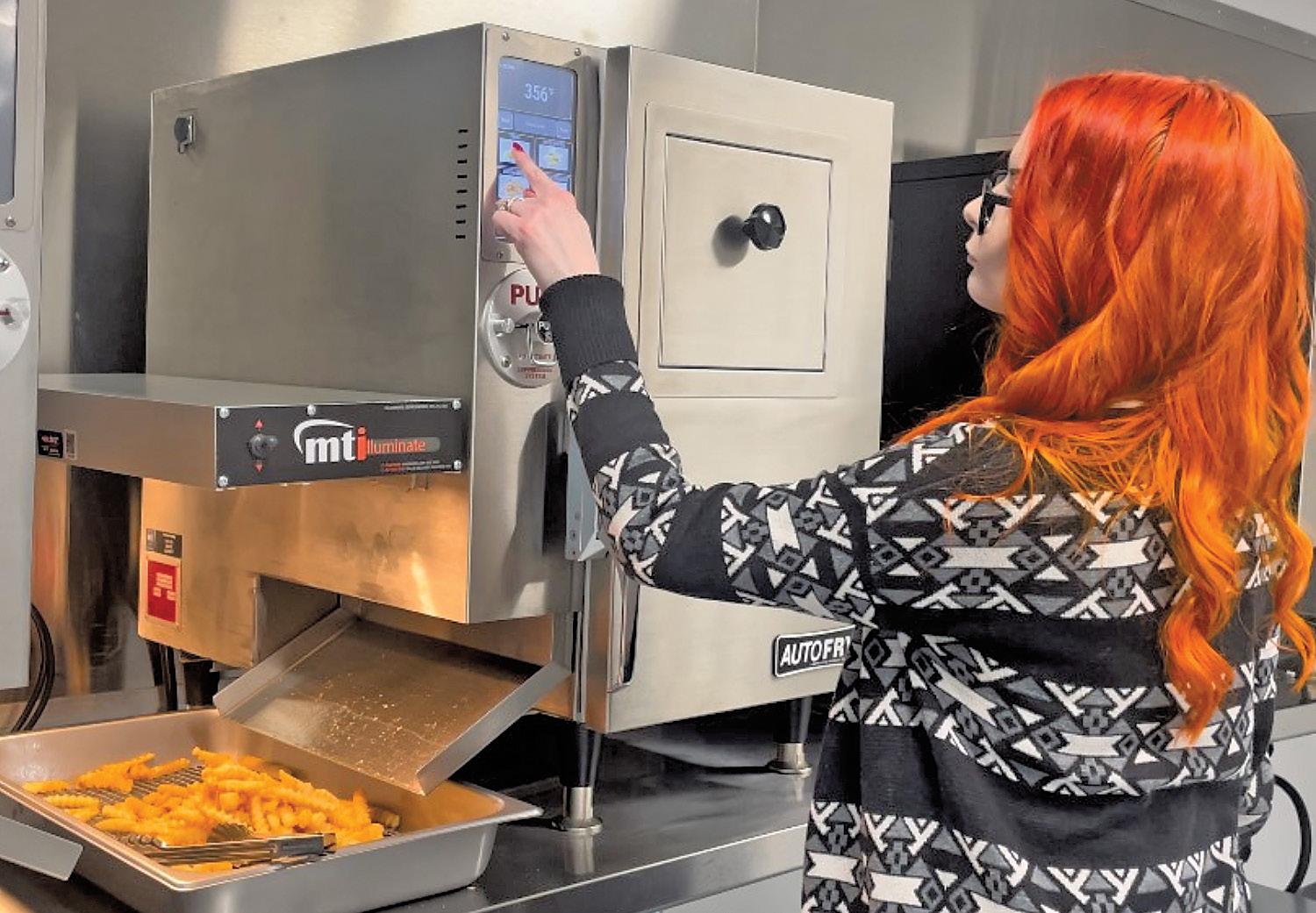
tract a broader customer base, including those who might come primarily for the food.
Integrating a foodservice program with the help of AutoFry can significantly impact the overall growth and profitability of boba tea shops. The ability to serve high-quality snacks and meals can enhance the customer experience, making the shop a more attractive destination for a wider range of patrons. This diversification can also provide a buffer against market fluctuations and seasonal variations in beverage sales, leading to more stable and predictable revenue streams.
Furthermore, the expanded menu offerings can open up new marketing opportunities. Shops can promote combo deals, special menu items, and
limited-time offers to drive traffic and encourage repeat visits. Social media campaigns showcasing the appealing visuals of both drinks and food can further boost brand awareness and customer engagement.
As these shops seek to grow and differentiate themselves in a competitive market, adding a foodservice program can be a strategic move. Ventless, automatic deep fryers like AutoFry offer a practical and efficient solution for integrating food offerings without the need for extensive kitchen infrastructure. By leveraging these technologies, boba tea shop owners can enhance their menu, improve customer satisfaction, and drive business growth in an ever-evolving industry.
To learn more about how ventless kitchen equipment can benefit your business, visit mtiproducts.com today!
cated to giving back to the community that has embraced him and his restaurant. He regularly participates in local food festivals and charity events, sharing his culinary skills and passion for Italian cuisine with a broader audience. “This is an opportunity to connect with people and give back to the city that has given us so much.”
Chef Gino Troia’s story is one of passion, dedication, and an unwavering commitment to quality. From his hum-
ble beginnings in Palermo to his success with Grano Pasta Bar in Baltimore, Gino’s journey is a testament to the power of great ingredients and the importance of staying true to one’s culinary roots. As Gino continues to delight diners with his authentic Italian dishes, his story serves as an inspiration to chefs and food lovers everywhere. It’s a reminder that with passion, dedication, and the right partners, anything is possible in the world of culinary arts.
heightened restaurant patronage can significantly boost the local economy, benefiting the cities involved.
Craig Davis, president and CEO of Visit Dallas, expressed his excitement: “The Michelin Guide is the gold standard in culinary tourism, and this is a wonderful opportunity to share with our visitors the Dallas story of today, highlight our diverse culinary offerings, and showcase our talented chefs.”
While the arrival of the Michelin Guide is largely seen as positive, it does come with its own set of challenges and controversies. The Guide is known for its stringent standards, often favoring highend dining establishments. This preference could spark debates within the local culinary community about the true representation of Texas’ diverse food culture.
Michelin’s international director, Gwendal Poullenec, emphasized the Guide’s appreciation for Texas’ diverse culinary landscape. He praised the state’s “farm-to-table dishes, fusion cuisine, upscale dining, and the famous Texas-style barbecue.” This acknowledgment suggests that the Guide aims to celebrate the unique flavors and traditions that define Texas cuisine.
Despite its French origins and global influence, the Michelin Guide is expected to embrace local favorites such as barbecue and Tex-Mex. This approach aligns with Michelin’s evolving focus on culinary diversity and sustainability, including the introduction of green stars for eco-friendly practices.
The arrival of the Michelin Guide has elicited mixed reactions from Texas’ culinary professionals. While some chefs and restaurateurs are thrilled about the potential recognition and economic benefits, others are more cautious, concerned about the impact on local dining traditions and expectations.
Local chefs have expressed very different thoughts in terms of the impact of Michelin coming to Texas. Bruno Davaillon, who previously led the oneMichelin-starred Mix in Las Vegas, is cautiously optimistic: “In order for Dallas to take the next step, there is a level in the middle where a lot of customers and restaurateurs are content. If Michelin coming is going to help push a
little more as far as bringing something new, excitement, people trying new things—for sure [that would be good].”
Regino Rojas, chef-owner of Purépecha, anticipates a rough start but believes the long-term benefits will outweigh the initial challenges. “It’s going to be a rough start, but what’s coming after should be a lot better quality, a lot more focus on the cuisine—everything else that’s involved [in a meal] besides Instagram.”
The Michelin Guide rates restaurants with one to three stars: one star signifies “High-quality cooking, worth a stop,”
two stars mean “Excellent cooking, worth a detour,” and three stars denote “Exceptional cuisine, worth a special journey.” Michelin’s anonymous judges are full-time employees with extensive restaurant industry experience, evaluating establishments globally to maintain consistent standards. Not all good restaurants receive stars; only those exemplifying outstanding quality and service are awarded. Michelin stars are awarded annually and can be revoked if a restaurant’s quality declines.
The introduction of the Michelin
Guide to Texas is a historic moment for the state’s culinary scene. It brings the promise of greater recognition, increased tourism, and enhanced culinary standards. While the journey may be challenging, the long-term benefits could solidify Texas’ position as a premier dining destination. As chefs and restaurateurs prepare for Michelin’s rigorous assessments, the eyes of the culinary world will be on Texas, eager to see which establishments rise to the occasion and earn the coveted Michelin stars.

hotel’s status within the industry, garnering media attention and accolades that further reinforce its reputation.
Johnson, a James Beard Awardwinning chef known for his innovative Afro-Caribbean cuisine, exemplifies this trend. His restaurant FIELDTRIP, highlighted as one of Esquire’s “America’s Best New Restaurants (2020),” has quickly become a beloved destination. “Not only does Chef JJ bring a unique culinary and cultural perspective to the resort, but he always brings fun! FIELDTRIP Atlantis Bahamas adds to the many healthy dining choices available for our guests and community to enjoy,” says Audrey Oswell, President and Managing Director of Atlantis Paradise Island.
Beyond prestige, the presence of a star chef can drive tangible business benefits. Unique dining experiences can increase occupancy rates as guests book stays specifically to enjoy these culinary offerings. Additionally, restaurants led by renowned chefs often attract local diners, creating an additional revenue stream indepen -
dent of room bookings.
At Atlantis Paradise Island, the addition of FIELDTRIP is part of a broader strategy to position the resort as the culinary capital of the Caribbean. Chef JJ Johnson joins a roster of internationally recognized chefs including Michael White (Paranza), Nobu Matsuhisa (Nobu), José Andrés (Fish), and Alon Shaya (Silan). This diverse culinary lineup not only enhances the guest experience but also ensures a steady stream of visitors eager to explore the resort’s gastronomic delights.
Incorporating celebrated chefs into a hotel’s culinary program also allows for the creation of unique and memorable guest experiences. These chefs bring their distinctive culinary styles and philosophies, offering guests an opportunity to indulge in exclusive menus and innovative dishes that they may not find elsewhere.
FIELDTRIP, for instance, offers a playful and family-friendly menu that includes a variety of rice bowls, shareable sides, and refreshing beverages. The menu reflects Chef JJ Johnson’s commitment to sustainable dining and global flavors, featuring dishes such as Fried Chicken with Carolina Gold Fried Rice, Braised Beef with Texas Brown Rice, and Crispy Fish with Herbed Rice. These offerings not only delight the palate but also promote a sense of culinary adventure and discovery.
partnerships requires careful planning and coordination. Hotels must ensure that the chef’s vision aligns with their brand and that the restaurant’s operations are seamlessly integrated into the broader guest experience.
The collaboration between Atlantis Paradise Island and Chef JJ Johnson is a testament to the power of strategic planning. By aligning FIELDTRIP’s innovative and sustainable dining concept with the resort’s commitment to excellence, Atlantis has created a culinary offering that enhances its overall brand and appeals to a diverse audience.
In the ever-evolving hospitality industry, the importance of culinary excellence cannot be overstated. Attracting great chefs and their brands is a strategic move that can elevate a hotel’s prestige, drive occupancy and revenue, and create unforgettable guest experiences. As hotels continue to compete for the attention of discerning travelers, those that invest in

A successful collaboration with a high-profile chef can also foster brand loyalty. Guests who have a positive dining experience are more likely to return and recommend the hotel to others. This loyalty extends beyond the restaurant, influencing their overall perception of the hotel and its other offerings.
While the benefits of attracting top chefs are clear, executing these
exceptional dining will undoubtedly stand out.
“Atlantis Paradise Island is a prime example of how strategic culinary partnerships can transform a destination. The addition of FIELDTRIP not only enriches our dining portfolio but also underscores our commitment to offering world-class experiences,” says Audrey Oswell. “We are thrilled to welcome Chef JJ Johnson and look forward to the culinary innovations and memorable dining experiences he will bring to our guests.”


In addition to the in-person crosspollination, SERG has also used technology to communicate with their customers. They have established a comprehensive database through an email program and via social media. However, Wolf explained that SERG uses technology primarily for communication rather than loyalty. “We’ve worked with loyalty tech platforms but found the third-party tie-ins to our POS systems difficult to maintain and often challenging for our guests to interact with,” he said, highlighting that loyalty tends to come out of faceto-face interactions.
The economy of scale to support the full lineup of SERG restaurants also includes Wolf and his team’s approach to purchasing. “With our 15 food service operations from restaurants to catering companies, we were able to negotiate a program with US Foods that enables us to maximize our buying power,” Wolf noted.
During Covid-19, they found some
of their best success in cultivating loyalty. SERG’s Community Strong program allowed guests to buy a 1-year discount card for $300 and receive a $100 gift card and a 25% discount on food throughout the year. $100 of each sale went directly to local charities, and $100 went to supporting SERG’s team member benefits. “This program united our most loyal guests to our team members in a valuable way,” Wolf explained. “And it is a great way to recognize our local guests when they dine with us.”
SERG has also built up a retail side of their brand, both to recognize guests and to promote loyalty among them. They have a range of hats, tshirts, and other apparel corresponding to their restaurants. “We’ve always gotten a kick out of seeing our restaurant t-shirts on someone in another city or at the airport,” Wolf said. “It provides a great marketing reach for our brands.”
Another important initiative SERG
takes is responding to customer feedback, which shows guests that the people behind the business value them. Wolf explained that they focus on winning guests back every time a complaint arises, and that they are constantly seeking feedback in order to grow. “And when we get positive feedback, we celebrate it with our staff and recognize team members through our rewards platform for their great review,” Wolf said. The virtual SERG Team Rewards program recognizes team members’ hard work, providing them points to redeem for gadgets, retail, tickets, and hotel stays.
Besides these initiatives, the Hilton Head eateries each provide different opportunities for community and loyalty building. Live music, for instance, is standard at more than half of SERG’s restaurants. Their waterfront Poseidon restaurant, which offers seafood, steak, and raw bar, has a rooftop bar serving as a full-on entertainment venue. “It’s been a great way
to bring large name brands and DJs to the market to provide a unique nightlife experience for locals and visitors,” Wolf said.
Going forward, Wolf explained that SERG hopes to continue growing both in and outside of Hilton Head Island, as having their restaurants within driving distance is extremely beneficial from an executive standpoint. “We see additional growth opportunities right here in our market and into Beaufort and Hardeeville,” he said. With the on-going addition of locations, as SERG Restaurant Group continues build out its community base of concepts and brands the company is reinventing the blueprint of successful dining operations for the nation’s restaurant operators.
For more information on the Serg Restaurant Group, visit their website at https://serggroup.com/

Sally, please tell us more about your expertise and ChopChop Family magazine. What was your goal for when you launched ChopChop?
My background is cookbook writing. I’ve authored/co-authored 26 cookbooks. I founded ChopChop 14 years ago, when I learned about obesity and how it affects children. It occurred to me that children should take some responsibility for their own eating and health by learning how to cook. The original idea behind ChopChop was to get doctors to prescribe cooking during well child visits, whether the child was obese or not. So while the idea came out of the obesity epidemic, it’s really for all children, to get them thinking about what they’re eating and doing some cooking themselves. If you look at different countries and different cultures, the healthiest cultures are the ones where people are cooking from scratch. And in the United States, there’s so much prepared and processed food and our health outcomes are plummeting.
Our goal is to get kids to cook real food with their families. And we look at everything through the lens of food and cooking. So, for instance, in the magazine, we have science, we have financial literacy. You can really pick any topic and use cooking to learn about it.
With school food often sparking discussion about taste appeal and health benefits for kids, how can school chefs inspire kids eat healthy foods and cook them at home with their parents?
Chefs in schools can make a really big impact. They can have a little table in the lunchroom where they can sample a simple and delicious dish and give out a recipe card. When the child gets home, ideally, they talk about this great dish they had at school and ask if they can make it at home, using the recipe card. My suggestion to school chefs is to make sure that some of the things that they’re preparing are incredibly simple. This is one way to connect with kids in school, whether it’s in the classroom or the lunchroom.
How can school foodservice incorporate cultural diversity in menus and
turn it into learning experiences for children?
We often take a basic dish and show how it’s both the same and different in different cultures. For example, in our winter issue, we did chicken soup all around the world. We showcase a basic chicken soup and then add your more typical Italian/Greek/Thai spices to reflect that country. I don’t personally think that when you’re doing this kind of thing, it’s critical to be authentic. If you think about, say, oregano and dill, the association there is Greek, and maybe you put lemon in it. It’s not going to be perfect, but it is evocative of that culture.
What’s really important is that you make sure everything is incredibly delicious, and easy for someone else to reproduce. You want to make sure that a child can do most of the parts. Obviously, if you’re cooking butternut squash, you suggest that the parent do the cutting, because that’s really hard for a child. The two most important things are to make it is easy for a child by not having a gazillion steps and to make sure that the flavors are accessible. There’s no reason, for instance, to not introduce a variety of ingredients. Take curry. People often say, oh, it’s spicy. Curries are not always spicy. There’s no inherent reason why a child has to grow up eating bland food. Sometimes parents do the editing even before letting the child taste the food. The child may really enjoy it. You never know.
Let kids discover, let them decide. Also, maybe they didn’t like a certain flavor the last time they tried it, but this time, they think it’s the greatest thing in the world. You know, picky eating is often really inspired by the parent, not the child, because the parent doesn’t feed the child interesting foods.
What are effective ways to encourage children to try and appreciate plantbased foods?
Don’t call it out. Don’t say vegetarian, don’t say it’s vegan, don’t say it’s plant based. Just say salad of crunchy broccoli. When we were doing Meatless Monday and Kids cook Monday, we would always have a vegetable recipe, and eventually it became vegan because of the climate. But we didn’t restrict fami-
lies when it came to their menus. I think sometimes we get a little too restrictive and you lose people.
Let’s say you came to my house for dinner, and I made a frittata, and it had all these great vegetables in it as well as cheese. I wouldn’t say: I’m serving you a vegetarian meal.
Menu descriptions should be written so that the diner thinks a dish sounds really great. If it’s a salad and you’re calling it low-fat, the diner immediately thinks: it’s not going to taste good. Focus instead on the delicious ingredients of the dish, the tempting flavors and texture.
What are the three most popular recipes on the ChopChop Family website that can inspire school chefs and get kids excited – really excited that they want to cook the dishes at home with their parents?
The recipe that is most googled is: One Ingredient Banana Ice Cream and I just made it last night. You simply slice and freeze overripe bananas, add them to a food processor and then process until they form a ball. You can make it with anywhere from 1- 4 bananas, and can add more flavors if you like. Last night I added Grape-Nuts at the end: https://www.chopchopfamily.org/ recipe/one-ingredient-banana-icecream/
Double Vegetable Fried Rice is another favorite. It’s pretty much a classic fried rice but with more vegetables. It’s easy to make and it’s a great way to use leftover rice, listed below and found online: https://www.chopchopfamily.org/ recipe/double-vegetable-fried-rice/
All of our smoothies are popular and here is one I particularly like: https://www.chopchopfamily.org/ recipe/pineapple-coconut-smoothie/
For more ChopChop Family cooking tips and recipes, go to https://www.chopchopfamily.org/.
We love cramming as many vegetables as we can into our fried rice. It’s a great way to try a vegetable that’s new to you. What do you have in your crisper draw-
er? If you think it might work in this dish, go ahead and add it. You can also add chopped fresh basil or cilantro leaves at the end.
Prep Time 45 mins
Ingredients
• 1 tablespoon toasted sesame oil
• 3 scallions, chopped, whites and greens kept separate
• 2 celery ribs, including the leaves, chopped
• 3 cups assorted sliced or diced vegetables, such as bell peppers, zucchini, cabbage, broccoli, and/ or mushrooms
• 3 cups leftover, ideally day-old, cooked brown rice
• 1 teaspoon vegetable oil
• 2 large eggs, beaten
• 4 cups baby kale or spinach
• 1⁄2 cup frozen peas
• 2 teaspoons low-sodium soy sauce
• 1 tablespoon toasted sesame seeds
• 1⁄4 teaspoon crushed red pepper
Instructions
• Put the skillet on the stove and turn the heat to medium-high. When the skillet is hot (if you flick water on it, the water should dance and evaporate), add the sesame oil, scallion whites, celery, and assorted vegetables and cook, stirring once, until they start to brown, 3–5 minutes.
• Add the rice and stir until everything is well mixed and heated through. Lower the heat to medium-low.
• Push the rice to one side of the skillet and add the vegetable oil. When the oil is hot, add the eggs and cook until set, about 1 minute, scrambling as you go. Mix the eggs into the rice.
• Add the scallion greens, kale or spinach, frozen peas, 2 tablespoons soy sauce, vinegar, sesame seeds, and crushed red pepper, if using, and mix well. Cook until the kale or spinach is wilted, about 2 minutes. Now taste the fried rice. Does it need another tiny splash of soy sauce? If so, add it and taste again. Serve right away.
Notes: No scallions? No problem! You can substitute chopped onion. Cook the onion in the sesame oil for 5 minutes before adding the celery and other vegetables. You can also add a minced garlic clove, if you like.

seasoned bacon launch in five years. These items offer a delightful combination of salty breakfast flavors with a sweet and spicy kick.
Cinemark: Cinemark Holdings, Inc., one of the largest theatrical exhibition companies in the world, has partnered with Mike’s Hot Honey to bring sweet heat to movie theaters. For the first time, moviegoers can enjoy Mike’s Hot Honey-infused items, including hot foods, drinks, and dip cups for popcorn. This collaboration adds a new dimension to the quintessential movie theater concession experience.
The story of Mike’s Hot Honey began with a serendipitous discovery in Brazil. Mike Kurtz, the founder, encountered jars of chili-infused honey while visiting a pizzeria during a study abroad trip. Inspired by the tantalizing combination, Kurtz returned to the United States and began experimenting with his own recipe. He in -
troduced his creation at Paulie Gee’s pizzeria in Brooklyn, where it quickly became a hit.
From those humble beginnings, Mike’s Hot Honey has grown into a nationally recognized brand. Kurtz’s dedication to perfecting his product and his innovative spirit have led to numerous milestones, including partnerships with major restaurant chains and retailers. Today, Mike’s Hot Honey is available in 30,000 to 40,000 retail stores and more than 3,000 restaurants nationwide.
The rise of swicy flavors has transformed the culinary landscape, and Mike’s Hot Honey is at the forefront of this movement. Its versatility allows it to be used in a wide range of dishes, from traditional pairings like pizza and chicken to more adventurous applications like hot honey ice cream and grilled shrimp. Even drink menus are getting swicy, with hot honey espresso martinis and hot honey mar-
garitas becoming popular choices. The term “hot honey” has seen significant growth on menus in recent years, and its popularity shows no signs of slowing down. Chefs and culinary innovators are continually finding new ways to incorporate this sweet and spicy condiment into their offerings. “Because honey is so versatile as a sweetener, but also as a topping, it’s a great base to add the heat to,” says Kurtz. “It can be used in so many different applications.”
Kurtz also pointed out that the company’s new advertising campaign, “You’ll Love it With Mike’s” showcases the versality and variety of food pairings and will help to continue to spark consumer interest and excitement in the flavor trend. “The new campaign reflects how the brand has grown and evolved and is about celebrating the incredible flavor elevation and endless possibilities that come with adding Mike’s Hot Honey to your favorite dishes,” he said.
Mike’s Hot Honey has become a culinary staple, beloved by home cooks and professional chefs alike. Its unique flavor profile and adaptability make it a go-to ingredient for adding a touch of swicy to any dish. Whether it’s drizzled on a pizza, added to a chicken sandwich, or mixed into a cocktail, Mike’s Hot Honey elevates the flavor experience.
As the swicy trend continues to gain momentum, Mike’s Hot Honey remains at the forefront, driving innovation and delighting taste buds across the nation. This season, as the sweet heat turns up on menus everywhere, one thing is clear: it’s the summer of swicy, and Mike’s Hot Honey is leading the charge.
Mike’s Hot Honey is available through foodservice distributors nationwide. For more information visit https://mikeshothoney.com/pages/ foodservice.
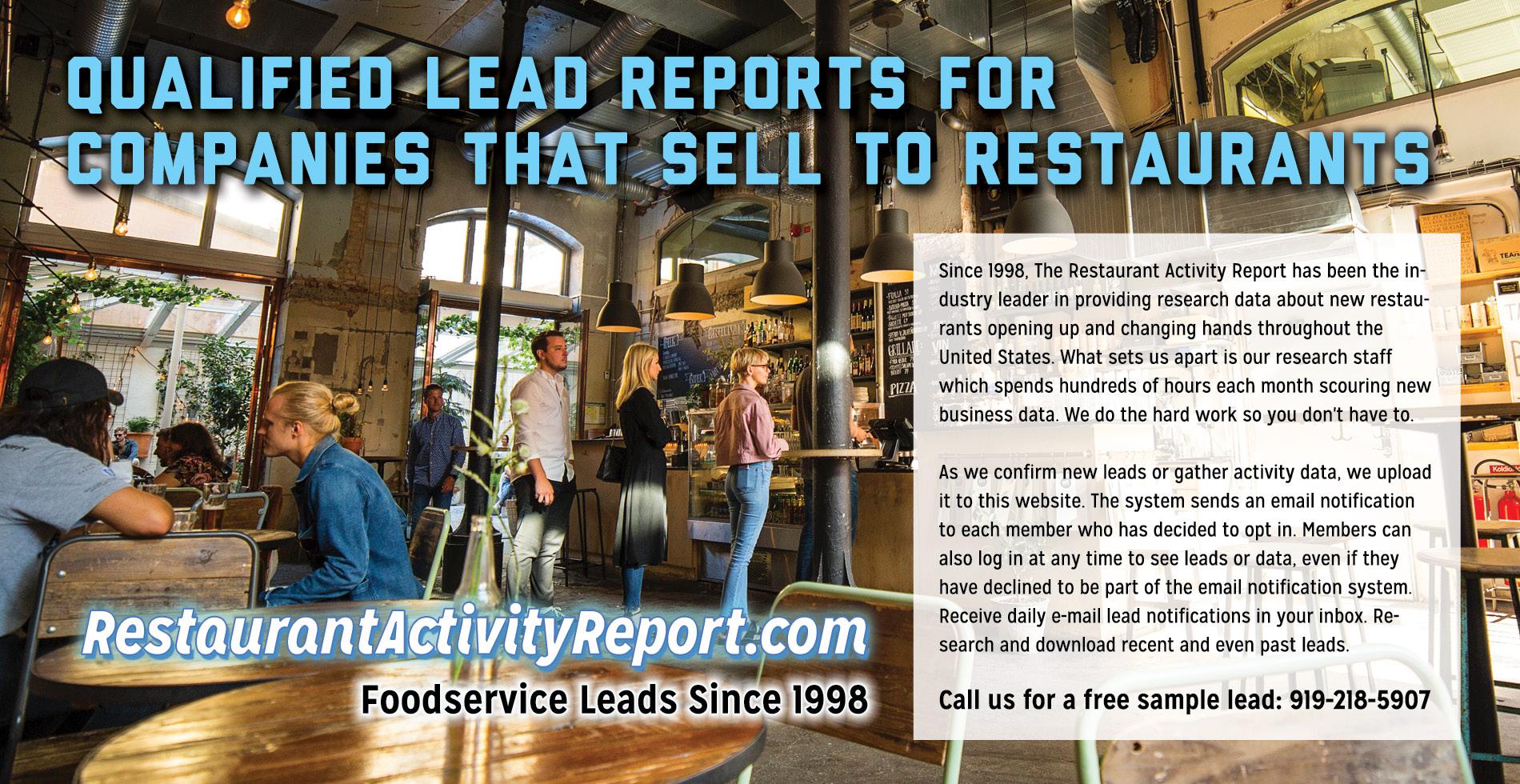

It begins with understanding customer perception through their NPS scores. Additionally, we analyze other metrics, regularly engage with our customers, field and support teams, and study best practices both within and outside our sector. This comprehensive approach helps us prioritize and shape our product capabilities and design. Our teams operate in two-week sprints, consistently delivering incremental value to our customers, ensuring we remain agile and responsive to their needs.
Can you share any specific initiatives or strategies that Imperial Dade has implemented to enhance the online shopping experience for customers?
In addition to the features previously mentioned, let me highlight our newly launched mobile app. It seamlessly integrates all the robust capabilities of imperialdade.com into a user-friendly application on your smartphone. This empowers our customers with instant access to open orders, current deliveries, invoices (both open and past due), and our comprehensive product catalog enriched with high-quality content including images, videos, and AI-driven product recommendations to facilitate product discovery. Moreover, the app includes mobile-specific functionalities such as voice search, barcode scanning for quick product ordering, push notifications for delivery updates, and more enhancements on the horizon.
How important is personalization in meeting the evolving demands of online buyers, and how does Imperial Dade incorporate personalization into its ecommerce platform?
Personalization is paramount to our ability to stay “relevant” to our customers. Upon logging into the new imperialdade.com or our mobile app, the entire experience tailors itself to each customer, emphasizing their interactions and presenting products and services that are pertinent to their individual needs. This customized approach enhances engagement and satisfaction by delivering precisely what each customer values most at their specific point in their journey.
What role does data and analytics play in understanding buyer behavior and improving the ecommerce experience for customers?
A big role. Central to our digital transformation journey is our commitment to being data-driven—relying on facts, not opinions. Data and analytics play a pivotal role in informing our decisions across all facets of our operations. Whether prioritizing features or gauging customer perceptions, we harness analytics at every level to drive our decisionmaking process effectively.
How do you ensure seamless integration between online and traditional DSR visits to provide a unified shopping experience for customers?
Achieving a seamless integration across online and offline experiences is the hallmark of a superior omnichannel approach, and it remains a priority area for improvement within Imperial Dade. Looking forward, our focus is squarely on enhancing integration across three key customer interaction channels: field sales, customer service, and our digital platforms (imperialdade.com and mobile app). Our initial steps involve advancing in the CRM space, collaborating closely with our field sales and IT teams to make significant strides in the months ahead.
What challenges have you faced in adapting to the changing buyer behavior and higher expectations for ecommerce excellence, and how have you overcome them?
As we move ahead in developing and deploying new capabilities for our customers, our most significant challenges frequently arise internally, particularly in evolving our business processes. Achieving the desired customer experience often necessitates substantial changes to these processes, especially those core to our operations, which can be particularly challenging. But we are determined to drive this as we are not looking to just put “lipstick on a pig” by creating a pretty page on top of a suboptimal process!
Where does AI fit as you build out your model?
Everything we do is powered by AI
where appropriate. This includes all aspects from advanced analytics to machine learning to emerging generative AI techniques. We are building out potential use cases to continue to integrate more AI driven capabilities to enhance our digital customer experience.
How do you measure the success of your ecommerce initiatives in meeting the demands of today’s buyers?
First and foremost is customer NPS, a critical metric that serves as a leading indicator for all other customer success measures. While operational metrics like sales, margin, conversion rates, and average order value (AOV) are important, our primary focus is on maximizing our share of wallet with existing customers profitably. Simultaneously, we aim to establish effective strategies for acquiring new customers and expanding our market share.
Looking ahead, what do you see as the future trends and challenges in buyer behavior and ecommerce excellence,
and how is Imperial Dade preparing to address them?
The pace of everything discussed earlier will accelerate significantly in the coming years. Real-time expectations will become the norm, and any lack of seamless integration across channels will be detrimental. The evolution of voice in commerce will be intriguing to watch, with chatbots and virtual assistants poised to exert greater influence. While augmented and virtual reality have yet to gain substantial traction in commerce, their potential impact could shift dramatically in the foreseeable future.
The foremost challenges will revolve around security, compliance with new regulations, integrating sustainability into ecommerce operations, and keeping abreast of evolving technologies. At Imperial Dade, our data-driven, responsive operating model and our dedicated team are pivotal to our ability to deliver value and successfully navigate these upcoming challenges.



cooler because in most spaces whether it’s retail or even in food service typically 60, 70, 80% is refrigerated not actually frozen. Added to that are the farm-totable focused operators and similar entities, so then we developed the cooler as well to have more of a full line.”
In addition to the durability of its products, another hallmark of the Leer line has always been the precise temperature control of its equipment. Albregts attributes this to the design technology which he said incorporated LED lights. “We have electronic controls that you can now specify the exact temperature you want. We have done extensive testing, and we have our own test rooms here where we can change the elements to be hot and humid or cold and dry or anywhere in between and we size our refrigeration accordingly so that depending on what temperature you get you are going to get a different refrigeration package that is special to the desired temperature range.” He added that product testing is compliant according to standards of the Department of Energy (D.O.E.) and NSF, and engineered to specificity to eliminate food spoilage.
Albregts’ vision for foodservice innovation is the result of the vast variety of industries that Leer serves. “We’re a leader in the packaged ice industry. We also do equipment for OEMs for the scientific community, which include specific refrigerated coolers or temperature-controlled applications for scientific research as well as applications for pharmaceuticals testing. We are also developing vending applications and mobile transport.”
Leer also recognizes its obligation to provide products with environmentally sustainable solutions. Albregts boasts that Leer Inc is the first manufacturer in the packaged ice industry that’s operating responsibly in its use of certain refrigerants. “So, it first started with the Hydrofluorocarbon-Free foam that we use to insulate between the metal, as it meets HSC standards and is carbon free,” he explained. “This is crucial to making refrigeration more environmentally friendly as until now, it’s been multiple components causing the ecological problems.”
“Our decision was driven by compliance requirements started by the state
of California, so we followed suit,” he added. “We’re the first in the industry to do that. Also, we began switching to the R290 refrigerant starting in 2019 which is propane based and has the lowest global warming potential. The previous refrigerant 404 was not good for the environment so we made that shift to make R290 available and, after years of testing in our lab, fully transitioned to it at the end of last year.”
After all these years and with plenty of competition, Leer Inc products continue to proudly bear the “Made in America” insignia. “There are some materials that are sourced offshore but there is a formula to which we must comply to be considered American made. So, while we’re not the lowest priced option, we must consider the value proposition and not the price tag. You can buy finished products that are comparable offshore but then you will have to contend with freight challenges and damage, quality concerns, as well as the lack of technical support. If you need a part, we can get you a part the next day. Also, because of the longevity of our products I think most of our customer base is willing to pay a little more knowing that they have something that often lasts decades.”
Leer also understands the speed at which the foodservice industry operates. “We can turnaround a unit in many cases as quickly as in fast 24 hours. We have quite a bit of inventory. We typically peak our inventory in March so most of our popular ice Merchandisers would be available the next day. If we don’t have anything in stock, it’s about anywhere from 7 to 10 days from order,” Albregts concluded.
To learn more about Leer Inc’s new outdoor reach-ins, you can contact their customer service team directly. Visit their official website at leerinc.com, where you’ll find detailed product information and a contact form. For immediate assistance, you can call their customer service hotline at 1-800-766-5337. Additionally, you can reach out via email at info@ leerinc.com. Follow them on social media for updates and announcements regarding their latest products and innovations in outdoor refrigeration solutions. Their team is ready to provide you with all the information and support you need.
also reported cases where individuals, such as a student from Brown University, made substantial profits—up to $100,000 over 19 months—by selling reservations to high-demand dining spots.
With the passage of the Restaurant Reservation Anti-Piracy Act, New Yorkers can look forward to a more equitable reservation system. The bill’s proponents believe it will significantly reduce the number of fraudulent and bot-made reservations, ensuring that diners have a fair chance at booking a table without facing exorbitant fees or competing with automated systems.
Lady Marmalade, who handles reservations at Dame, a seafood restaurant in Greenwich Village, expressed hope that the new legislation will alleviate some of the challenges faced by popular restaurants. “Prime-time slots get snatched within minutes of their being released on Resy,” she said. “And though I have no way of knowing whether it’s bots or eager diners snatching them up, I can only
hope the passage of the act helps.”
As New York awaits Governor Hochul’s signature on the bill, the hospitality industry and diners alike are optimistic about the positive changes it promises to bring. There has been a drastic increase in predatory software flooding the online restaurant reservation marketplace, forcing some consumers to turn to an unauthorized market that takes advantage of restaurants. The Restaurant Reservation Anti-Piracy Act aims to address this rapidly growing problem by requiring third-party online reservation platforms to enter into a written agreement with restaurants before being able to list reservations on their website, mobile application or other platform. This legislation is the first of its kind in the nation to be passed at the state level. By curbing the resale market for restaurant reservations, the Restaurant Reservation Anti-Piracy Act aims to restore fairness and accessibility to the dining experience in New York City.
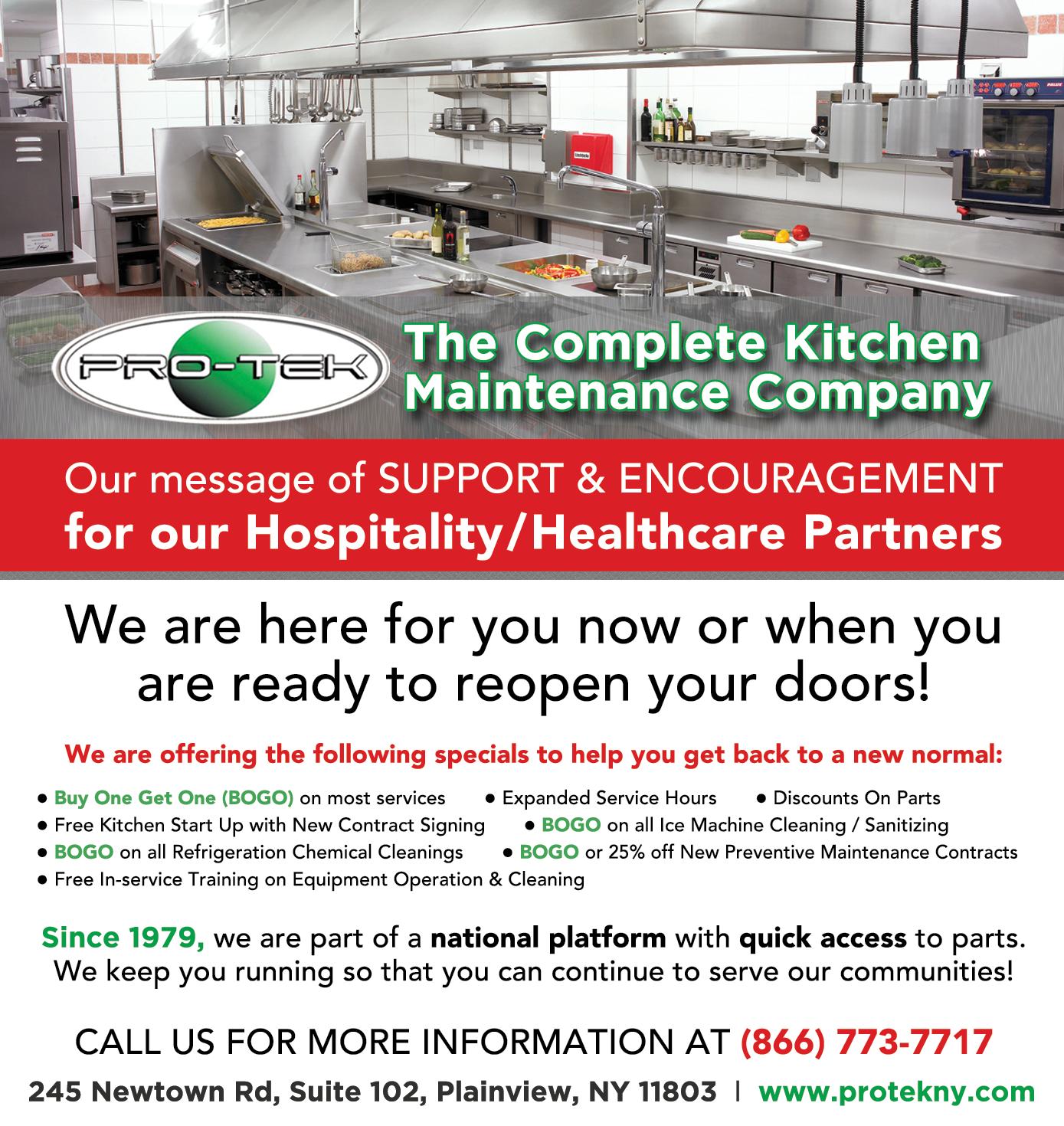

ucts. Their offerings include Rich’s Double Zero “00”-style flour products (which mimics the flour grown and milled in Italy); a gluten-free DetroitStyle crust that, when customers sample, “they swear it isn’t gluten-free,” Reeves-Collins claimed; and several cauliflower-based crusts for a more health-conscious crowd.
Reeves-Collins also highlighted the company’s infamous and versatile dough ball, which can be flattened into pies, folded into calzones, swirled into cinnamon rolls, or molded into any other form that suits the operator’s needs and the consumers’ tastes. “One of the most amazing products that Rich’s invented was our Fresh ‘N Ready pizza dough that operators can take directly from the freezer and sauce it, cheese it, top it, and pop it into the oven and deliver on an amazing pizza experience every time,” Reeves-Collins simplified.
Most recently, Rich’s added two sizes of an Italian Pinsa (pronounced “peensa”) to its portfolio. The team first en-
countered the Pinsa after attending a food show in Germany, where they “almost couldn’t find a regular crust; it was all Pinsa,” Reeves-Collins said.
“We agreed that, as a leader in pizza, we needed to build out our Authentically Italian product roadmap. So we went to ‘ground zero’ and took the product development team to Rome, Italy, and ate Pinsa at countless locations. You might envision Italy as the home of pizza and assume they’ve discovered everything by now, but the Pinsa has taken Europe by storm.”
The Pinsa crust utilizes “a very different high-hydration formula with lots of ferment time and a couple of different flours, not just wheat; it’s usually a wheat and rice combination, or wheat, rice, and soy flours, and these combinations create a very unique texture,” Reeves-Collins explained.
The result is “a very different experience for consumers,” she contended.
“You’ll know it’s an authentic Italian variety when you eat it. It’s thicker than a traditional-style pizza with a
large, open-cell structure, resulting in a crust that’s crispy on the top and bottom with a buttery middle. The crisp exterior and tenderness in the middle really bring the Pinsa together.”
As evidenced by their most recent international travels, the Rich’s R&D and product development team aims to “fill in and expand, innovate and be first to market, and ultimately be a leader in the pizza niche,” ReevesCollins said. “We do this by listening to customers, deeply understanding the consumer trends, attending and presenting at shows, and continuously developing our robust network of frozen dough capabilities. One area where we excel is our ability to match any operator’s formula, and to help them with a more convenient frozen format that can create the same experience for their customers – conveniently, consistently, and with less waste. There is no company that does this better!”
“More today than ever before, operators face many challenges from reduced demand driven by inflation,
labor costs, and availability, and they need to focus on inspiring customers to come more frequently. Rich’s helps operators do this with our convenient products and innovation. Working with operators to help streamline their operations with our convenient, authentic products are not only driving demand, but they are also improving operators’ bottom lines. It is really rewarding work,” Reeves-Collins envisioned. “As a foodservice provider, we listen to every segment in the industry with an emphasis on the consumer, because they’re the people who ultimately purchase and repurchase the product. Rich’s job is to ensure that it works for our operators and that our pizza products maintain the quality and experience that keep consumers coming back.”
For operators and distributors seeking more information about Rich’s pizza portfolio and other food products, begin by visiting the pizza section of their website: RichsUSA.com/pizza


expertly grilled meats, including beef, seafood, pork, chicken, and lamb, and the opulent 24-karat Golden Steak.
Bobby’s Burgers by Bobby Flay, a fast-casual burger restaurant chain from the celebrity chef, officially opened its first traditional unit in Charlotte’s SouthPark area, bringing fries, onion rings and shakes. The store will serve as headquarters, training center, and test kitchen for the brand as it moves further into the franchising space. The chain’s seven other locations are all inside casinos (Las Vegas, New Orleans, and Atlantic City, N.J.), stadiums (Yankee Stadium in New York), and airports (Phoenix), but streetside restaurants and franchising are going to be a priority going forward.
The St. Regis Longboat Key Resort, the only St. Regis launching in the U.S. this year and the largest development on the island in over 50 years, introduces two leadership appointments to the culinary team, Food & Beverage Director, Melih Eker, and Executive Chef, Alberto Taboada. Together, they will helm the resort’s seven distinctive dining venues. Executive Chef Taboada previous experience includes Restaurant Chef at the Marriott Seaview Resort & Spa and leadership roles at Marriott Louisville Downtown and JW Marriott Orlando, Grande Lakes. Notably, at JW Marriott Orlando, Chef Taboada oversaw culinary operations for a 900-room luxury resort, emphasizing concept development, leadership, and guest service excellence. His dynamic leadership and adept team-building skills consistently deliver remarkable dining experiences, reflecting his passion for culinary innovation and commitment to excellence. Eker most recently excelled as Director of Food & Beverage at The Ritz-Carlton, St. Thomas, US Virgin Islands, where he managed outlet operations, orchestrated special events, and consistently achieved substantial revenue goals. His extensive experience in ensuring exceptional guest satisfaction perfectly complements the resort’s dedication to providing unparalleled dining experiences and innovative culinary offerings.
The James Beard Foundation’s Chef Bootcamp for Policy and change provides a unique opportunity for civically and politically minded chefs to become more effective leaders for industry and food-system change.
During thematic retreats around the country, participants receive advocacy and media training while learning about important issues, policies, challenges, and opportunities facing the food system. Each Bootcamp includes: A geographically, culturally, and demographically diverse group of chefs, educational sessions and media training by industry and political experts on specific food system topics, hands-on activities that engage chefs with local natural resources, a collaborative dinner prepared by the participating chefs, strategic brainstorming about effective actions, and more. The application for the Fall 2024 Bootcamp closes on Monday, August 12 at 11:59 P.M. PT. https://jamesbeard.tfaforms. net/4931576
Selected applicants will be notified the week of August 26. Applicants from rural Congressional Districts are particularly encouraged to apply. Priority will be given to chefs who own restaurants. The Fall Bootcamp will take place October 27-29 in Carnation, Washington.
SCOOP knows that Chef Evan Hennessey is passionate about creating a positive experience in the kitchen and teaching the next generation of great chefs. So the 2014 James Beard Semifinalist and 3x Chopped Champion has launched Staging at Stages, a brand-new staging experience where one chef will be selected each quarter to work alongside Chef Evan to learn how to plan, prep, and execute three dishes for an exclusive ticketed tasting menu experience at Stages at One Washington in Dover, New Hampshire.
As someone who has staged in kitchens across the country and has continuously monitored what staging looks like around the world, Chef Evan is eager to offer a reinvented version of the stage experience in his very own kitchen. Chefs who apply and are selected will commit to a minimum of five days (could be more if needed) throughout one quarter of the 2024 year to learn the ins and outs of what it takes to run a fine dining restaurant, how to develop and execute a multi-course tasting menu, how to interact and explain the courses to the guests, and more. The selected chefs will receive a fully complementary menu tasting at Stages at One Washington on the very first day of the program and will walk away with 50% of the profits made on the evening where the guest chef’s menu is available to the public. Staging at Stages is completely free for chefs to apply to as the application is available through Google Forms, which opened to the public to apply in November. Staging at Stages is only open to chefs between the ages of 20 and 30, and only one chef will be chosen to participate in each 2024 quarter. Local and regionally-

based chefs are encouraged to apply as housing will not be provided, but anyone interested can apply at (click link): https://docs.google.com/forms/d/e/ 1FAIpQLSeMUT2NYPFWmojHU4WUiJ_LJkgWzmn2ICSTA4D6vTolrnufYA/viewform
Since launching the program in November, they’ve received applications from chefs who are based in Minnesota, New Jersey, New York, Maine, Ohio, and more. Their first stage, who was from Saratoga Springs, presented his menu to the sold out crowd in March. The second chef, who was from Vermont, presented his menu to a sold out crowd in June.
In the Seacoast town of Dover, Evan Hennessey has been spearheading the fine dining game for over a decade. After stints in renowned restaurants in New York City and Chicago, Hennessey returned to his hometown of Dover to open Stages at One Washington: A 6-seat chef’s counter menuless tasting menu experience that showcases the bounty of ingredients native to New Hampshire that are influenced by and prepared with traditional Scandinavian and Japanese techniques.
With a focus on sourcing locally instead of outsourcing, Hennessey often visits the farms himself to check the quality of the ingredients before bringing them back to the kitchen; When he can, Chef Evan also harvests seaweed, Maine Sea Urchin, and Sea Truffles (Red Algae), to name a few, which all get used in a variety of ways in his tasting menu, including Chawanmushi made with Sea Truffles and peanuts, and Maitake Mushroom glazed in a decadent Maine Sea Urchin sauce. The 6-seat chef’s counter provides Evan and his small team of two to interact with their guests, explain the backstory behind the dish, share where the ingredients were sourced from, and, of course, see their guests’ reactions to each and every delicious bite.
The Living Room, Stage’s more cozy cocktail lounge counterpart, operates under the same roof and offers an elevated light bites menu that showcases some of the same flavors and techniques found in dishes at Stages, along with an extensive wine list, cocktails, mocktails, and Omakase creations handcrafted by Bernadette James, the fantastic in-house Certified Sommelier with the Court of Master Sommeliers.
